
- Food & Drink
- How to Plan
- Shore Excursions
- Onboard Activities
- What to Expect

Places to Cruise Without a Passport
By Carnival Cruise Line
The Bahamas
New England and Canada
- The Caribbean
Baja, Mexico
As luck would have it, you’ve suddenly got a few open days in your schedule and a yearning to travel somewhere exotic. Don’t let your lack of a passport stop you. Consider a cruise . If you take closed loop cruises (meaning your trip begins and ends at a U.S. port), you can sail to a variety of dreamy destinations as a U.S. citizen without a passport.
For “closed-loop” cruises, U.S. citizens will need to provide:
- A boarding pass
- A government photo I.D. if 16 years of age or older
- And a certified birth certificate or certificate of U.S. naturalization
Starting and ending in Seattle or San Francisco, an Alaskan cruise takes you to charming waterfront cities and villages like Juneau, Skagway and Ketchikan. In Alaska, also known as the Land of the Midnight Sun, you can see spectacular, icy glaciers by boat or seaplane, watch for whales and try your hand at dog sledding.
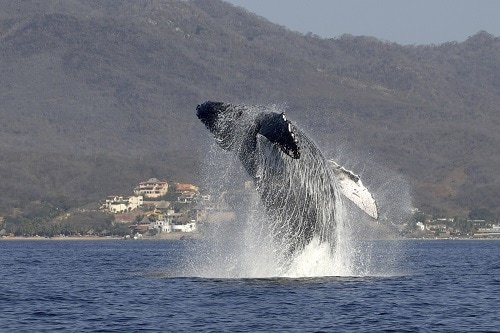
A stop in Victoria, British Columbia offers a whole new set of adventures. Visit castles, take a ride on a horse-drawn trolley, stroll through beautiful Butchart Gardens or get your fill of shopping and dining downtown. When you arrive back in Seattle or San Francisco, take time to explore those cities for even more vacation fun.
You can cruise to The Bahamas from a number of U.S. ports along the Atlantic Coast. Located just southeast of Miami in the Atlantic Ocean, The Bahamas offers an ideal island getaway. With soft-sand beaches, vibrant coral reefs, and pastel-colored British colonial architecture , the Bahamian capital of Nassau makes a popular port of call for cruisers. In Freeport , you can shop till you drop at the Port Lucaya Marketplace or kayak through the mangroves at Lucayan National Park. At the south end of the island of Eleuthera, Princess Cays offers island resort living at its finest.
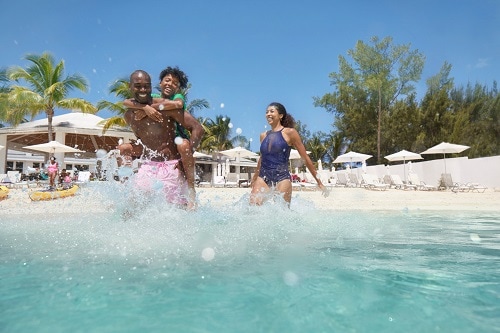
If you’re looking for cruises that don’t require a passport, take a round trip sail to Bermuda from New York City , Baltimore , Charleston or one of two Florida ports of call. As Britain’s oldest colony, Bermuda offers wonderful historic attractions and plenty of opportunities for fun in the sun. Pink-sand beaches, beautiful blue waters and colorful coral reefs deliver the perfect recipe for sunning, swimming, sailing and snorkeling. Cap off a day of adventure in Bermuda with a sunset rum-tasting cruise .
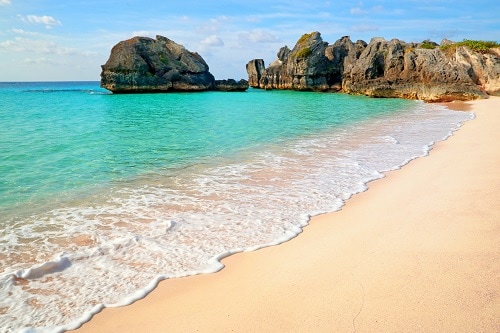
If you’re looking for a different kind of cruise, explore parts of New England and Canada with New York City as an exciting starting and ending point. Spend a day soaking up history in Boston, Massachusetts, and tour the Charles River aboard an amphibious duck vehicle. Experience lighthouses, lobster bakes and craggy sea cliffs in Portland, Maine, and enjoy a trip to Saint John, a beautiful city on the Bay of Fundy in New Brunswick, Canada. A stop in the charming fishing village of Halifax, Nova Scotia offers beautiful gardens, more delicious seafood and double-decker bus tours . After you pull into port in the Big Apple, make sure to see a Broadway show, visit the Empire State Building and take a stroll through Central Park.

The Caribbean
The Caribbean makes a popular destination for travelers considering a tropical cruise. For an easy round trip, you can begin and end in a number of U.S. cities including New York City, Galveston , Mobile , New Orleans and Tampa .
Western Caribbean locales in Mexico like Yucatán and Cozumel deliver exciting attractions, from ancient Mayan ruins to flamingo lagoons, and activities like swimming with dolphins, dune buggy rides, sailing, snorkeling, diving and zip lining.
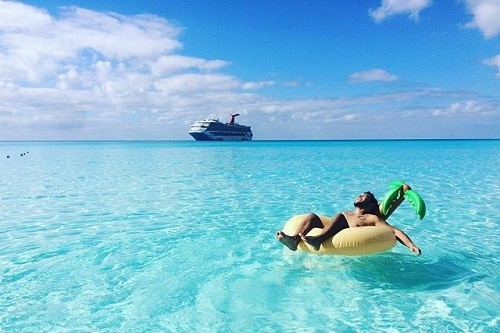
In the Eastern Caribbean, find dream destinations like Amber Cove in the Dominican Republic and Grand Turk in the Turks and Caicos archipelago. In Amber Cove, you can tour the Dominican outback, soak up the sun on Coconut Cove Beach, or ride the Waterfalls of Rio de Damajagua . On Grand Turk, enjoy swimming with stingrays, riding horses along the coast, or touring the island by ATV. The opportunities for adventure on a Caribbean cruise are endless.
When it comes to domestic cruises, nothing beats a trip to Hawaii . Explore beautiful spots spread across Maui , Kauai and the Big Island, and drink in the natural beauty only Hawaii delivers. On this exciting trip, you can deep sea fish for marlin, explore forest caves and waterfalls, soak up the sun on a black-sand beach and attend a traditional luau. U.S. departure ports for enjoyable Hawaiian cruises include San Francisco , San Diego , Long Beach and Honolulu .
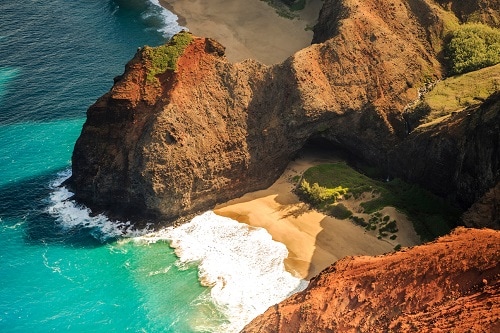
Depart from the Californian cities of San Francisco, San Diego or Long Beach for a quick but memorable cruise to the Baja Peninsula in northern Mexico . Along the way, stop by Catalina Island for a day packed full of outdoor enjoyment . Kayak in and out of secret coves, zip line through the trees or try parasailing. In Ensenada , the “Cinderella of the Pacific,” you can ride horses along mountain trails, tour the wine country, shop for souvenirs and taste the local tequila.
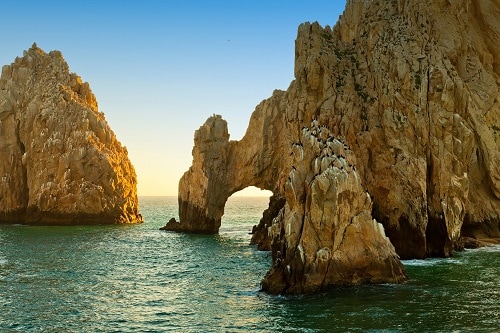
When traveling outside of the U.S. a passport is always recommended, but cruises are the exception to the rule. As long as you book a closed loop cruise, you can travel to certain destinations without a passport. Because international cruises in Europe and Asia require air travel, these vacations also demand a passport. When embarking on adventures by sea that don’t require a passport, make sure you have the proper cruise documentation.
Note: Onboard activities, shore excursions, and dining options may vary by ship and destination.
Related articles
Plan for fun.
https://www.carnival.com/cruise-from.aspx
Celebrity Blog
- Choosing a Cruise
- Planning / Booking A Cruise
- Preparing For Your Cruise
- Special Occasions
- What To Expect On A Cruise
- Australia, New Zealand & the Pacific
- Central America
- East Coast & Bermuda
- Mexican Riviera
- South America & Antarctica
- Destinations
Closed-Loop Cruises: Everything You Need to Know
By Sue Bryant
Last updated: November 6th, 2023
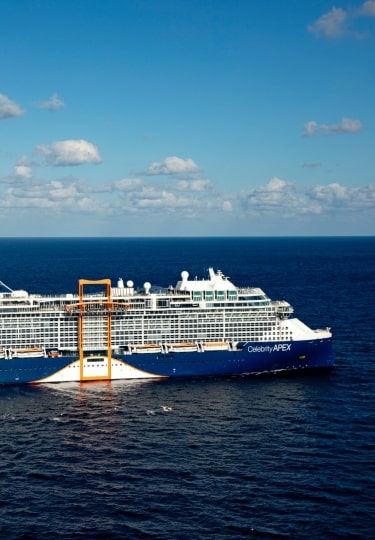
- Find a Cruise
Have you ever found yourself with a few days to spare and an overwhelming desire to escape to the balmy Caribbean, or on an Alaskan adventure, then realized that you don’t have a passport, or your passport has expired? As a U.S. citizen, you can take advantage of the convenience of what’s called a closed-loop cruise—with no passport required.
What is a closed-loop cruise?
A closed-loop cruise is a cruise that departs and ends in the same U.S. port, for example, Fort Lauderdale to Fort Lauderdale, or round-trip to Alaska from Seattle.

Prospect Point in Stanley Park, Vancouver
These cruises have to meet certain criteria to qualify. Every voyage on a ship that’s not U.S. flagged, departing from and returning to a U.S. port must, according to maritime law, visit one foreign port of call. This is why you’ll find Alaska cruises stopping in Vancouver, or Western Caribbean cruises calling in at Cancun.
To qualify as closed-loop cruises, the places these itineraries can include must be contiguous territories of the United States. That includes Mexico and Canada, because both share land borders with the U.S., and several of the islands of the Caribbean .
Do I need a passport for a closed-loop cruise?
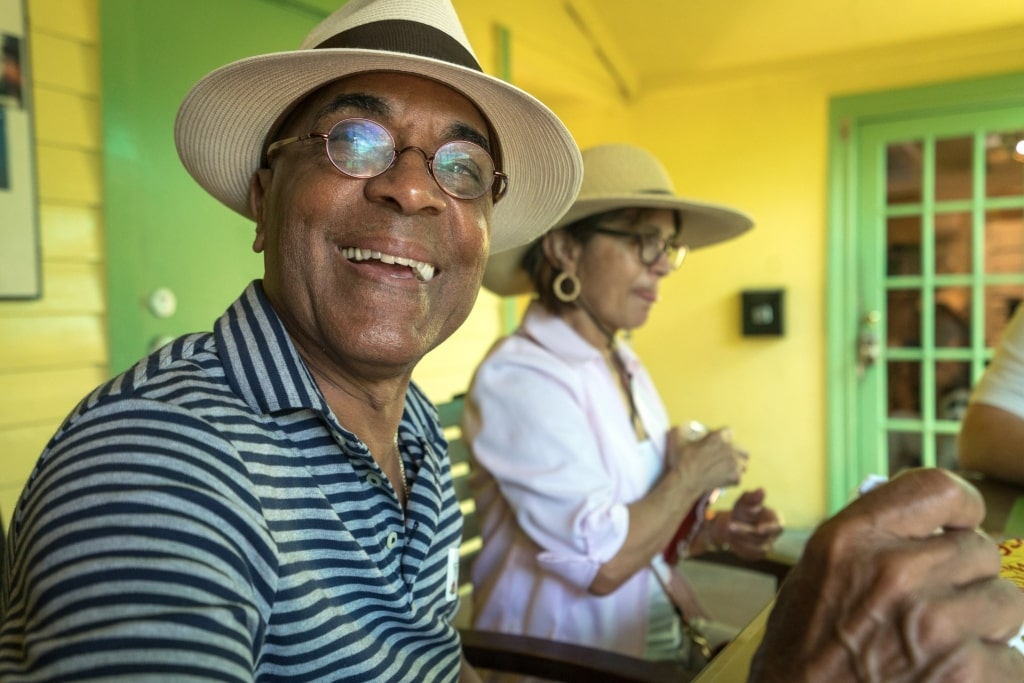
Key West, Florida
In most cases, you don’t need a passport for a closed-loop cruise. This is one of the reasons why these itineraries are so popular. You can, of course, use your passport or passport card as an ID if you have one. But in the case of closed-loop cruises, U.S. citizens are allowed to enter or depart the country with proof of citizenship.
According to U.S. Customs & Border Protection, this includes an Enhanced Driver’s License, which is a state-issued driver’s license that provides proof of identity and U.S. citizenship; a government-issued birth certificate (issued by the Vital Records Department in the state where the person was born) or passport; and if 16 or older, a government-issued driver’s license or picture ID denoting photo, name, and date of birth.
The Enhanced Driver’s License allows you to re-enter the U.S. from Canada, Mexico, and the Caribbean and is valid at land and sea border crossing but not airports.
Different documentation is acceptable for minors under 16, including an original, notarized, or certified copy of their birth certificate, a Consular Report of Birth Abroad, or a Certificate of Naturalization. Voter registration cards and Social Security cards are not considered proof of citizenship.
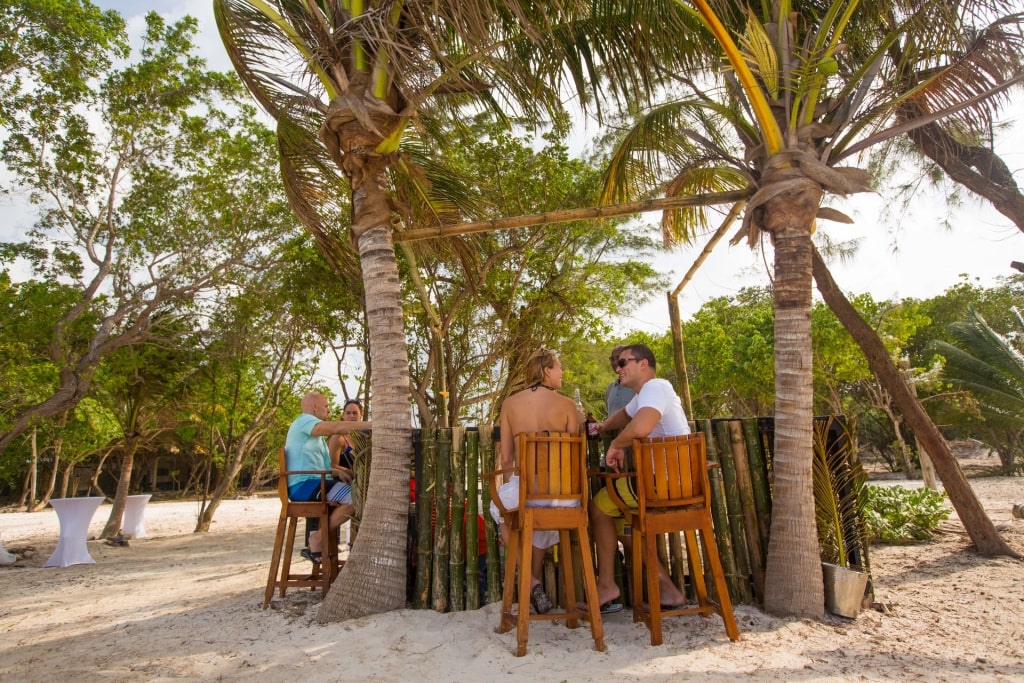
Falmouth, Jamaica
There are different rules still if you’re a Lawful Permanent Resident (LPR) of the U.S. While the U.S. government does not require you to have a passport, destinations on the itinerary may have different rules, so it’s always advisable to check. If you are an LPR, you’ll need your I-551, or Green Card, to re-enter the U.S. And if you’re not a U.S. citizen or a U.S. LPR, you’ll need a passport regardless of whether you’re on a closed-loop cruise or not.
If you do choose to take advantage of this opportunity to travel without a passport, there are a couple of warnings to bear in mind. Say, for example, something goes wrong and you have to return to the U.S. by air. In this case, you’d need a passport to board a flight.
Also, if you miss the ship in one of the ports, you’ll have to make your own way home or to catch up with the cruise, which could be difficult without a passport. If you book an excursion through Celebrity Cruises, that won’t happen, since the ship is guaranteed to wait for you.
What are some of the best closed-loop cruise itineraries?
Fort lauderdale to bahamas, mexico and grand cayman.
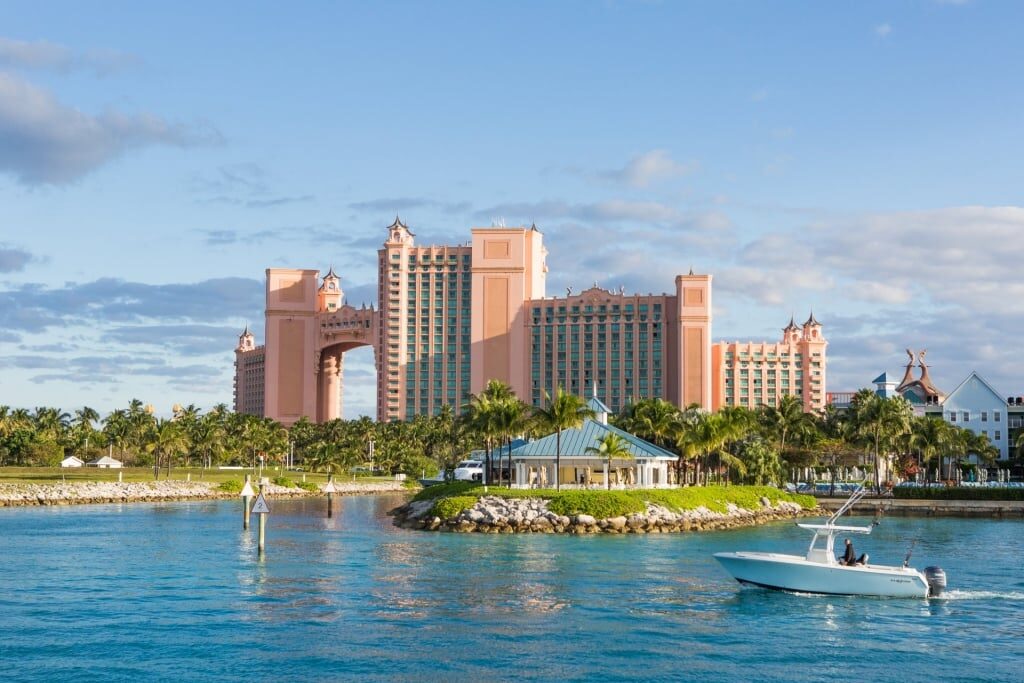
Atlantis Resort in Nassau, Bahamas
Cruise from Fort Lauderdale on the fabulous Celebrity Edge, one of the most innovative and impressive ships afloat, bound for the Bahamas and the warm, blue waters of the Caribbean. You’ll spend a day in colorful Nassau, on New Providence Island, with plenty of time to hit the powder-sand beaches, snorkel over dazzling reefs, shop for crafts in the Straw Market, or enjoy an adrenaline rush on one of the dramatic water slides at the glitzy Atlantis Resort.
After a day at sea to enjoy the ship and its magnificent Resort Deck, you’ll arrive at Puerto Costa Maya, Mexico . A vast array of choices beckons here, like relaxed tubing at the freshwater Bacalar Lagoon, where you’ll drift over cenote-fed water that’s an astonishing shade of aquamarine.
Or you could try rafting, sail-and-snorkel tours, and even a healing session with an authentic shaman. There’s Mayan history here, too, at the Chacchoben Ruins, a short drive from the port.
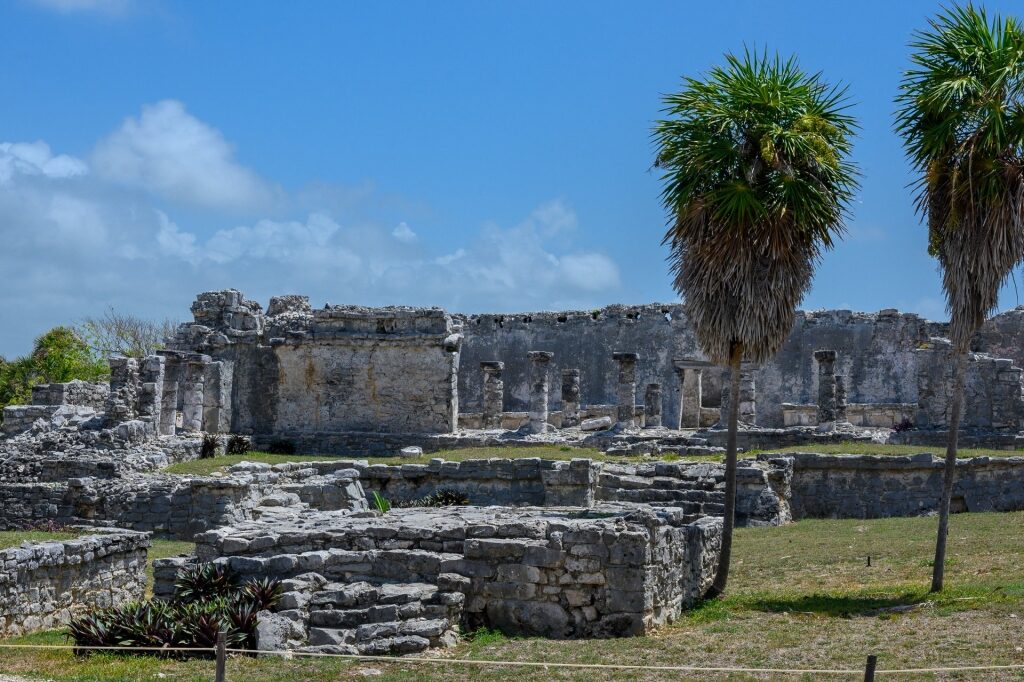
Watch: Discover Cozumel With Celebrity Cruises
From Cozumel , you could join an excursion to the magnificent Mayan ruins at Tulum set against a backdrop of the turquoise sea. Try a salsa and margarita-making masterclass, or paddle a glass-bottomed kayak over rainbow-colored reefs.
This seven-night cruise also calls at Grand Cayman , where you can experience dazzling white beaches, pristine reefs, and unusual wildlife encounters, like swimming among stingrays in the warm, shallow waters of Stingray City.
Browse Caribbean Cruises on Celebrity Edge
Seattle to Alaska, the Inside Passage, and Dawes Glacier
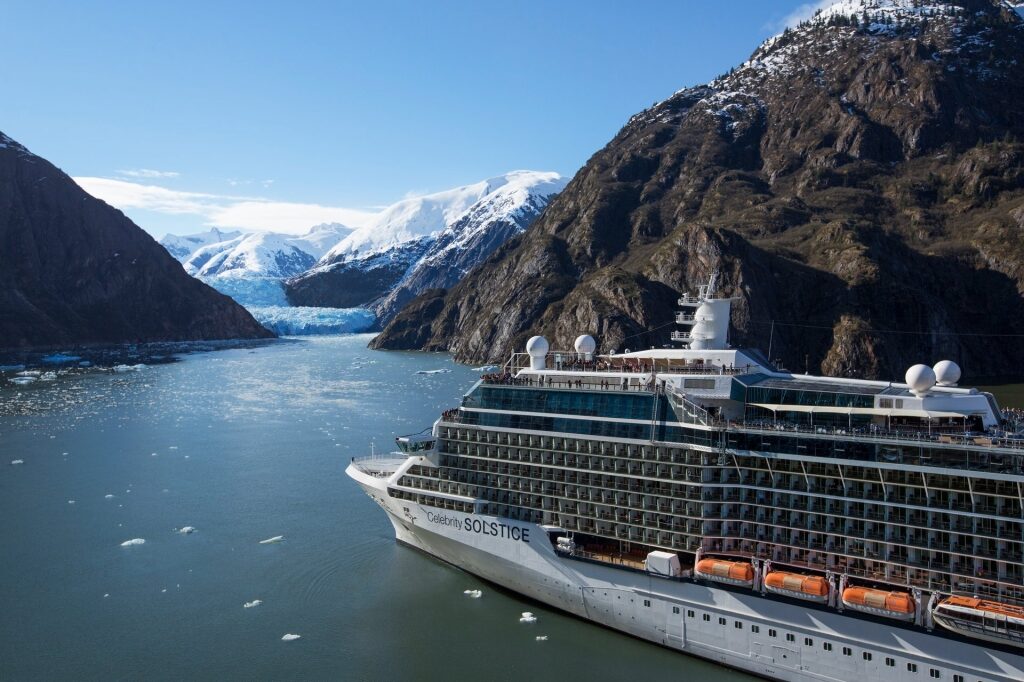
Celebrity Solstice
Spend seven nights exploring the wild beauty of Alaska on Celebrity Solstice , the perfect ship for such dazzling scenery, with its abundance of outside space and top-deck Lawn Club.
You’ll visit pretty Ketchikan, from where you could join a bear-spotting tour, try kayaking, join an expedition to fish for king crab, or just explore the colorful town. Next, there’s a full day slowly cruising the 30-mile Endicott Arm Fjord , past tumbling waterfalls and chunks of floating ice that have broken off the magnificent Dawes Glacier, a 600-foot tall wall of blue-white ice. The spectacle of this vast river of ice meeting the sea is a highlight of the day.

Mendenhall Lake in Juneau, Alaska
You’ll also visit Juneau , the perfect spot for whale-watching, hiking, and thrilling flightseeing trips over snow-covered mountains. In Skagway, you’ll have the chance to ride the spectacular White Pass and Yukon Route railroad, heading high over rugged passes, following the trail of hardy prospectors from the Gold Rush days.
As Celebrity Solstice heads back to Seattle, there’s a day on board to relax as the ship threads its way through the narrow channels of the Inside Passage , between forested islands and rock-strewn beaches, with great opportunities for spotting whales and bears from your vantage point on deck.
There’s also a call at historic Victoria on Canada’s Vancouver Island, where you can experience a pleasing blend of elegant, British colonial architecture, cool shops, and craft breweries before you return to Seattle.
Browse Alaska Cruises on Celebrity Solstice
Los Angeles to the Mexican Riviera
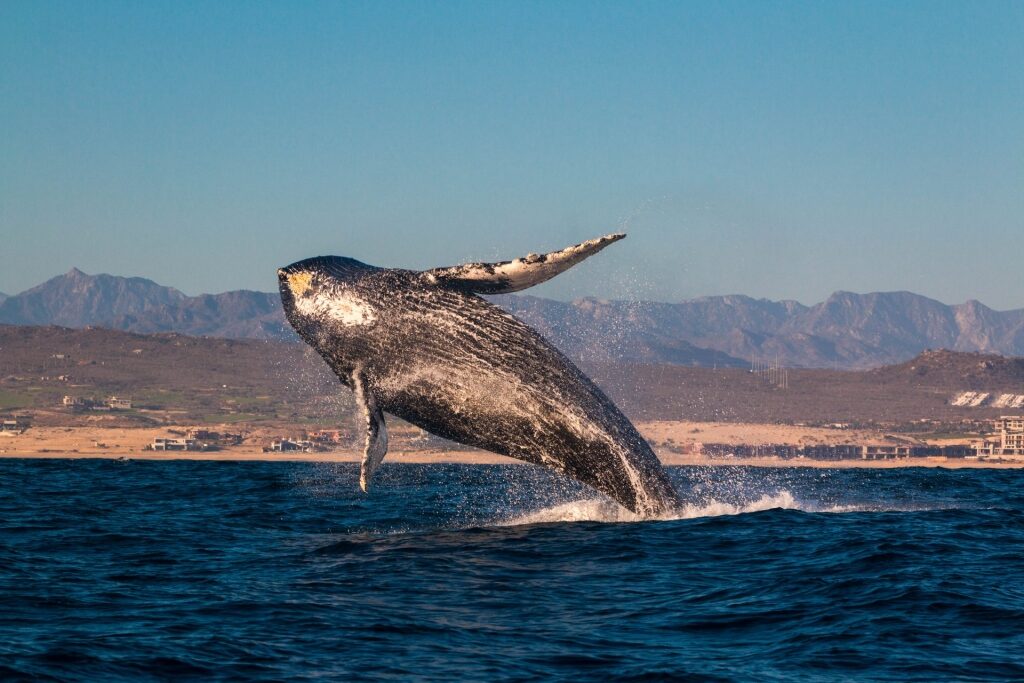
Watch: Discover the Mexican Riviera With Celebrity Cruises
Sail round-trip from Los Angeles to the glamorous Mexican Riviera on the recently revolutionized Celebrity Millennium. From buzzing Puerto Vallarta, you could join a whale-watching tour, browse the arty stores, or kick back at the beach to enjoy the soft sand and azure waters of the Pacific.
At Cabo San Lucas , there’s more whale-watching along the wild, rocky coast, or watersports ranging from kayaking to snorkeling. Explore the Art District and old adobe buildings in nearby San Jose del Cabo, or explore the Baja desert on a 4×4 off-road adventure.
Read: Where to Go Whale Watching in Mexico
From Ensenada, you could snorkel over underwater rock formations at Todos Santos island, or join a wine tasting tour to Calafia Valley, Mexico’s wine-growing region. Closer to port, join a walking tour of the cosmopolitan town to sample tequila and tacos .
Read: Best Things to Do in Ensenada
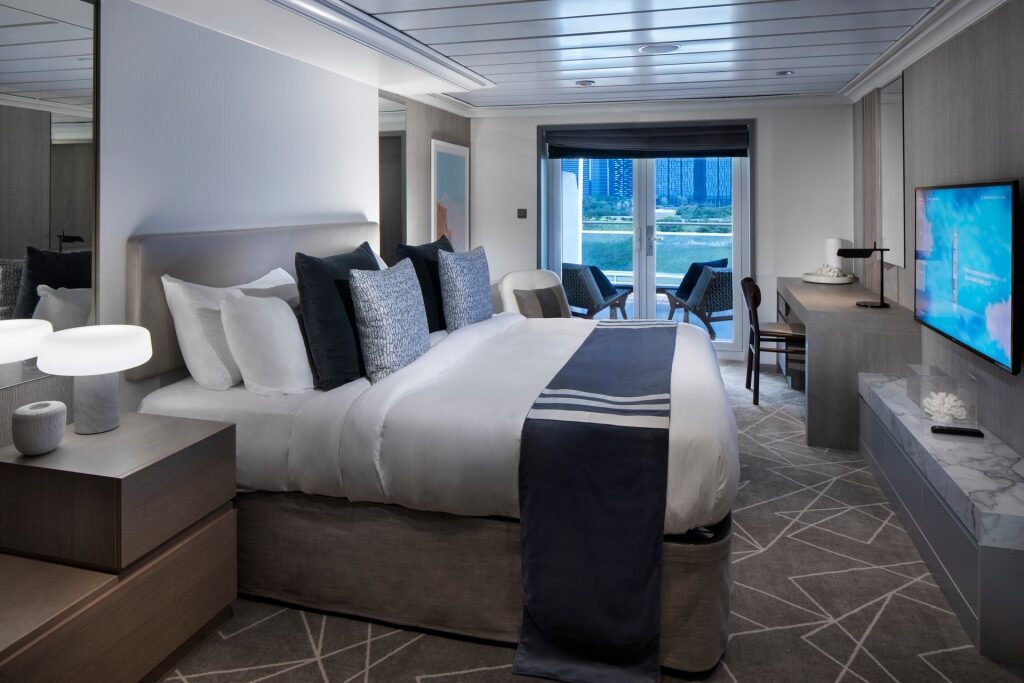
Celebrity Millennium Suite
You’ll have three full days at sea on this itinerary to soak up the Pacific sunshine and enjoy Celebrity Millennium . Why not upgrade to The Retreat for a true taste of luxury? You’ll enjoy a luxurious suite and dine in the beautiful, fine dining Luminae restaurant, exclusive to guests of this tranquil enclave.
Browse Mexican Riviera cruises on Celebrity Millennium
Fort Lauderdale to Key West, Belize, and Grand Cayman

Set sail from Fort Lauderdale on the brand new Celebrity Apex , the second in Celebrity Cruises’ award-winning Edge series. You’ll spend a day at quirky, colorful Key West, where you can try stand-up paddleboarding or join a cycling tour through the palm-lined streets of this happily eccentric place. Explore Ernest Hemingway’s former home, and don’t miss a chance to sample the island’s iconic key lime pie.
Tropical Belize is all about adventure, from cave tubing to ziplining high above the rainforest canopy. Mayan antiquities have been absorbed by the forest, making their setting even more dramatic. Visit mysterious Lamanai, one of Mesoamerica’s largest ceremonial sites, or join a tour to the ancient hilltop ruins of Xunantunich and the temple of El Castillo.
Read: Unforgettable Adventures in Belize
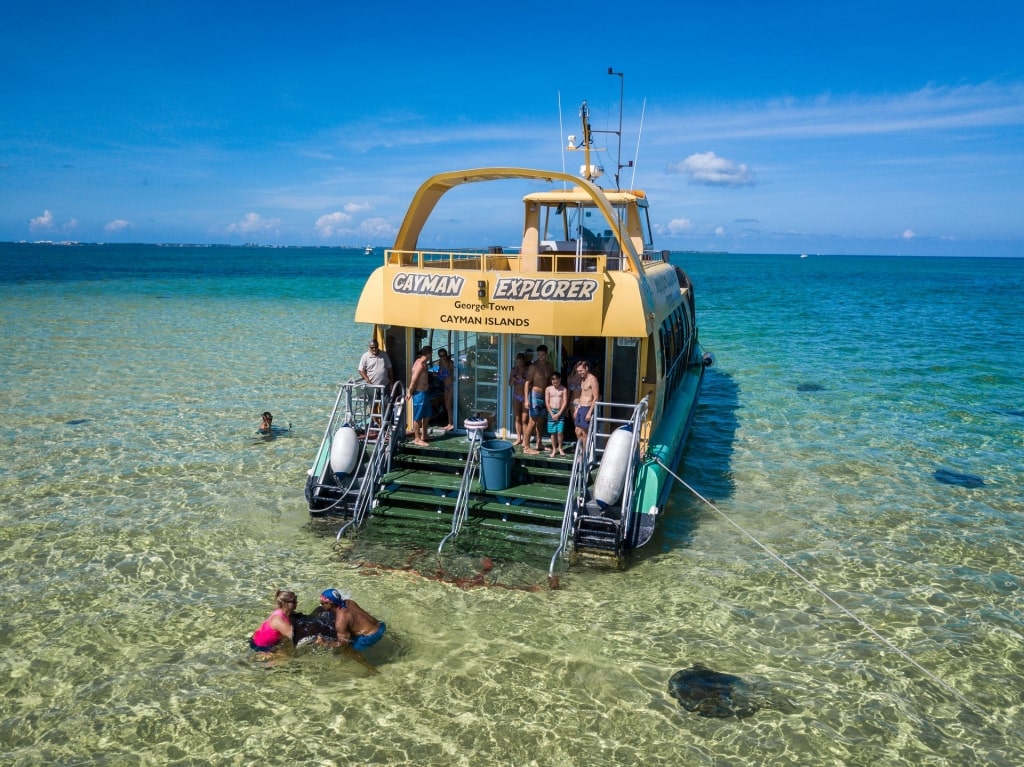
Stingray City in George Town, Grand Cayman
This cruise also visits the beach paradise of Cozumel , for all manner of watersports, shopping, and sizzling Mexican cuisine. There’s even a chance to join a taco-making class.
Celebrity Apex then sets a course east to the island of Grand Cayman, famed for its magnificent beaches and marine life, like the tame stingrays that congregate around the Stingray City sandbar waiting to be fed tidbits of squid.
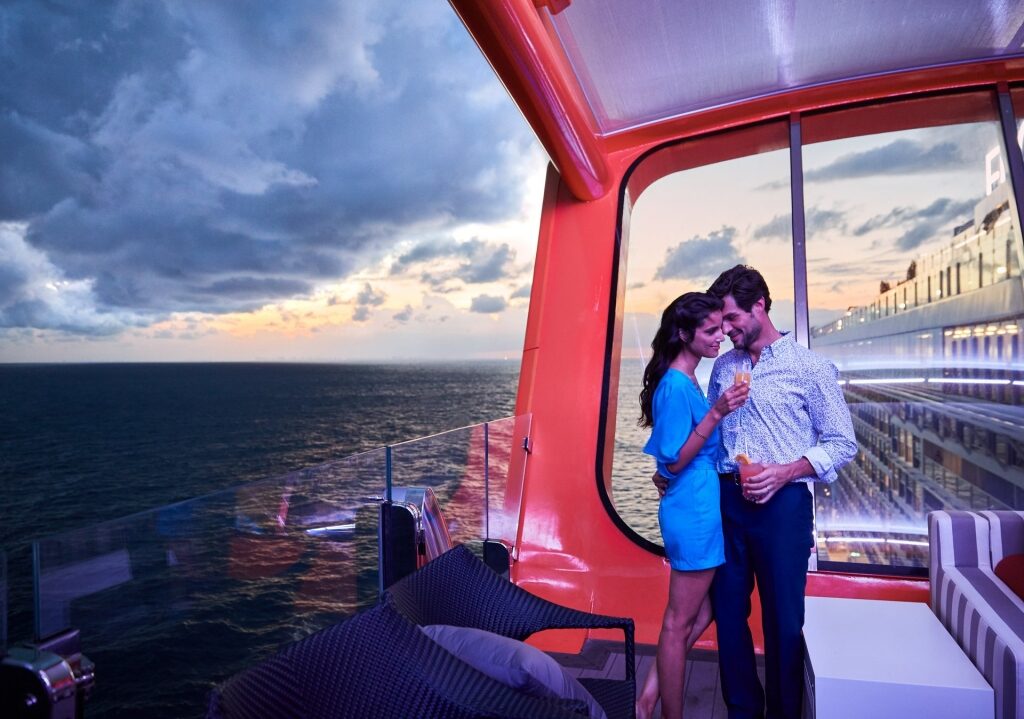
Celebrity Edge Magic Carpet
You’ll have one more day at sea to soak up the tropical sun on deck and enjoy the many features of the ship. Lounge at the Magic Carpet with a cocktail; this multipurpose platform is cantilevered over the side of the ship, with water on three sides, so you’ll feel as though you are flying. Or relax in the leafy serenity of Eden, or dine al fresco in the lovely Rooftop Garden Grill.
Browse cruises to Key West, Belize & Grand Cayman on Celebrity Apex
Cape Liberty to Bermuda
Charge your champagne glass and raise a toast to Lady Liberty on this seven-night voyage from Cape Liberty, New Jersey to chic Bermuda and back. As your ship, Celebrity Summit, edges out of port, you’ll have magnificent views of the Manhattan skyline as you sail right past the Statue of Liberty and then out under the iconic Verrazzano-Narrows Bridge, setting a course south-east to balmy Bermuda .
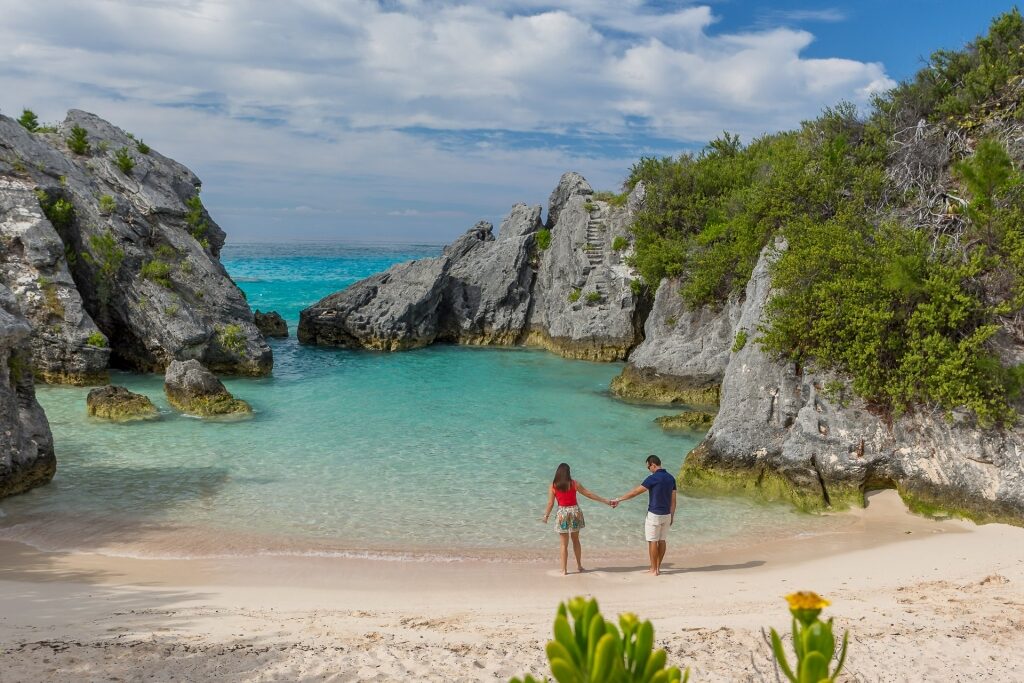
Jobson’s Cove Beach, Bermuda
Here, on this enchanted island where the sand is pink and the policemen wear knee-length shorts, you’ll have two and a half days to explore, which means two overnight stays .
There’s plenty to do, from snorkeling to golf, exploring the shops and galleries in Hamilton, the pastel-hued capital, and visiting the island’s forts. Hike the historic Railway Trail, consisting of 18 miles of scenic pathway following the course of an old railroad line.
Set sail on a catamaran trip at sunset, or join a pub crawl of Hamilton’s bars after dark. One of the most unique things to do in Bermuda is to sample a Dark ‘n’ Stormy, the powerful local specialty made of dark rum with ginger beer and a slice of lime.
Browse Bermuda cruise itineraries
Fort Lauderdale to Puerto Rico, St. Thomas, and St. Kitts
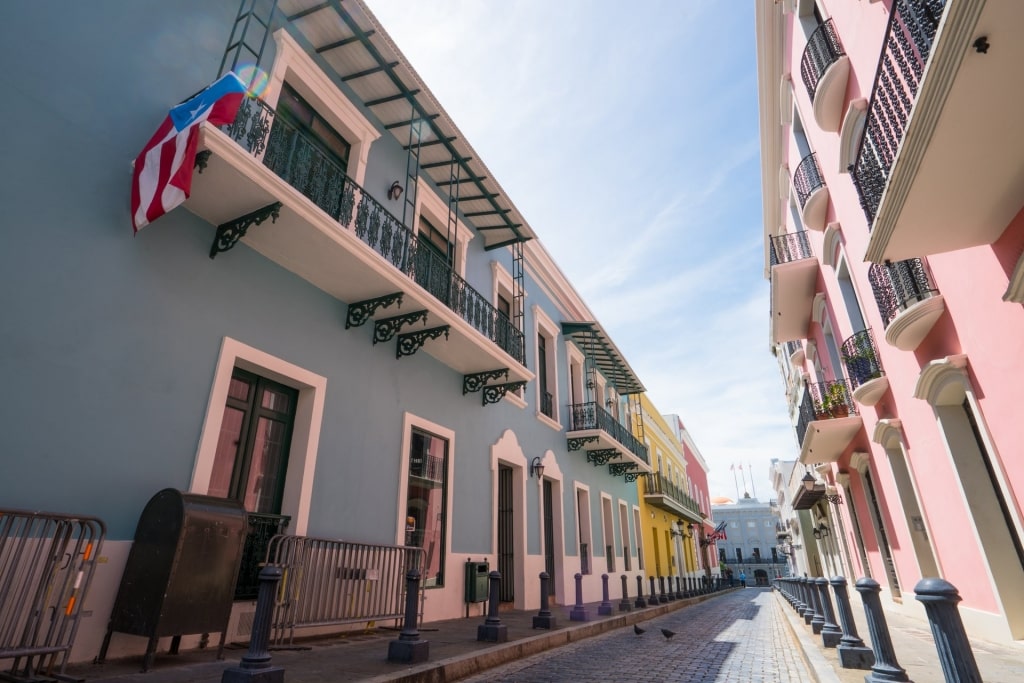
Old San Juan, Puerto Rico
Sail to the sun on Celebrity Apex, departing Fort Lauderdale, Florida for vibrant Puerto Rico , where an afternoon and evening in port mean you’ll see two faces of charismatic San Juan. Explore the chunky fortress, Castillo San Felipe del Morro, and the brightly colored streets of Old San Juan, or visit the Bacardi distillery to learn about and sample the famous rum.
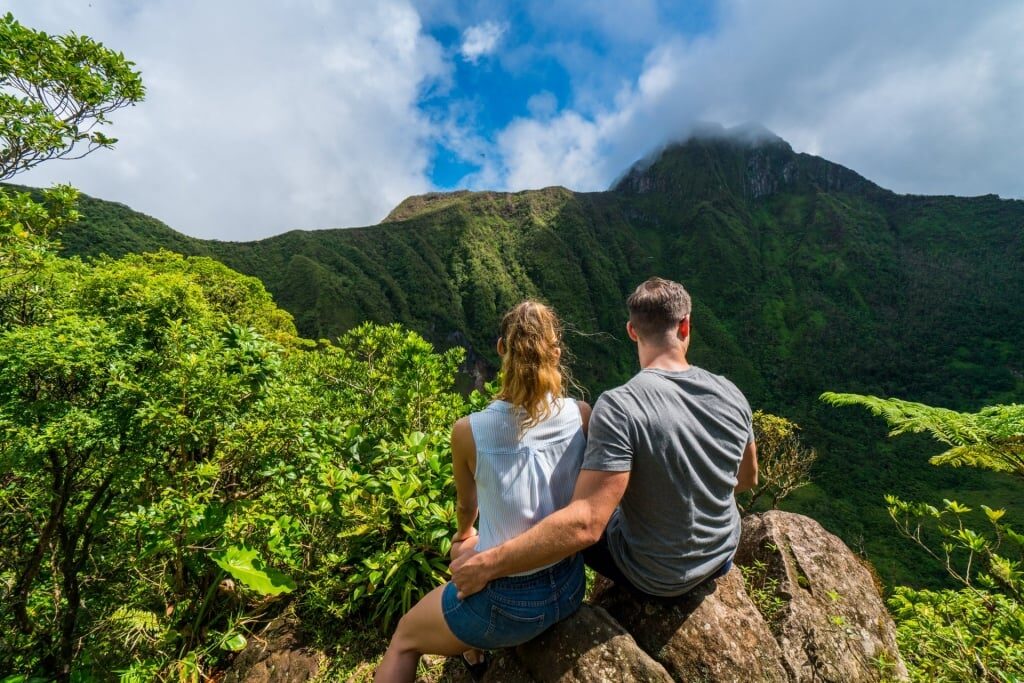
Mount Liamuiga, St. Kitts
You’ll find plenty of military history at St. Kitts , like the rugged Brimstone Hill Fortress, a massive compound built by the British in 1690. This tiny island packs a real punch, with an enormous variety of things to do.
Trundle through the sugarcane fields on a scenic train journey, or hike Mount Liamuiga, a dormant volcano at the island’s center. Learn how to make your own gourmet truffles at a chocolate workshop. Visit neighboring Nevis and see the birthplace of Alexander Hamilton, one of the founding fathers of the U.S.
At Charlotte Amalie, St. Thomas , you’ll find it impossible to resist exploring the crystal-clear water via snorkeling, kayaking, or sailboat. For an afternoon basking on the gorgeous Honeymoon Beach, the lush, low-key island of St. John is an easy hop across the water.
Browse itineraries to Puerto Rico, St. Thomas, and St. Kitts on Celebrity Apex
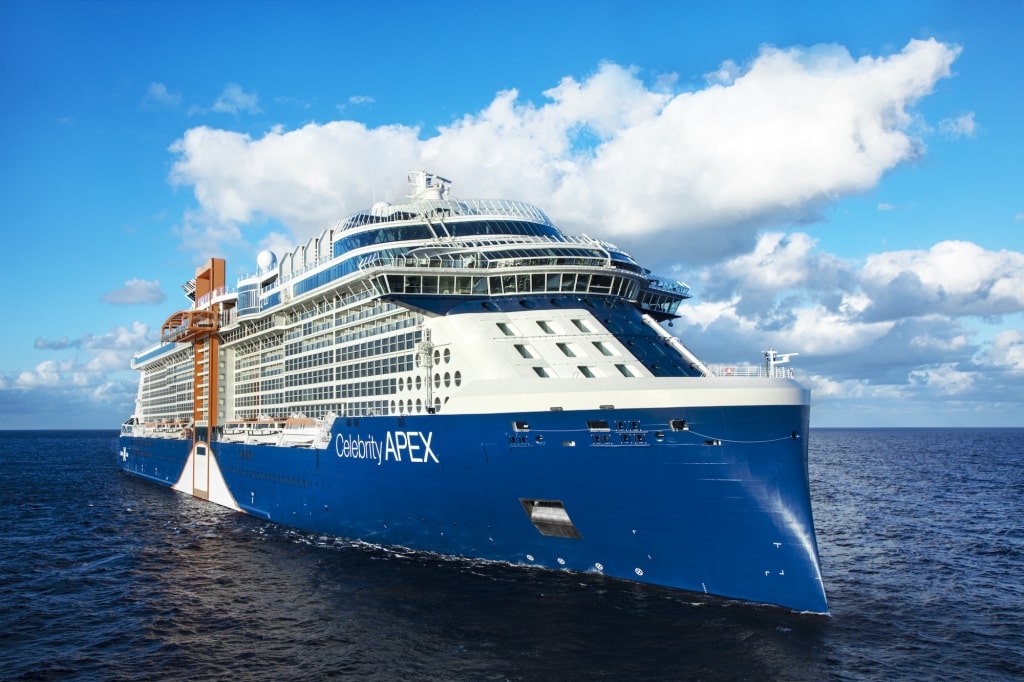
Celebrity Apex
Start planning your closed-loop cruise today and browse cruise itineraries on our website.
Sue has been writing about cruising for 20 years and is lucky enough to have sailed all seven continents. She lives in London, where she is cruise editor of The Times and The Sunday Times newspapers, as well as a freelance contributor to magazines and websites worldwide.
Related Itineraries
Bahamas Getaway
- 3 nights ON CELEBRITY REFLECTION
- DEPARTING FROM FORT LAUDERDALE, FLORIDA
- Starting from $390 USD
Bahamas & Perfect Day
- Starting from $580 USD
- 4 nights ON CELEBRITY REFLECTION
- Starting from $1249 USD
Bahamas, St. Thomas, & Antigua
- 7 nights ON CELEBRITY BEYOND
- Starting from $2362 USD
Key West & Perfect Day
- Starting from $2711 USD
Western Caribbean & Perfect Day
- 6 nights ON CELEBRITY BEYOND
- Starting from $3293 USD
Related Articles
Top 10 Best Winter Cruises
What Are the Longest Cruises You Can Take?
Top Cultural Cruise Experiences
The 7 Best Cruises for Couples
10 Types of Cruises You Must Experience at Least Once
Long Weekend Cruises: Where to Go, What to Do
The Essential Guide to Cruising with Kids
When Is the Best Time to Book a Cruise?
Ways Our Retreat Butler and Retreat Host Enhance Your Cruise Vacation
17 Invaluable Cruise Tips From a 20-Year Cruise Veteran
Cruising During Hurricane Season: Everything You Need to Know
Cruises vs Resorts: Which Is Best?
Free Vacation Planning Services

CALL US 888-751-7804
Sign Up for Special Offers
- First Name *
- Last Name *
- Email Address *
- Country * Country Afghanistan Albania Algeria American Samoa Andorra Angola Antigua and Barbuda Argentina Armenia Australia Austria Azerbaijan Bahamas Bahrain Bangladesh Barbados Belarus Belgium Belize Benin Bermuda Bhutan Bolivia Bosnia and Herzegovina Botswana Brazil Brunei Bulgaria Burkina Faso Burundi Cambodia Cameroon Canada Cape Verde Cayman Islands Central African Republic Chad Chile China Colombia Comoros Congo, Democratic Republic of the Congo, Republic of the Costa Rica Côte d'Ivoire Croatia Cuba Curaçao Cyprus Czech Republic Denmark Djibouti Dominica Dominican Republic East Timor Ecuador Egypt El Salvador Equatorial Guinea Eritrea Estonia Ethiopia Faroe Islands Fiji Finland France French Polynesia Gabon Gambia Georgia Germany Ghana Greece Greenland Grenada Guam Guatemala Guinea Guinea-Bissau Guyana Haiti Honduras Hong Kong Hungary Iceland India Indonesia Iran Iraq Ireland Israel Italy Jamaica Japan Jordan Kazakhstan Kenya Kiribati North Korea South Korea Kosovo Kuwait Kyrgyzstan Laos Latvia Lebanon Lesotho Liberia Libya Liechtenstein Lithuania Luxembourg Macedonia Madagascar Malawi Malaysia Maldives Mali Malta Marshall Islands Mauritania Mauritius Mexico Micronesia Moldova Monaco Mongolia Montenegro Morocco Mozambique Myanmar Namibia Nauru Nepal Netherlands New Zealand Nicaragua Niger Nigeria Northern Mariana Islands Norway Oman Pakistan Palau Palestine, State of Panama Papua New Guinea Paraguay Peru Philippines Poland Portugal Puerto Rico Qatar Romania Russia Rwanda Saint Kitts and Nevis Saint Lucia Saint Vincent and the Grenadines Samoa San Marino Sao Tome and Principe Saudi Arabia Senegal Serbia Seychelles Sierra Leone Singapore Sint Maarten Slovakia Slovenia Solomon Islands Somalia South Africa Spain Sri Lanka Sudan Sudan, South Suriname Swaziland Sweden Switzerland Syria Taiwan Tajikistan Tanzania Thailand Togo Tonga Trinidad and Tobago Tunisia Turkey Turkmenistan Tuvalu Uganda Ukraine United Arab Emirates United Kingdom United States Uruguay Uzbekistan Vanuatu Vatican City Venezuela Vietnam Virgin Islands, British Virgin Islands, U.S. Yemen Zambia Zimbabwe

STAY IN THE KNOW
Thank you for subscribing.
See you on board soon.
You don't have to wait for a passport to travel: What to know about closed-loop cruises

When Chanel Sims graduated college, her mom rewarded her achievement by treating her daughter to a trip with Carnival Cruise Line .
But the July 2022 sailing – shortly after her graduation in May – didn’t leave Sims much time to get a key travel document: her passport.
Sims, now 24, had never gotten one. She tried once before to study abroad but was dissuaded by long wait times , and traveling internationally for fun wasn’t on her radar.
“I was a broke college student. I wasn’t going anywhere,” said Sims, who lives in Los Angeles and works for a life insurance agency.
Luckily for her, there was an alternative: She sailed with her family from Miami to the Bahamas, Turks and Caicos and back with just her photo ID and birth certificate.
In many cases, travelers can sail without a passport on round-trip voyages from the U.S. Here’s what to know.
What is a closed-loop cruise?
Closed-loop cruises are those that start and end at the same U.S. port and travel within the Western Hemisphere.
U.S. citizens booked on those sailings can leave and enter the country with proof of citizenship such as a birth certificate and – if 16 or older – a government-issued photo ID, according to U.S. Customs and Border Protection .
They can also use an enhanced driver’s license , which denotes both proofs of identity and citizenship, though those are available only in Michigan, Minnesota, New York, Vermont and Washington for now. Travelers can reenter the country from Canada, the Caribbean and Mexico with an EDL, but the documents are valid for border crossings only by sea or land.
Travelers under 16 can show an “original, notarized or certified copy of his or her birth certificate, a Consular Report of Birth Abroad issued by Department of State, (DOS) and/or Certificate of Naturalization issued by U.S. Citizenship and Immigration Services (USCIS),” according to Customs and Border Protection’s website.
Cruise lines may require you to have a passport anyway, however.
Regent Seven Seas Cruises, for example, requires passports for all voyages no matter the ports of call or countries visited, and destinations may call for them as well.
Carnival, which Sims sailed with, allows U.S. citizens to sail without a passport on qualifying cruises but "highly recommends that all guests travel with a passport valid for at least six months beyond completion of travel," according to its website .
How do I know if I can sail without a passport?
Cruise lines typically provide guidance for travelers on the requirements of their sailing, according to Drew Daly, senior vice president and general manager of travel agency franchise Dream Vacations. A travel adviser can also help fill in any blanks.
Cruising without a passport can be risky, though. The State Department encourages having one "in case of an emergency, such as an unexpected medical air evacuation or the ship docking at an alternate port," according to its website .
If travelers get stuck at a port of call, there will be “a lot of red tape you have to get through” to make it home without one, Daly said.
In those cases, they should contact the U.S. Embassy and local immigration authorities, he said. Daly also recommended taking a photo of your government IDs, which can be helpful backups when dealing with officials.
A travel adviser can hold travelers’ hands through the process, though Daly noted “it’s not something that happens a lot.”
Sims, for her part, was able to easily get off the ship at ports like Nassau with just her Sail & Sign card, she said, which acts as both a room key and means of charging items to your onboard account. After showing her birth certificate and photo ID during the initial boarding process, she kept them in a suitcase.
There are other advantages to having a passport. For instance, the document gives travelers who don't board their cruise in time more flexibility to meet the ship at its next stop. “You can’t fly to Mexico without a passport,” Daly said.
Routine processing of passports currently takes between 10 and 13 weeks, and seven to nine weeks for expedited service, according to the State Department . But most travelers who book with Dream Vacations plan their cruises at least six months out, according to Daly, which should give them plenty of time to get one: “So, we still highly encourage that.”
Nathan Diller is a consumer travel reporter for USA TODAY based in Nashville. You can reach him at [email protected] .
Hot Topic: Surprise Cruise Reveal Ideas

Complete Guide to Closed-Loop Cruises (and Open Jaw Itineraries)
Cruising, as you may know, is one of the best ways to explore the world’s coastlines and nearby cities. But what if you lack a passport or your passport has expired? Exactly what are the passport requirements to cruise?
As a United States resident, you may benefit from the ease of a so-called closed-loop cruise and not need a passport for a cruise vacation at all. Let’s dive in.
Disclosure: This page has affiliate links, meaning we may earn a small commission if you click the link and proceed with a purchase at no cost to you . We truly only recommend cruises, experiences, products, and services we personally use. As Amazon Associates, we earn from qualifying purchases.
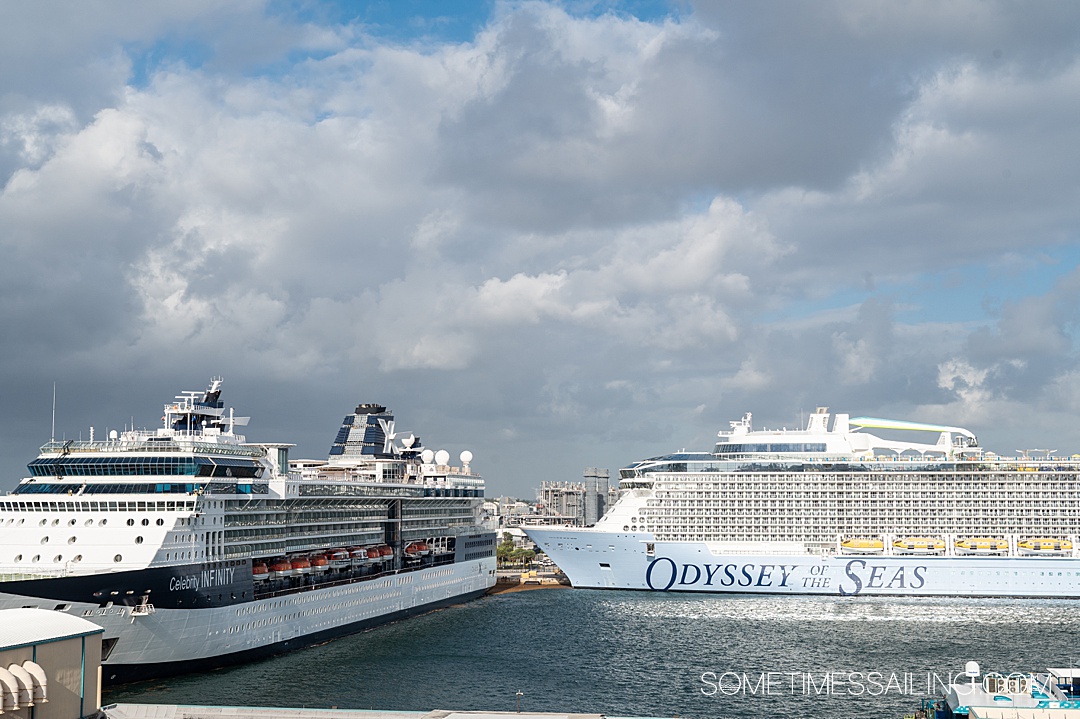
What is a Closed Loop Cruise?
First, let's define a closed loop voyage.
The itineraries of closed-loop cruises begin and end in the same port. For purposes of this conversation, that port is in the United States (even though the term “closed loop cruise” could be used to describe a cruise that starts and ends in the same city in another country).
Think of it like a closed circuit, with the ship literally closing a geographical loop, even if that loop is an imperfect shape. However, along the route, you might stop at a few other places, either in the United States or abroad.
The benefit of taking these “round-trip cruises” is that American travelers don’t necessarily need a passport as long as the trip begins and ends at the same U.S.A. port. However, you must understand the nuances of the itinerary you choose if you don’t have a passport, even if you have a travel agent to help guide you.
That’s why we stress how imperative it is to read the detailed information below about identification requirements.
Closed Loop Cruise Origins
So how did closed-loop cruises come about? Well, in order to comply with U.S. maritime rules and the Passenger Vessel Services Act (also known as the Jones Act), all foreign-registered cruise lines leaving from American ports are required to include a port abroad.
Nearly all cruise ships are foreign-flagged, so they must stop outside the nation. ( US River Cruise ships are an exception to the foreign-flagged generalization.) These destinations are usually contiguous United States territories such as Mexico, Canada, Bermuda, and the Caribbean islands.
Example of a Closed-Loop Cruise
Here’s an example of a closed-loop cruise itinerary that starts and ends in a United States Cruise Port :
- A 4-night cruise departs from the Port of Miami in Florida.
- It makes a port of call in Nassau, in the Bahamas…
- …then sails onto Half Moon Cay.
- The cruise returns to Miami to disembark, where it departed from.
Disney Cruise Line has a very similar 3-day or 4-day itinerary, usually departing from Port Canaveral, which is on Florida’s Space Coast near Cape Canaveral . It leaves, returns to Port Canaveral, and stops at Disney’s Castaway Cay island and Nassau in between.
While these 3 or 4-day itineraries are considered short, there are plenty of longer sailings with more Port of Call available across many cruise lines.
Most of the itinerary options are on bigger ships with 1,500+ passengers.
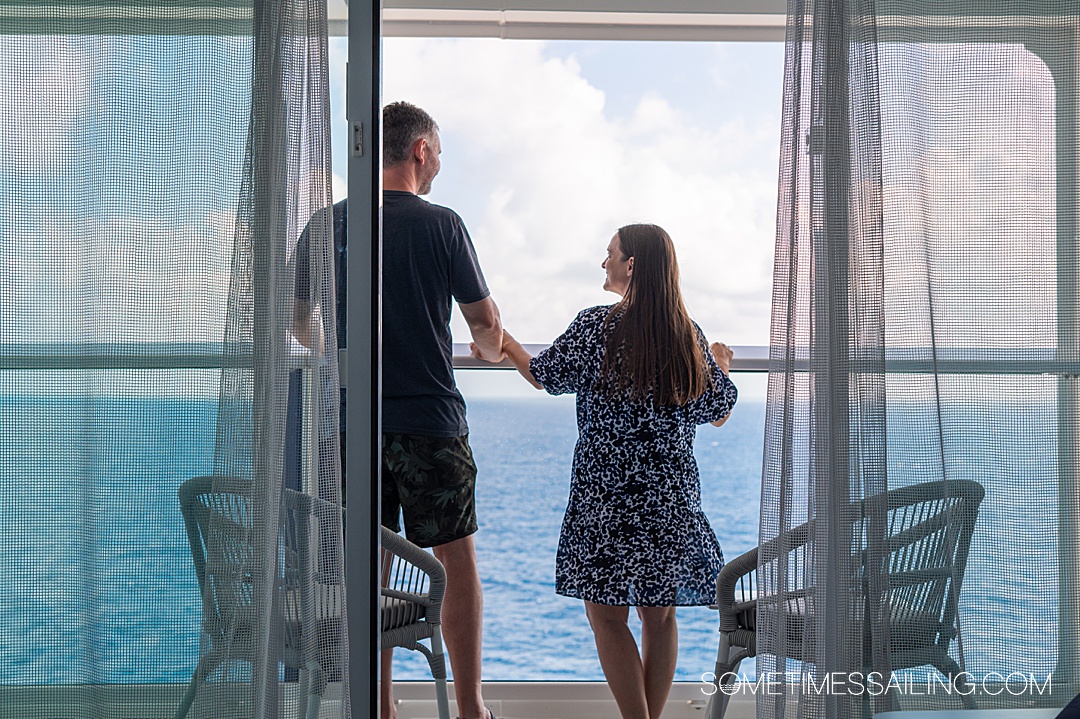
If a Cruise Starts and Ends in the United States but From Two Different Ports, is it a Closed-Loop Cruise?
No. If a cruise starts in San Diego but ends in Los Angeles, for example, it is an open-jaw cruise, not a closed-loop cruise.
Another example: If a cruise starts at Port Everglades in Fort Lauderdale but ends in the Port of Miami, it is not a closed-loop cruise.
What is an Open Jaw Cruise or Itinerary?
Perhaps you’d prefer to explore beyond the destinations of a closed-loop cruise.
A cruise that departs from one port and arrives/ends at a separate port of call is known as an “Open-Jaw Cruise.” Sometimes they’re referred to as “Open Loop” or “Repositioning” cruises.
While these ocean trips on the high seas require a passport, you can access many more countries.
On a map, such a trip may appear as a triangle or an “open jaw.” For example, you may do a yacht cruise on the Mediterranean as we did that departs from Athens, explores Greece, then heads to Sicily and ends on mainland Italy, and takes a flight home from Rome.
Without geographic restrictions, ships with an open itinerary can travel farther and often stop at more ports. This may also entail visiting places that other cruises would not have the time or ability to visit, such as more exotic locations.
Do you Need a Passport for a Closed Loop Cruise?
A passport is typically not required for a closed-loop cruise for United States citizens if the cruise starts and ends in the same U.S. port.
For example, this has made Hawaiian Islands, U.S. Virgin Islands, and Alaska cruises very popular.
You Need Valid Government Identification, Even if Not a Passport
However, valid identification to board the ship is required; you must also show that identification upon reentry to the US. Such ID includes proof of citizenship and a government-issued ID. If you happen to have a valid passport, it’s the only ID required.
Shop for Cruise document Holders
Stay organized with a dedicated container, book, or pouch for all your cruise documents, including your identification.
Ensure that this remains in your carry-on bag as you embark and disembark the ship.
Check it out >

What Documentation Is Needed For A Closed-Loop Cruise?
Nervous about going on a cruise without a passport? While it’s true that you don’t need a passport for most US closed-loop cruises, you must present two forms of ID to board a closed-loop cruise ship.
These forms of ID should be carried with you when you disembark at each port of call.
Two Forms of ID
As we mentioned, adults must have two ID forms to board a cruise if they don't have a passport. The two documents must fall under the two categories listed below.
1. Proof of Citizenship
One form of ID must be your proof of US citizenship. For example, this can be a government-issued birth certificate.
2. Government-Issued ID with Requirements
The second acceptable piece of identification must be a government-issued ID with your photo, full name, and date of birth. A driver’s license will suffice.
U.S. Customs and Border Protection offers a comprehensive list and details the criteria for taking a cruise without a passport, including what constitutes a government-issued photo ID.
Always check to see the latest details of the requirements before you book your cruise, while you await your cruise, and about four weeks before your cruise to make sure you’re good to go.
While U.S. Customs recommend an Enhanced Driver’s License (EDL) as a passport alternative, very few states offer this form of government-issued ID.
It’s also important to mention that as an ID, driver’s licenses are only accepted at land border crossings and sea border crossings, not airports for international destinations. You can also only use a valid driver’s license to re-enter the United States from Canada, Mexico, and the Caribbean.
Closed-Loop Cruise Documentation
- Voter registration card/ID
- Social security card
- Baptismal papers
- Hospital certificates of birth
Enhanced Driver's License vs. Real ID
Is a Real ID the same thing as an EDL? No. It is not.
The short answer is that EDLs can be used for limited border crossings and is only available in specific border states. Whereas a Real ID is available in all states, it cannot be used to cross borders like an EDL or passport.
A Real ID does not have an additional cost to obtain. It differs from previous driver's licenses because it shows a star icon in the top corner of the license.
An EDL is only offered in a handful of states and costs an additional $30.
The Department of Homeland Security states the following about an EDL:
Enhanced Drivers Licenses (EDLs) are state-issued enhanced drivers licenses that provide proof of identity and U.S. citizenship. They are issued in a secure process, and include technology that makes travel easier. EDLs are a low-cost, convenient option for entering the United States from Canada, Mexico or the Caribbean through a land or sea port of entry, in addition to serving as a permit to drive. DHS Enhanced Driver's Licenses: What Are They?
EDLs are only available to residents of the following states:
Real IDs are available in 55 states and territories, however, it is not a viable document to cross a border, including for international sea cruise travel.
REAL ID cards cannot be used for border crossings into Canada, Mexico or other international travel. From “Real ID FAQs” on the Department of Homeland Security
Children Under the Age of 16
For children traveling under the age of 16, a variety of forms of identification, including an original birth certificate or a copy that has been notarized or certified, a Consular Report of Birth Abroad, or a Certificate of Naturalization, are acceptable.
What is Not Acceptable as a Form of ID?
As per the US Government's regulations, documents proving voter registration and social security cards are not recognized as proof of identity.
Lawful Permanent Residents
There are specific rules if you are a Lawful Permanent Resident (LPR) of the United States.
Even though the US Government doesn’t mandate that you need a passport, it is always advisable to double-check as some locations along your cruise journey may have various requirements, including having a visa.
If you are an LPR, you must have your I-551, or Green Card, in order to re-enter the US.
A valid passport from your nation of residence is required if you’re not a U.S. citizen or a LPR of the United States of America.
Closed-Loop Cruises: Popular Port Cities from the United States
U.S. departure ports are plentiful, from coast to coast.
The most popular port cities on the East Coast are Miami and Fort Lauderdale in Florida, the Port of Miami, and Port Everglades, respectively.
On the West Coast, San Francisco sees the most cruise ships pass through every year. Quite a few other city ports are offering closed-loop cruises from the US, so let’s take a look.
West Coast Closed-Loop Cruises
An Alaskan cruise is one of the most popular closed-loop cruise options in the US. If departing from the United States, Alaska cruises depart from Seattle, San Francisco, or Los Angeles. They often stop in Vancouver, British Columbia (in Canada), to pick up more cruise passengers.
Mexican Riviera and Hawaii closed loop itineraries are accessible from the West Coast, departing from the cities of San Pedro and Long Beach, San Francisco, and San Diego.
East Coast Closed-Loop Cruises
If you’re looking to head somewhere warmer such as the Bahamas, look to sail from:
- Florida: Either from Jacksonville, Fort Lauderdale’s Port Everglades, the Space Coast’s Port Canaveral, the Port of Miami, or Tampa.
- Maryland: Baltimore.
- Northeast and New England area: Manhattan in New York City, Cape Liberty in New Jersey, or Boston, Massachusetts.
- Texas: Galveston.
Some of these itineraries even stop in Bermuda if you take a closed loop cruise from Boston, Manhattan, Baltimore, or Cape Liberty.
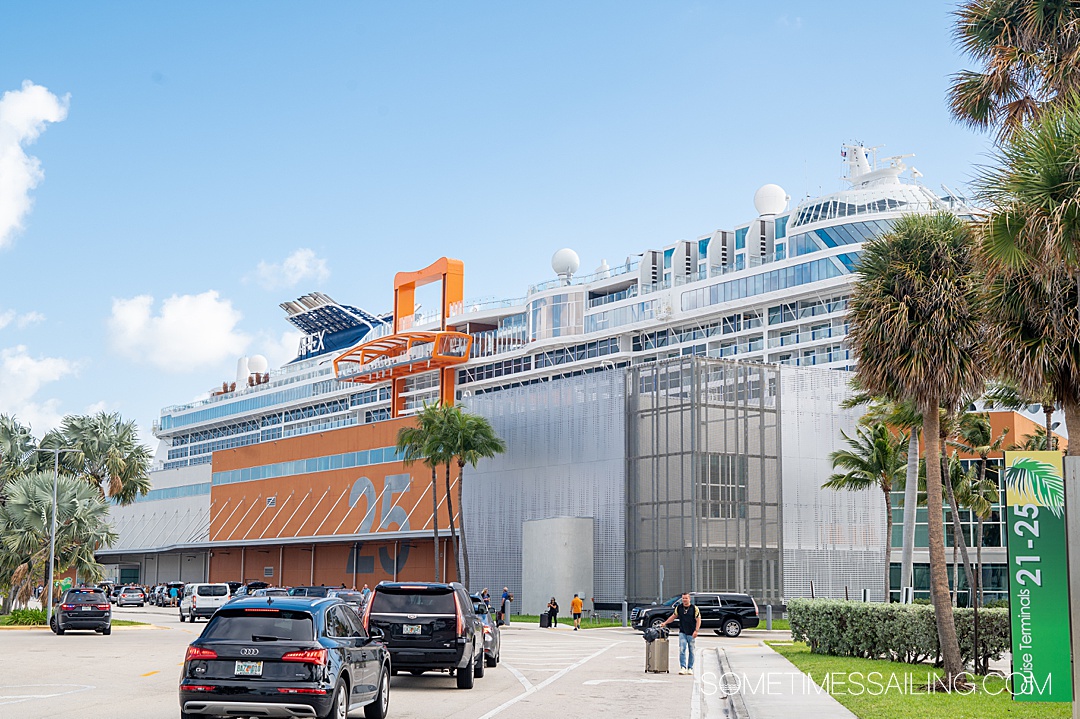
Of course, you can’t forget about a Caribbean cruise! There are quite a few port options if you want to travel to the warm waters of the Caribbean Sea. The main cruise port options with itineraries sailing there are from Port Canaveral, Manhattan, Port Everglades, Baltimore, Charleston, New Orleans, Cape Liberty, Galveston, or Tampa.
Popular Cruise Lines Offering Close Looped Cruises
Though cruise ships and their contracted ports of call may change annually, here’s a list of cruise lines and expected ports they sail from.
Princess Cruises
Princess is one of our favorite cruise lines for a mature audience! It’s not great for traveling with kids but if you’re adults, it’s a wonderful option.
With Princess Cruises , you can travel to Grand Cayman, Puerto Rico, Mexico, or the Bahamas from the United States. They operate many cruises from Fort Lauderdale or off the West Coast, where you can sail from Los Angeles to Mexico or Hawaii.
In fact, we sailed on a wonderful closed-loop California itinerary that stopped in San Francisco, San Diego, Santa Barbara, and Ensanda before heading back to Los Angeles.
Celebrity Cruises
Fort Lauderdale and Miami, Florida, are popular ports for Celebrity Cruises . You can travel to Mexico, the Bahamas, and the Caribbean from here.
It’s another one of our favorite cruise lines, offering class and sophistication to a generally younger audience than Princess Cruises.
We absolutely love their class offerings – our favorite is “in “ The Retreat ” – and recommend booking a suite if you sail with Celebrity.
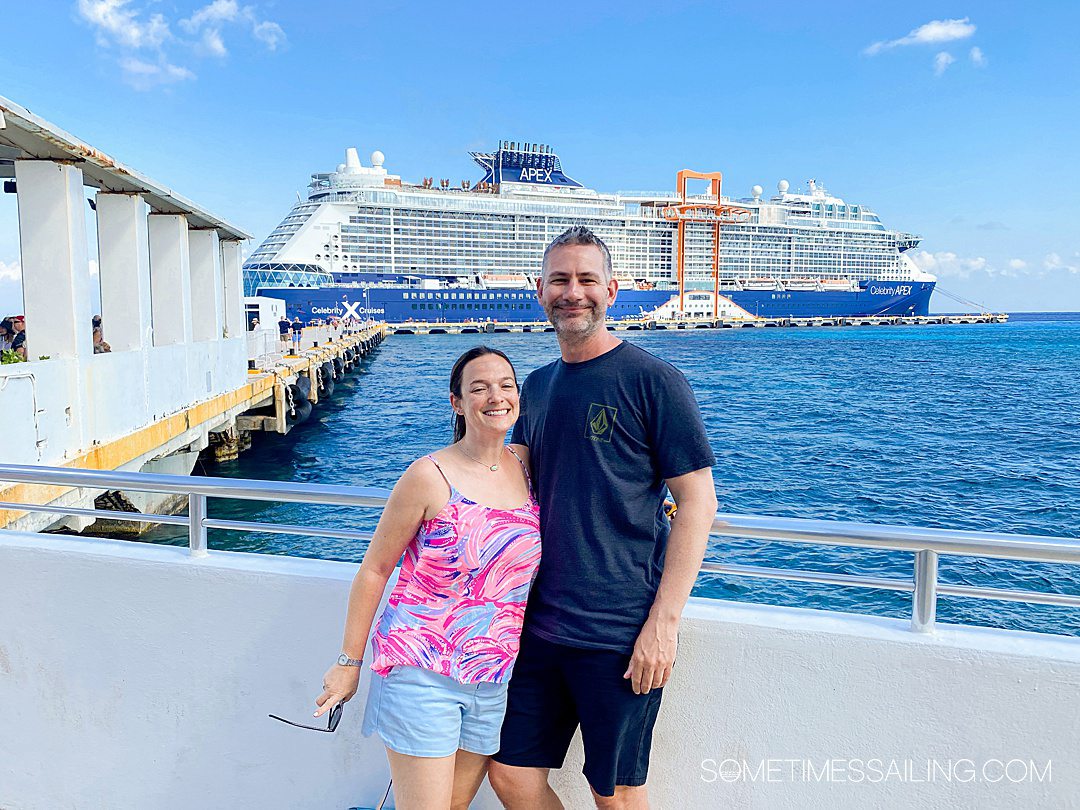
Disney Cruise Line
Who doesn’t love a Disney cruise, especially when you can sail to Bermuda, the Bahamas, or the Caribbean with all your favorite characters? But even if the characters don’t pique your interest, sailing as adults, only, is always fun with Disney. We’ve cruised on DCL without kids many times!
Castaway Cay, Disney's private island, is an incredibly popular destination that only Disney Cruise Line sails to.
Most Disney Cruises in the United States set sail from the East Coast, with the most popular ports being Port Canaveral and Miami. However, there is often a west coast cruise itinerary each year, like from San Diego.
Holland America Line
The majority of Holland America Line (HAL) closed loop cruises leave Fort Lauderdale and head to the Caribbean. But if you’re looking for an incredible Alaskan experience, head out west to Seattle and catch a trip to The Last Frontier with HAL.
Royal Caribbean
An incredibly popular cruise line, Royal Caribbean departs from 14 ports across the US. The most popular closed-loop itineraries leave from Port Canaveral and Miami, where they sail to the Caribbean and the Bahamas.
People love to visit Coco Cay, Royal Caribbean’s private island.
Norwegian Cruise Line
Despite its name, many cruises with Norwegian actually depart from the US. Amongst their popular itineraries is a Hawaiian closed-loop cruise from Honolulu, that tours around the Hawaiian Islands.
To visit the Bahamas or the Caribbean with Norwegian Cruise Line, choose the Port of Miami as the departure port.
Carnival Cruises
Miami, Galveston, Tampa, and Port Canaveral are the port of call where most closed-loop Carnival Cruises sail from. The top itineraries for all three ports will lead you to the incredible island nations of the Caribbean.
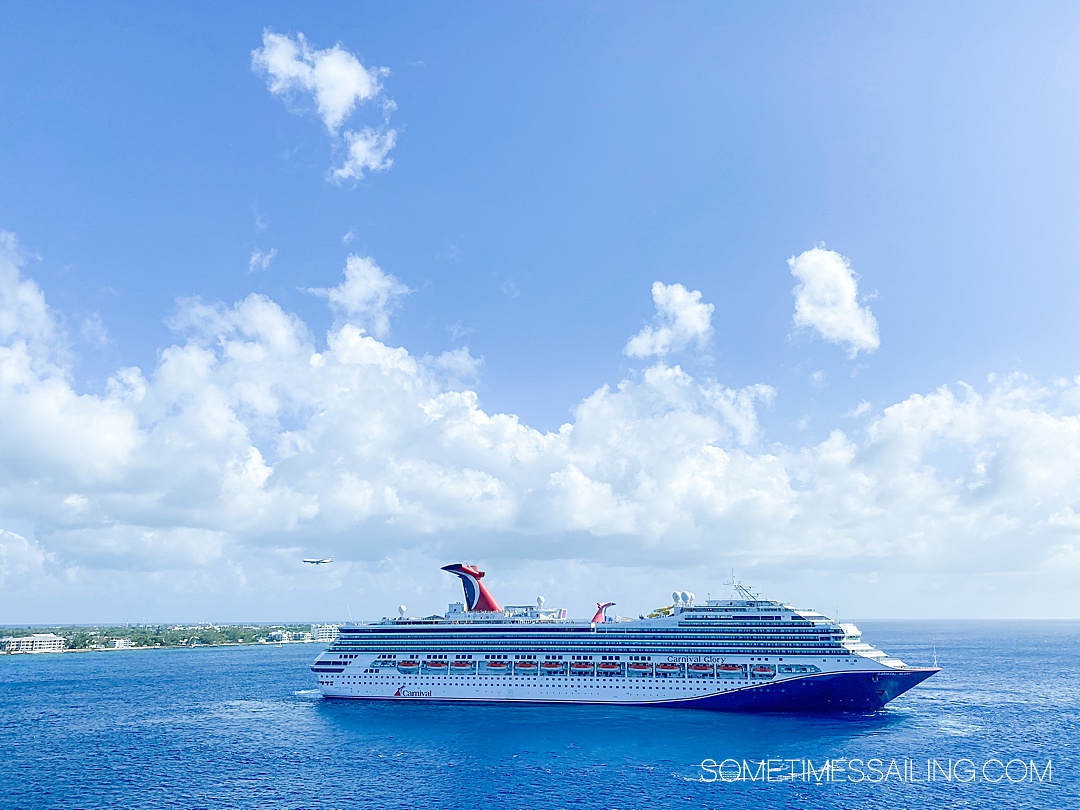
MSC Cruises
Dip your toes in Caribbean sand when you set sail from Port Canaveral or the Port of Miami. MSC Cruises offers hundreds of closed loop cruises each year.
Margaritaville at Sea
If you want a very short, low-cost cruise option that sails from the Port of Palm Beach, look into Margaritaville at Sea .
Closed-Loop Cruises in Popular European Cities
The United States isn’t the only region that offers closed loop cruises. Numerous cities in Europe also have such itineraries, although they aren’t always referred to as a closed loop cruise in marketing material.
Rather, you’ll see terms like “return trip cruise” or “two-way cruises.” Check each itinerary very closely.
However, it’s worth noting that while these cruises are technically closed-loop, because they start and end in the same port of call as our Emerald Cruises did in Amsterdam in The Netherlands, you need a passport to sail in Europe or Asia, for example, if you’re a United States citizen traveling abroad. You’ll also need a passport to fly there at an international airport.
One of the closed itineraries growing in popularity in Europe is a cruise to Iceland. Departing and ending at Rotterdam, in The Netherlands, you’ll get to explore this true wonder of the world. Cruises to Iceland also commonly include a port of call in Ireland as well.
The port of Civitavecchia in Rome, Italy, also offers a number of return trip cruises. These itineraries include stops in Greece, Turkey, and Italy. Or you can sail in a loop from the port of Ravenna in Venice, Italy, to see cities in Italy, Croatia, and Greece.
MSC offers popular cruises in the Mediterranean with return trips from Marseille, France . On these journeys, you will stop in places such as Genoa, Palermo, Ibiza, Valencia, Barcelona, and Naples.
Closed-Loop Cruises FAQs
What are the advantages of a closed loop cruise.
There are many, especially if you don’t have a passport!

What are the Disadvantages of a Closed Loop Cruise?
The main disadvantage is that fewer ports of call are available to you. Along with this, depending on your taste and travel preferences, your experience diving into different cultures and historical sites is lessened if you can only explore closed-loop cruise options.
How Do I Know If My Cruise Is Closed-Loop?
Two main things indicate if your cruise is closed loop and you won’t need a passport (but don’t forget – you need other valid identification):
- For Americans looking to travel without a passport, the first piece of information to note when investigating whether or not a cruise is closed-loop is if it departs from and arrives back at the same US port.
In order for it to be considered a closed-loop cruise that you don’t need a passport for the ship must leave and return to the same exact American port.
- The second criterion to check for is: Are all ports of call on the itinerary within the Western hemisphere?
Today, the majority of cruises that are closed-loop and you don’t need a passport for as a US citizen are within the Western Hemisphere only.
The idea of a closed-loop cruise originated with the creation of the Western Hemisphere Travel Initiative (WHTI) .
The objective of WHTI was to enhance and fortify American border security after 9/11 in 2001. However, there was also the added objective of streamlining and improving entry procedures into the United States. Several aspects of the initiative also deal with easing entry for residents of Bermuda, Canada, and Mexico.
Can You Leave the Ship on a Closed-Loop Cruise Without a Passport?
The answer is yes and no. It depends on the port of call.
It’s important to check the itinerary for your trip because there are a few places, even on a closed-loop cruise, that do require a passport to disembark. This is particularly common in the Caribbean in nations including Guadeloupe, the island of Martinique, St. Barts, Barbados, and others.
Below is a list of Caribbean nations you can travel to without a passport on a closed-loop cruise (meaning you can disembark the ship if your cruise ship stops there and you do not have a passport):
- Antigua and Barbuda
- British Virgin Islands
- Cayman Islands
- Dominican Republic
- Netherlands Antilles
- St. Kitts and Nevis
- St. Vincent and the Grenadines
- Turks and Caicos
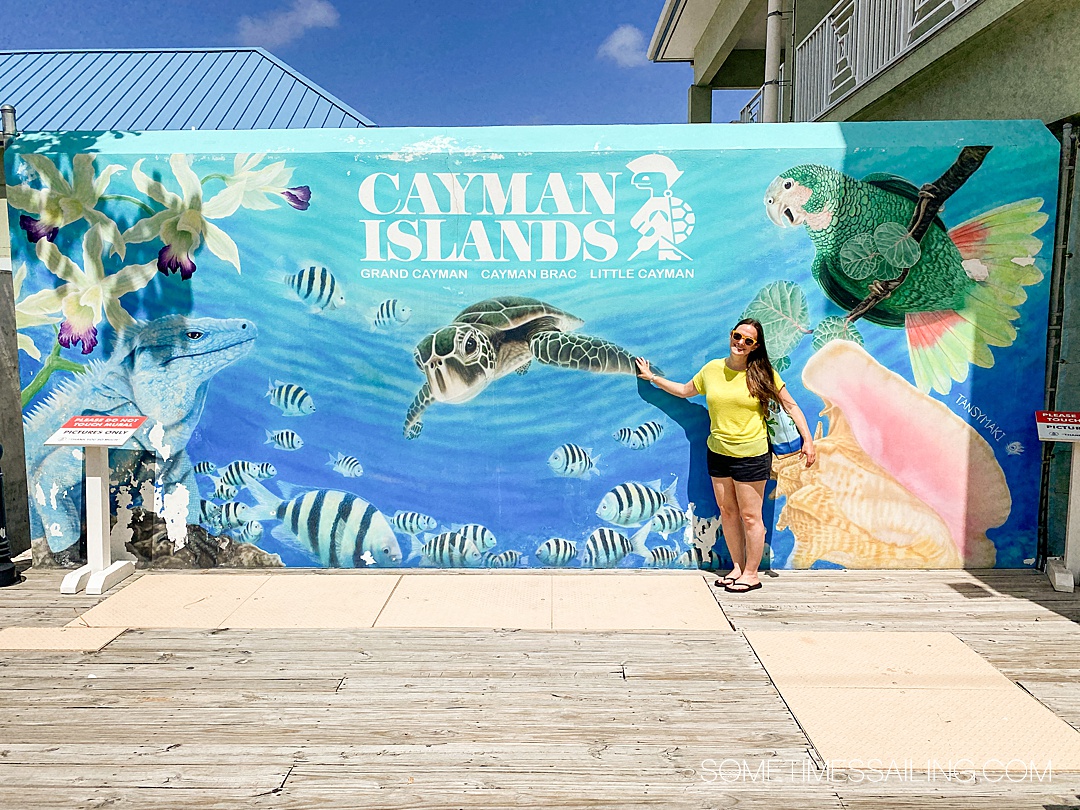
If you travel to any of these countries without a passport, however, it’s a good idea to take your valid forms of ID with you when you walk around the port in case you encounter any problems.
Precautions to Keep in Mind Traveling Outside the United States Without a Passport
Keep a few things to keep in mind if you travel on a closed-loop cruise without a passport.
Imagine, for instance, that something goes awry, and you need to fly back to the United States from a foreign country for a medical emergency. In this situation and in the case of an emergency, you will need a passport in order to travel through an international airport and board an airplane traveling internationally.
Additionally, without a U.S. passport, getting home or catching up with the trip could be challenging if you miss the ship in one of the ports.
An Enhanced Driver's License (EDL) allows you to re-enter the United States from Canada, Mexico, and the Caribbean. However, an EDL is only accepted at land and sea border crossings, not for air travel.
A closed loop cruise is a wonderful sea travel option for United States residents and citizens who want a vacation in multiple cities without needing a passport. (It’s an especially good option if you’re waiting for your new passport to arrive and you’re aching to go on a cruise, asap!)
However, there are things to be aware of when you’re looking into going on a closed-loop cruise from the United States. With the important information we have provided here, you’ll be an informed traveler who can make the best decision for your’s and your family’s next cruise.

Interested in cruises? Read this next:
- River Cruise vs Ocean Cruise: What’s the Difference?
- How to Decide the Best Cruises to Book
- Guide to Mississippi River Cruises: Discover The Heart of America

Similar Posts
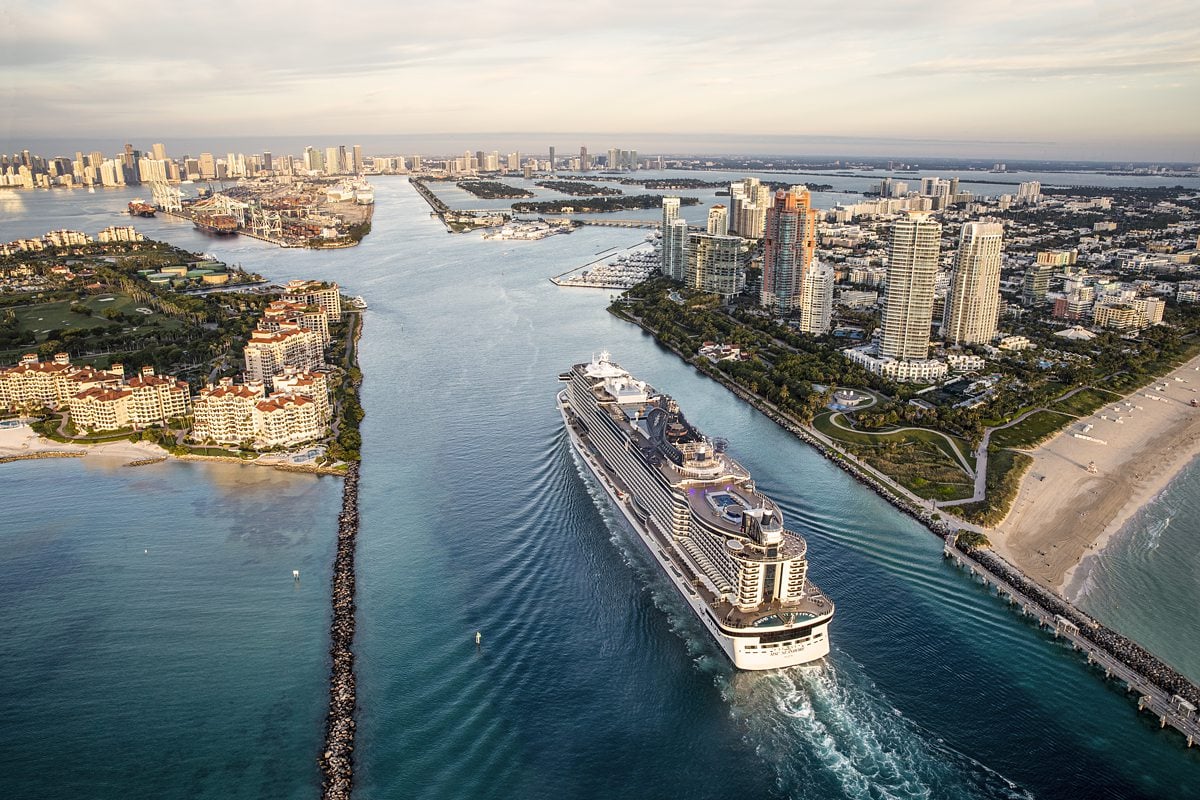
Ship-within-a-Ship Cruise Options: Luxury Service on Big Cruises
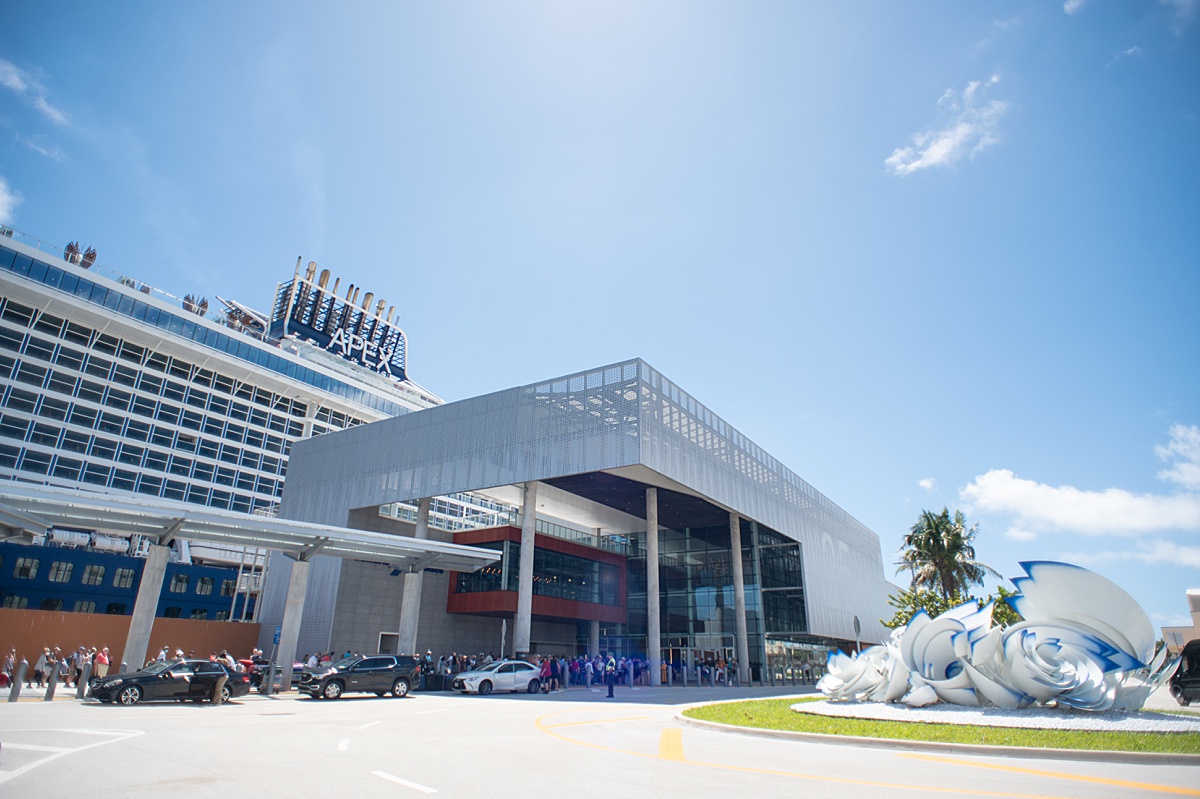
Complete Guide to Fort Lauderdale Cruise Port (Port Everglades)
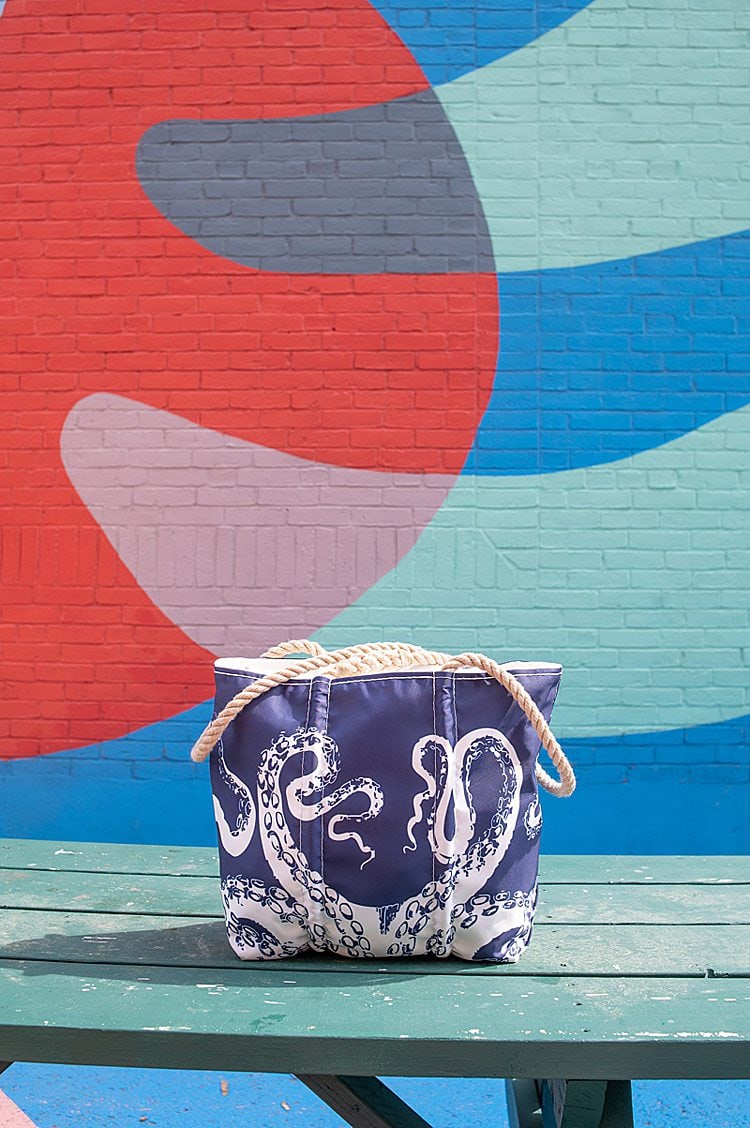
Sea Bags Review: Recycled Sailcloth Bags

Our Experience on Alaskan Dream Cruises Inside Passage Sojourn
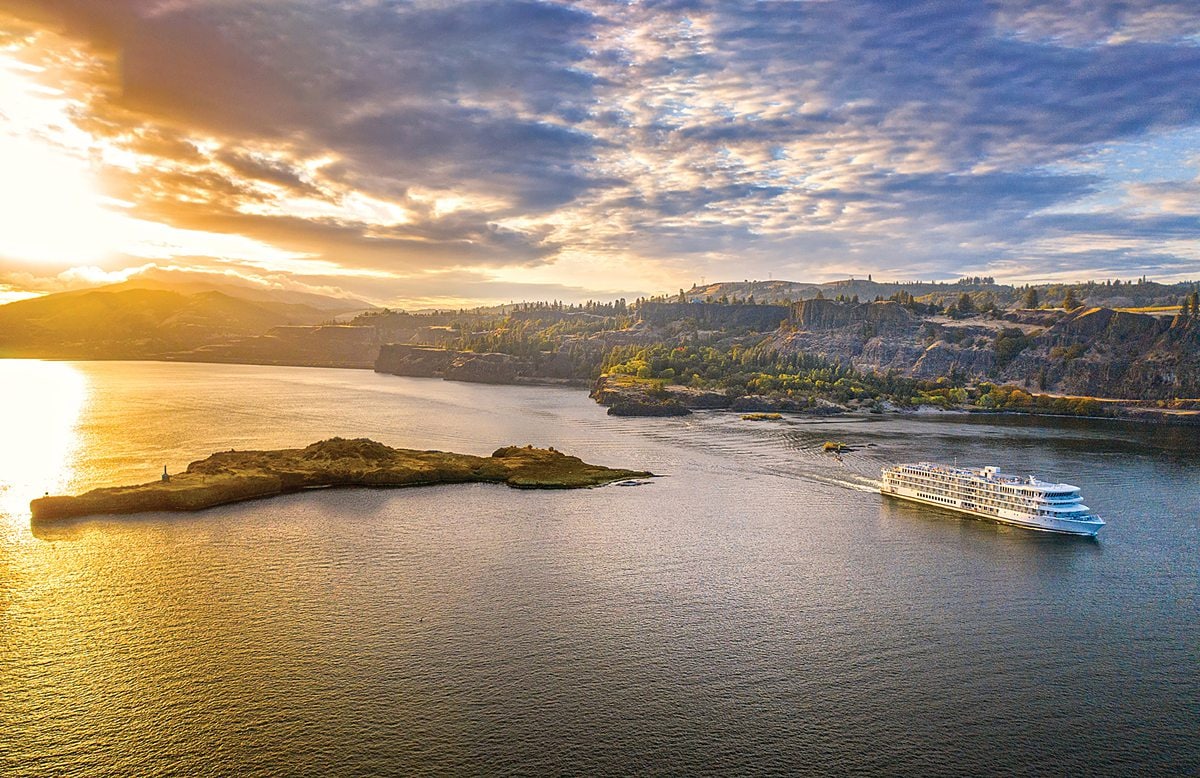
American River Cruises: Start Here to Plan Your US River Vacation
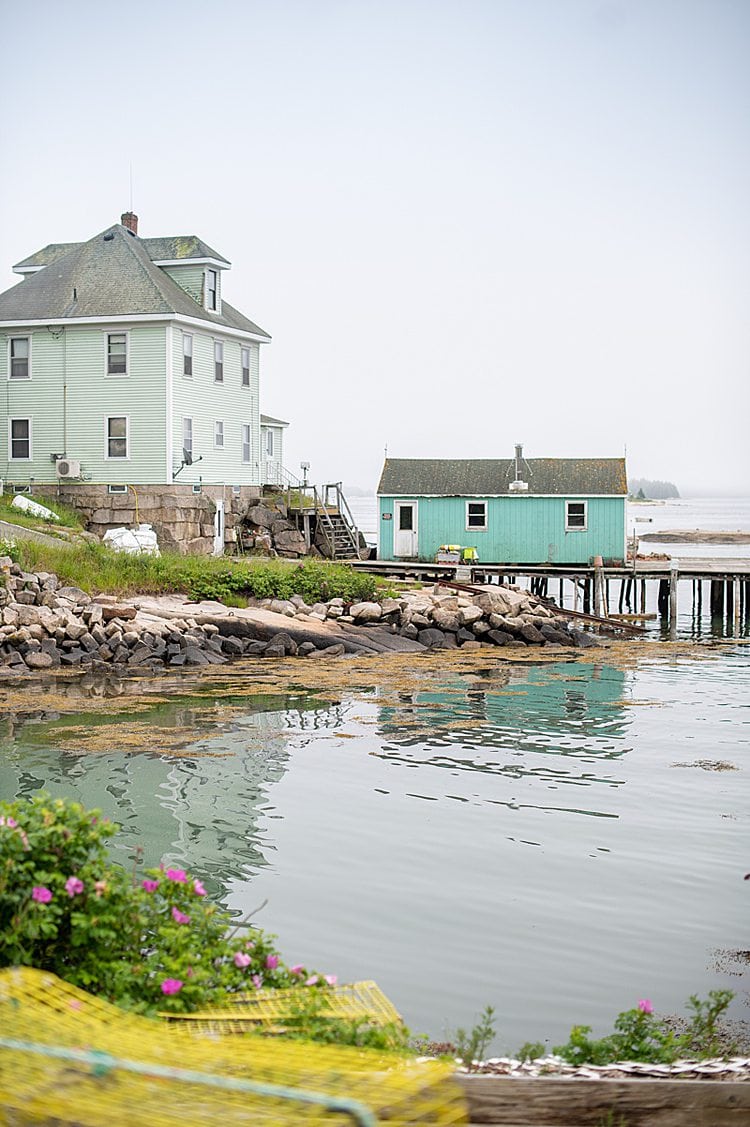
Things to Do in Stonington, Maine: One of the Prettiest Harbor Port Towns
Where can I find information concerning actual open jaw/repositioning cruises please? All I saw here was a definition of what they are…………..
Hi John – there are an innumerable amount of cruises available and they’re constantly changing in availability and price, so it’s hard for us to list them out in an article like this. That is why, instead, we help people understand what they are. Then, you have the tools to research open-jaw or closed-jaw cruises on your own on any of the dozens and dozens of cruise line websites. If you go to any website for a cruise and search by port, you can find the itinerary. If it starts and ends in different ports, it’s considered an open-jaw cruise. Best of luck! – Mikkel
Leave a Reply Cancel reply
Your email address will not be published. Required fields are marked *
Save my name, email, and website in this browser for the next time I comment.

- Destinations
- Cruise & Travel Blog
- Group Cruises
- Luxury Cruises
- River Cruises
- Specialty Cruises
- World Cruises
- All Cruise Lines
- Best Price Guarantee
- Advanced Cruise Search
Closed Loop Cruise: Passport Requirements & Destinations
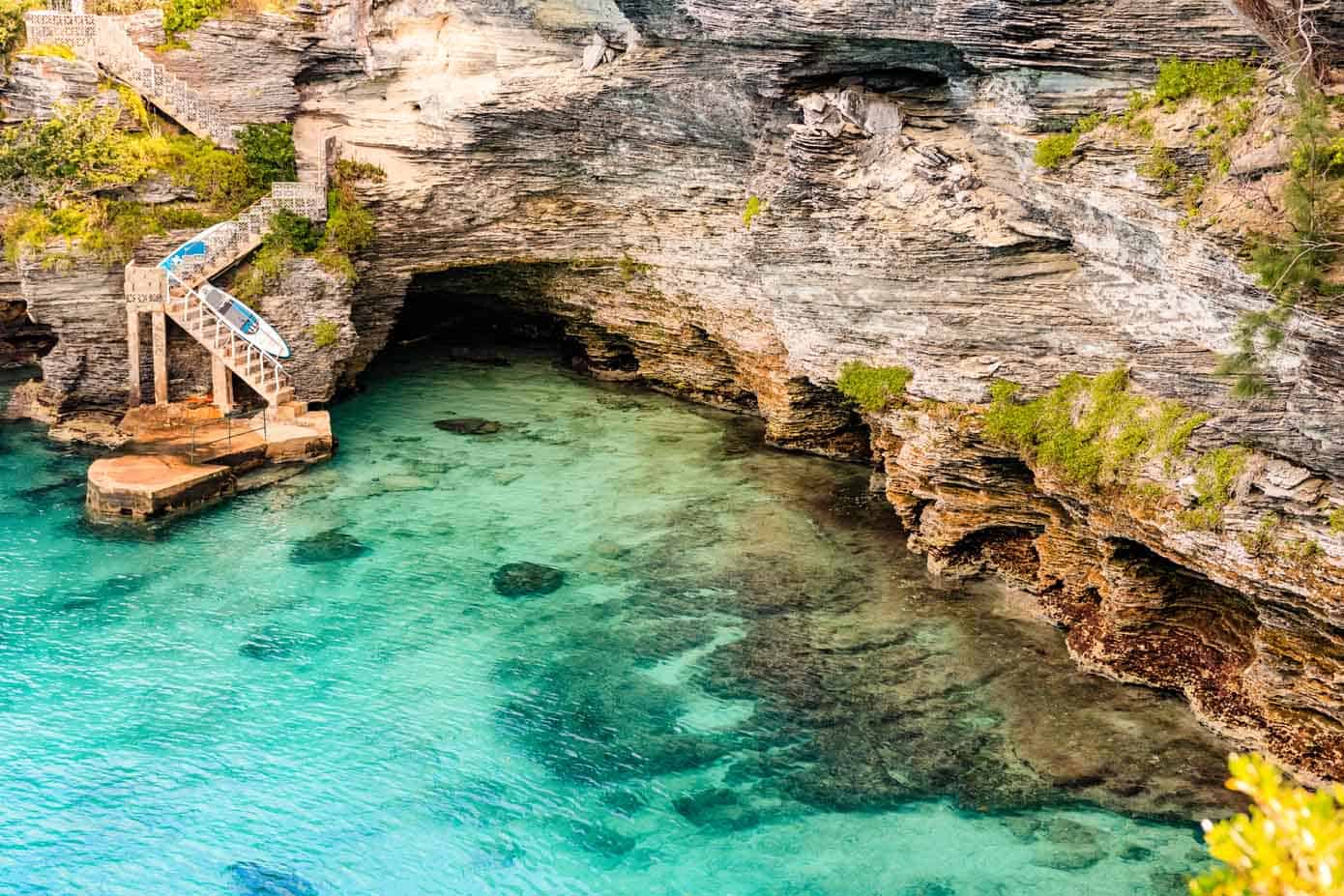
Got a few free days and looking to go on a trip, but don’t have a passport? Don’t worry, you still have plenty of options! If you passport has expired, or you never got a passport in the first place, you are still able to visit several foreign countries as a U.S. citizen. The answer to your “problem” is a closed loop cruise.
These types of cruises allow you, as an American, to sail to amazing destinations without a passport. Below, we take a look at what closed loop cruises are and tell you exactly which places you can visit on a closed loop cruise.
What Is a Closed Loop Cruise?
First things first, though—what is a closed loop cruise? The answer is right there, in the name. Closed loop cruises have “closed” itineraries, meaning that they start and end in the same U.S. port. On the way, however you may visit some other destinations, whether within the United States or in other countries. All closed loop cruises are round-trip cruises from the same port in the United States.
Places You Can Go on a Closed Loop Cruise (Without a Passport)
Even though closed loop cruises can’t take you wherever you want to go, the destination choices may be more diverse than you’d expect. From the beaches of the Bahamas to the wilderness of Alaska, these are the greatest place you can visit on a closed loop cruise without a passport.
Explore the rugged coasts of Alaska on a closed loop cruise from cities like Seattle and San Francisco . Visit the historic coastal towns of Skagway, Sitka and Juneau, and see iconic wildlife, from orcas and whales to brown bears and bald eagles.
Cruise around the Hawaiian Islands and soak up that glorious tropical sunshine. See waterfalls and rainbows, enjoy amazing Polynesian food and hit the waves on a surfboard. Cruises to Hawaii start in most major West Coast cities, such as San Diego , Los Angeles and Seattle.
New England and Eastern Canada
Discover the rocky coasts of New England and eastern Canada on a closed loop cruise from Boston or New York City. Indulge in world-class seafood, see beautiful lighthouses, visit seaside villages and explore important historic sites.
One of the most accessible tropical islands from the U.S. East Coast, Bermuda is a popular destination for closed loop cruises. You can visit this gorgeous, historic island on round-trip cruises from Boston and other East Coast ports. Swim with dolphins , visit the Royal Navy Dockyard or scuba dive to a shipwreck.
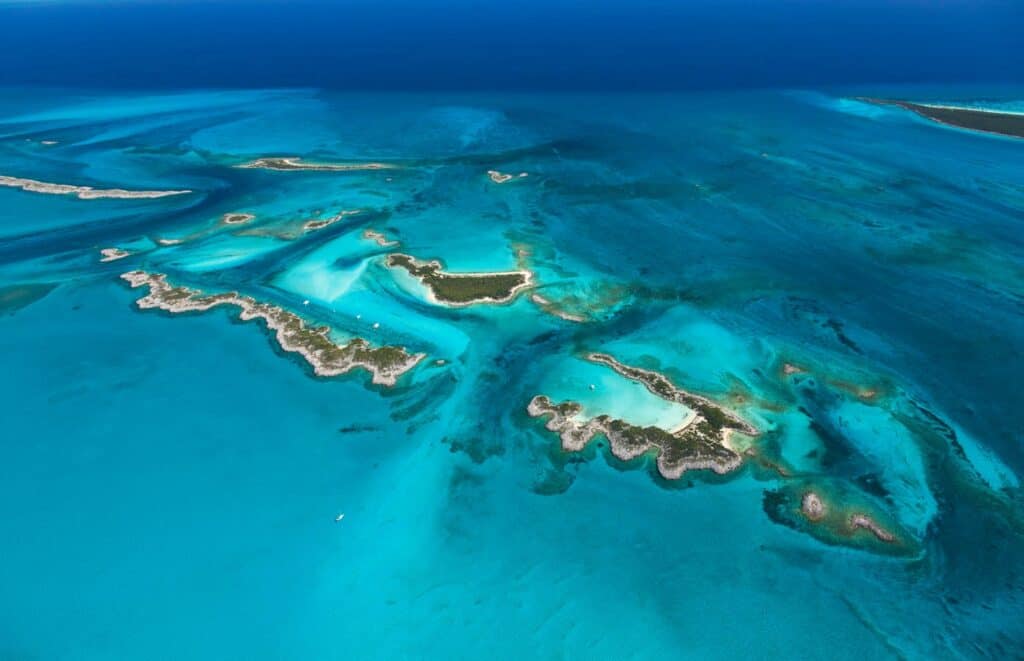
The Bahamas
Blessed with near-perpetual sunshine and stunning beaches, the Bahamas are one of the world’s most popular cruise destinations. As a Caribbean island nation, it’s an excellent place to visit without a passport on closed loop cruises. Departure ports include Baltimore , Charleston, Jacksonville, Miami and other southeastern U.S. cities.
The Caribbean
Comprised of the Western, Eastern and Southern Caribbean Island, the greater Caribbean region is home to some of the greatest beach destination on the planet. Go on a closed loop cruise from Florida and visit such stunning islands as St. Lucia, Barbados, the U.S. Virgin Islands, Martinique and Bonaire. Remember, however, that some of these island nations may require you to have a passport to enter.
Whether it’s a Baja California cruise from San Diego or L.A., or a cruise to Cozumel from the East Coast, Mexico is a great closed loop cruise destination. Discover ancient temples and architecture, sample classic Mexican cuisine, sunbathe on amazing beaches and partake in endless outdoor adventures. Check out the best time to cruise to Mexico here .
So, for example, you can board a cruise ship in Miami, Florida , stop at least one foreign port in places like Mexico, the Bahamas or the Caribbean, and return to the port of Miami afterwards. This is a closed loop cruise. As a U.S. citizen, you will not need a valid passport to leave and re-enter the United States this way.
If, however, you depart from Miami, sail through the Panama Canal , visiting a foreign port on the way, and disembark in Los Angeles, you have not been on a closed loop cruise, even though both your departure and arrival ports are in the United States. These kinds of one-way cruises require all passengers to have a valid passport.
Good to know: Maritime laws state that cruise ships not sailing under the American flag must stop in at least one port of call outside the United States. Great examples of this include a stop in Canada on Alaska cruises , a stop in Bermuda on a round-trip from Boston, or a stop in Cozumel from Fort Lauderdale.
Remember: The start and end point of your cruise must be the same U.S. port.
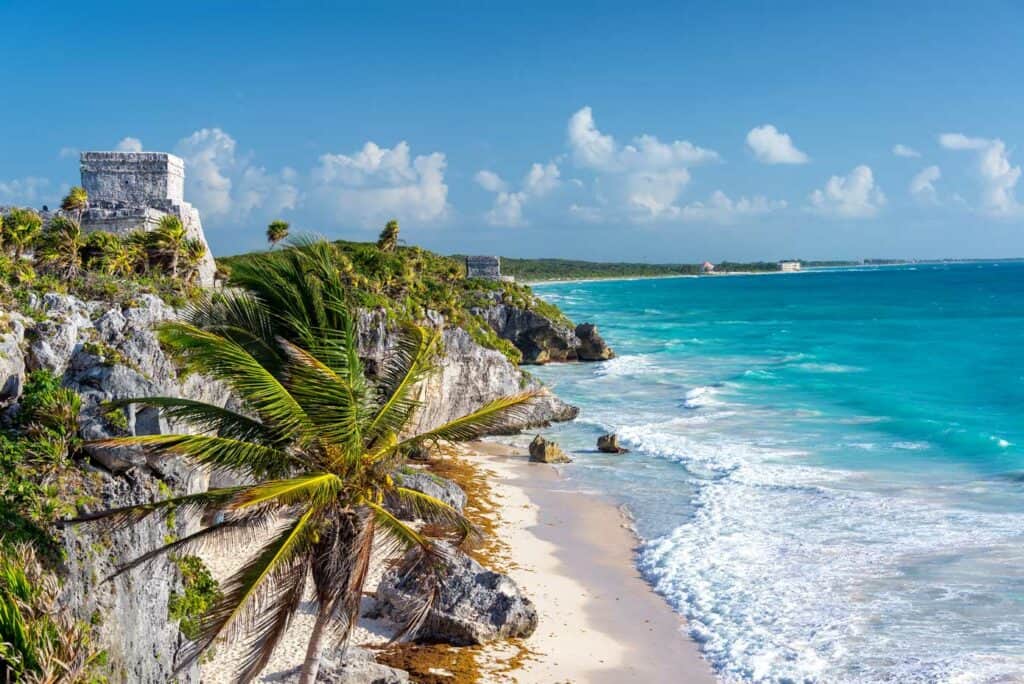
Do I Need a Passport on a Closed Loop Cruise?
American citizens do not need a passport to go on a closed loop cruise. They can leave and re-enter their own country without a passport. However, it is important to know that another proof of citizenship will be required instead.
According to the U.S. Customs and Border Protection Information Center , other valid proofs of citizenship you can use to go on closed loop cruises besides a passport are:
- Enhanced Driver’s License (EDL);
- Government-issued birth certificate; or
- Government-issued certificate of naturalization
If you’re 16 or older, you will also need a valid government-issued driver’s license or picture ID that contains your photo, name and date of birth.
U.S. citizens younger than 16 may use an original, notarized or certified copy of their birth certificate to go on a closed loop cruise. They do not need other documents to leave and re-enter the USA.
Note, however, that this does not necessarily mean that the countries on your itinerary, especially in the Caribbean, won’t still require you to have a passport to enter. If that’s the case, your cruise line might already require you to have a passport to board the ship—even if U.S. Customs and Border Protection does not.
If you aren’t sure, please ask your cruise line about this in advance. A closed loop cruise refers only to U.S. immigration regulations and passport requirements for U.S. citizens. It does not reflect those of the destinations on the closed loop cruise.
How Do I Know If My Cruise Is Closed Loop?
This is pretty straightforward. As we’ve mentioned above, a closed loop cruise is a cruise that departs from and returns to the same port in the United States. It’s really that simple.
Get a price on a cruise in this post
Born and raised in Belgium, Bram is currently based in the Pacific Northwest where he spends his days blogging, hiking, indulging in freshly roasted coffee and sipping craft beers. An experienced traveler, his… More about Bram R
Keep reading
Limited time cruise deals, oceania: simply more + up to 40% off.

Windstar: Boston to Bermuda

Fill out the form below to get a quick, free quote
- Name * First Last
- Do you have an agent you’ve worked with or are working with at Cruise Travel Outlet?
- How many passengers? * Please select one: Number of passengers: 1 2 3 4 5 or more
- Where are you in the booking process? * Please select one: I am... Still gathering information Looking for pricing Ready to book
- What type of cabin? *
- Preferred travel date *
- More Information Please tell us about the cruise or deal you're interested in. Be specific if you can.
- Get the latest hand-picked cruise deals and discounts delivered to your inbox.
- I agree to the privacy policy .
- Email This field is for validation purposes and should be left unchanged.
Comments (0)
Whoops! No comments yet. Start the conversation!.
Join the conversation
Submit a comment today.

Ever Heard of a Closed-Loop Cruise? Here’s What to Know About These Unique Sailings
A lesser-known rule allows u.s. travelers to sail to some international destinations without a passport as long as they are on what is known as a “closed-loop cruise.”.
- Copy Link copied

You don’t need a passport to sail through Canadian ports en route to Alaska as long as you start and end your cruise at the same U.S. port.
Photo by Heather Shevlin/Unsplash
A closed-loop cruise is a cruise that departs from and returns to the same U.S. port and remains in the Western Hemisphere. As such, it does not require the passengers to have a U.S. passport—even if the itinerary visits some international ports along the way.
According to U.S. Customs and Borders Protection (CBP), rules established by the Western Hemisphere Travel Initiative require that U.S. citizens who are traveling abroad hold a valid passport—unless they are on a closed-loop cruise. Those sailing on a closed-loop cruise can enter or leave the country with an alternative proof of citizenship, such as a government-issued driver’s license or birth certificate.
If your sailing does not end at the same port where you began—for instance, if you are thinking of booking a one-way Panama Canal itinerary from San Diego, California, to Miami, Florida—you will need a passport. And be aware that some Caribbean islands (more on this in the Caribbean listing below) do require a passport, which means your cruise line will require a passport before you board the ship if you are sailing to a destination that independently requires it.
Do kids need a passport for a closed-loop cruise?
Kids do not need a passport if they are sailing on a closed-loop cruise. If there is a passport requirement, each person in your party needs to have a passport, including infants and toddlers. All cruises throughout the world that sail in destinations outside the United States and that are not closed-loop cruises require a passport.
What form of I.D. do you need for a closed-loop cruise?
If you are on a closed-loop cruise that begins and ends at the same port in the United States and visits Canada, Mexico, or much of the Caribbean, you do not need a valid passport. According to CBP, all you need is documentation proving you are a U.S. citizen. In lieu of a passport, you can present these alternative documents on a closed-loop cruise:
- Enhanced driver’s license, which is a state-issued driver’s license that provides proof of U.S. citizenship (currently available only to residents of Michigan, Minnesota, New York, Vermont, and Washington)
- Government-issued driver’s license
- Government-issued birth certificate
- Official certificate of naturalization
Where do closed-loop cruises sail?
Closed-loop cruise itineraries that do not require a passport include:
- Alaska: Cruise to Alaska on closed-loop sailings that typically start and end on the West Coast, stopping in Canada along the way.
- Bahamas: There are numerous closed-loop cruises to the Bahamas from ports up and down the Eastern Seaboard.
- Bermuda: Sail to Bermuda on closed-loop cruises from East Coast ports, including Baltimore, Boston, New York City, and Port Canaveral, Florida.
- Canada: You can sail round-trip to Canada on a closed-loop cruise from Boston, New York, and New Jersey.
- Caribbean: Start and end your Caribbean sailing in ports like Miami, Fort Lauderdale, or Tampa in Florida; Mobile, Alabama; New Orleans; or Galveston, Texas. Keep in mind that some islands—including Martinique, Guadeloupe, Barbados, Trinidad and Tobago, and St. Bart’s—do require a passport.
- Mexico: Sail down to Mexico on a closed-loop western Caribbean cruise from Florida ports, New Orleans, or Galveston, or to the Pacific side of Mexico to destinations such as Cabo San Lucas, Puerto Vallarta, and Mazatlán from California ports—without a passport. Belize and Honduras, which are sometimes included on these itineraries, also waive their passport requirements for cruise ship passengers.
The risks of not bringing a passport on a closed-loop cruise
Even though a passport is not required on a closed-loop cruise, there’s a reason why cruise lines often strongly encourage passengers to bring a passport. While you are in a foreign port, if you run into any problems and need to cut your trip short and fly home, you will need a passport to fly back into the United States—passports are required for international air travel. It can also be an issue if you miss your embarkation due to a flight cancellation or delay and need to fly to an international port of call to catch up with your cruise.


Closed Loop Cruise: What Is It? Everything you need to know
Closed Loop Cruise: Have you ever had a few days to spare and an intense urge to travel to the warm Caribbean or on an adventure in Alaska, only to discover that you are missing your passport or that it has expired? You can benefit from the ease of a closed-loop trip as a citizen of the United States—you don’t even need a passport for this.
A Closed Loop Cruise: What Is It?

The cruise ports in Cozumel are home to the massive cruise ships Carnival Valor and Carnival Conquest.
Beginning and ending in the same U.S. port is a closed-loop trip. Take a voyage that starts and ends in Miami, Florida, or sail nonstop from Seattle, Alaska.
A cruise that starts and ends in different ports in the United States (such as Miami and Fort Lauderdale) is not considered a closed-loop trip.
Typically, a closed-loop cruise would leave from Miami, Florida, make her way to Bermuda and the Caribbean, and then return to Miami.
Miami, Florida, is home to an MSC cruise ship. Cruises that depart from the United States and are round-trip must fulfill certain requirements.
Ships flying foreign flags are required by U.S. maritime law to make a minimum of one port call in a foreign nation.
Because most cruise ships operate under foreign flags, Alaskan itineraries often involve a stop in Canada, and Hawaiian cruises are rather uncommon.
Since most Caribbean and Bahamas sailings already entail international travel, they don’t need to worry about the need.
The cruise must start and conclude in the United States to be eligible for closed-loop classification. It can, however, travel to adjacent contiguous regions or islands, such as the Caribbean, Bermuda, Mexico, and Canada, that are part of the continental United States.
Cruise Ship Pilot: What is their Role and Responsibility?
Is a passport required for closed-loop cruises?

Passports are typically not required for closed-loop cruises. This is among the factors contributing to the popularity of these routes. Of course, if you have a passport or passport card, you can use them as identification. On closed-loop cruises, however, citizens of the United States are permitted entry and exit of the nation upon presentation of valid identification.
In addition to a birth certificate or passport, an enhanced driver’s license proves citizenship and identity.
They can be used to re-enter the United States at land, sea, and air border crossings, but not at airports.
The original, notarized, or certified copy of a birth certificate is acceptable for minors under 16.
Social Security numbers and voter registration cards are not accepted as evidence of citizenship.
If you are a lawful permanent resident (LPR) of the United States, there are still additional regulations. Although the U.S. government does not mandate passport ownership, it is always wise to check the regulations at the places on the itinerary, as they may change. To re-enter the country if you are an LPR, you will require an I-551 or Green Card. And whether or not you’re on a closed-loop cruise, you’ll need a passport if you’re not a citizen or legal permanent resident of the United States.
What is a Pullman Bed on a Cruise Ship and does it work?
There are a few things to be aware of if you decide to take advantage of this chance to travel without a passport. For instance, let’s say something goes wrong and you have to take a plane back to the United States. In this scenario, boarding an airplane would require a passport.
Additionally, you’ll have to find your way home or catch up with the trip if you miss the ship in one of the ports, which could be challenging without a passport. That won’t occur if you reserve an excursion with Celebrity Cruises, as the ship will wait for you.
What Documents Are Necessary for Non-US Nationals on a Closed-Loop Cruise?
For U.S. citizens, the majority of Caribbean islands just demand a picture ID. They may, however, demand a photo ID and a Permanent Resident Card from a U.S. Lawful Permanent Resident (LPR) (also known as a green card or I-551).
Should you not be a citizen of the United States or a lawful permanent resident, you will need to provide the necessary paperwork, which may include a passport. Passports are required for all cruises, even closed-loop sailings, for non-citizens of the United States.
According to U.S. Customs & Border Protection, U.S. citizens can enter the United States with a birth certificate and government-issued photo ID, including:
- U.S. Passport
- Passport Card
- Birth Certificate
- Enhanced Driver’s License
- Trusted Traveler Program card (NEXUS, SENTRI, or FAST)
- U.S. Military identification card when traveling on official orders
- U.S. Merchant Mariner document when traveling in conjunction with official maritime business
- Form I-872 American Indian Card
- Enhanced Tribal Card
Related Posts
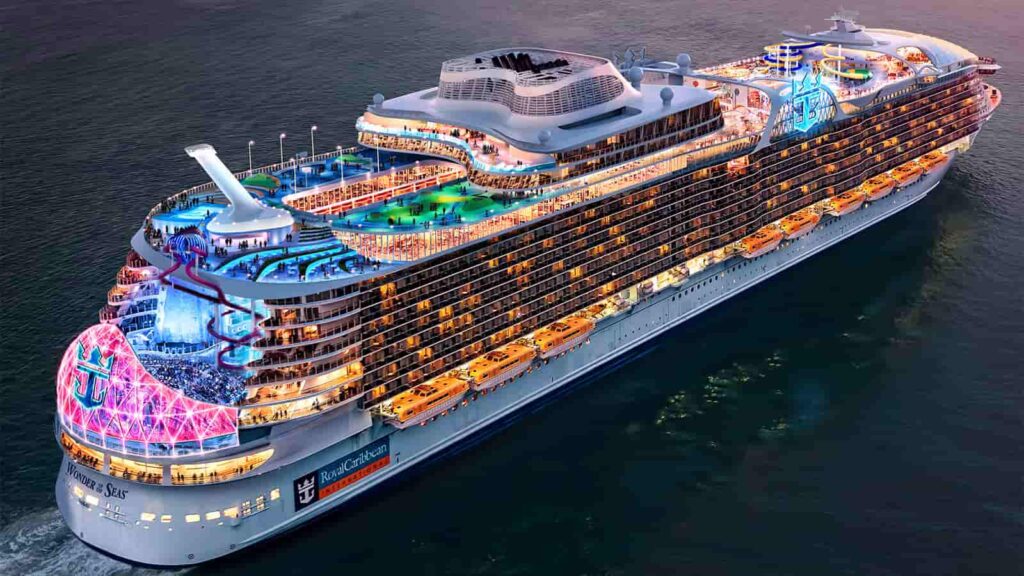
Royal Caribbean Cruises, History, Destinations and Itineraries

Ambassador Cruise Line: Ownership and History
Leave a comment cancel reply.
Your email address will not be published. Required fields are marked *
Save my name, email, and website in this browser for the next time I comment.

What Is A Closed-Loop Cruise: ID, Tips, Best Itineraries

There are many types of cruises, but in recent years one that is becoming more popular is the closed-loop cruise. One reason for this is simple; there are no passport requirements.
However, travelers do need appropriate government-issued documentation when they cruise. This particular type of itinerary begins and ends in the same U.S. port. and sails entirely within the Western Hemisphere.
They are considered round-trip cruises that start and end in U.S. ports.
Western Hemisphere Travel Initiative (WHTI)
The Western Hemisphere Travel Initiative (WHTI) is where the concept of a closed-loop cruise started. The WHTI is a result of the recommendations of the 9/11 Commission following the terrorist attacks in 2001.
The goal was to improve and strengthen border protection for the United States. However, an additional goal was to make the process of entering the U.S. more efficient and convenient.
Several parts of the initiative deal with citizens from Canada, Mexico, and Bermuda, in addition to the United States.
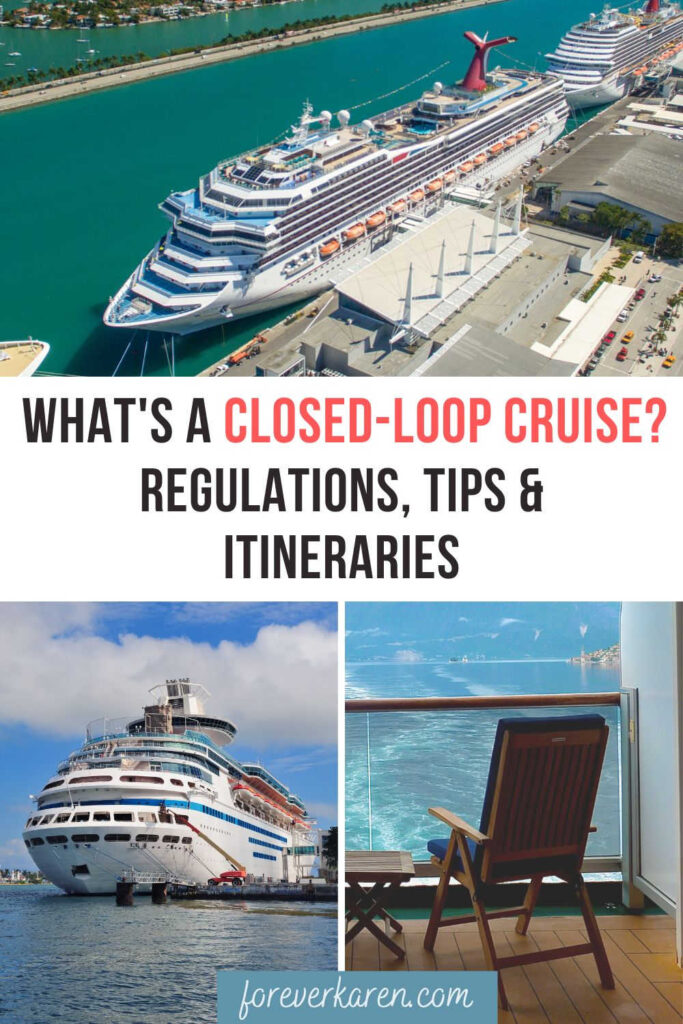
The WHTI introduced the concept of a ‘closed-loop cruise’ as a cruise that begins and ends in the same U.S. port. This type of sailing was granted special documentation requirements to simplify travel.
Specifically, on a closed-loop cruise, U.S. citizens were required to have only a birth certificate and a government-issued photo ID.
This was a significant difference as not all Americans want the hassle or expense of getting a passport. Being able to travel without a passport encourages international exploration.
As Canadians who love to travel, my wife Karen and I have had passports since we were young adults. Also, since Karen was born in Singapore to British parents (her Dad was in the British army), traveling is in her blood!
However, passports may be unnecessary for millions of Americans born and raised in states such as Florida, California, or Texas. They could drive to the nearest cruise port, take a closed-loop cruise, and see another part of the world.
The only restrictions are that the cruise ship must remain within the Western Hemisphere and return to the same cruise port they departed from.
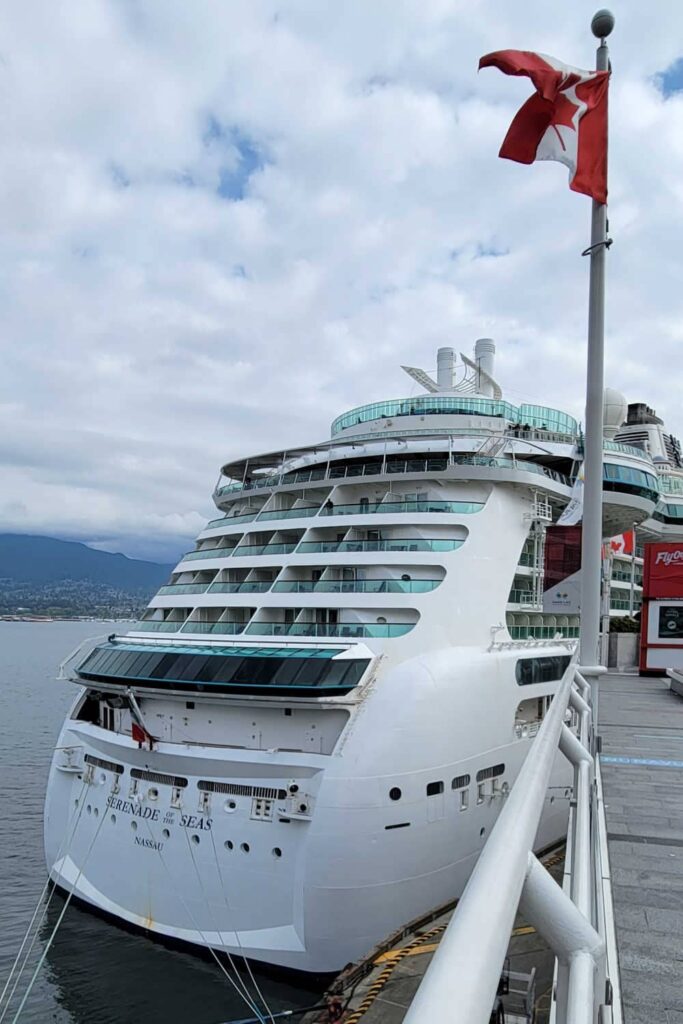
The Jones Act And the Passenger Vessel Services Act (PVSA)
The Jones Act and Passenger Vessel Services Act were established over 100 years ago in 1886. These two acts of maritime law restrict cruise ships that are NOT U.S.-built, owned, and documented.
A cruise company that does not register its ships in the U.S. must include an international port in its itinerary if it departs and returns from a U.S. port. A typical example of this is Alaska cruises that sail out of Seattle.
These Alaska cruises typically stop in Victoria, British Columbia, Canada, to comply with the Jones Act. If they don’t, the cruise line will face USD 778 per passenger fines!
To have reduced regulations impacting their operations, virtually all cruise companies have their ships registered in tax havens such as the Bahamas.
As a company in a foreign country, this enables them to have a more cost-effective operation and offer lower prices to customers.
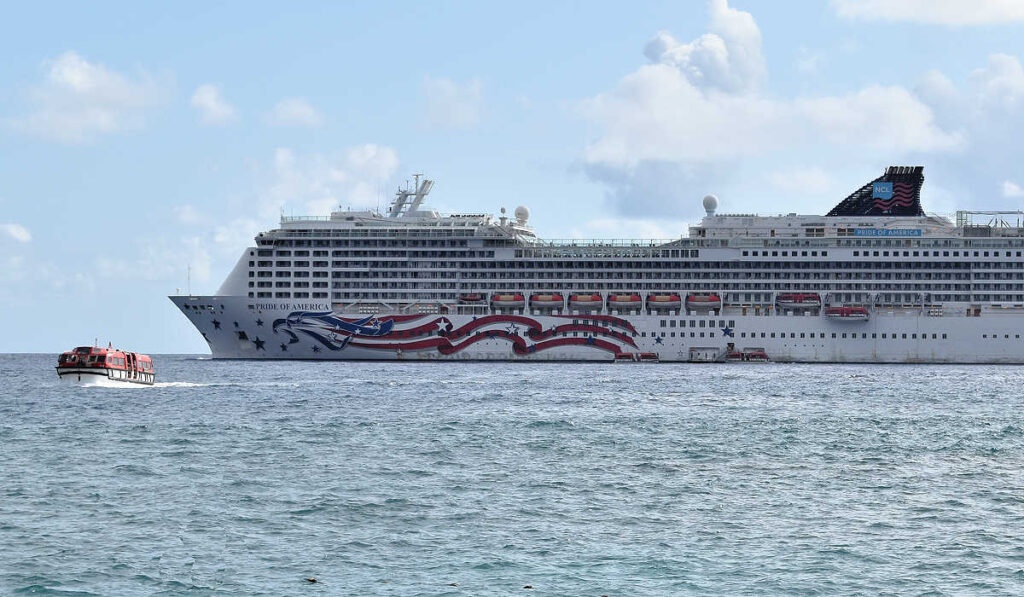
Norwegian’s Pride of America is one cruise ship that maintains U.S. documentation and registration. This ship cruises exclusively around the Hawaiian Islands but is considered a U.S.-based cruise ship and not within the restrictions of the Jones Act.
Are U.S. Territories Eligible As U.S. Ports?
Yes, permanent residents or U.S. citizens residing in any U.S. Territories can sail in a closed-loop cruise from their ports of call.
This includes the following territories:
- Puerto Rico
- U.S. Virgin Islands
- American Samoa
- Swains Island
- Commonwealth of the Northern Mariana Islands
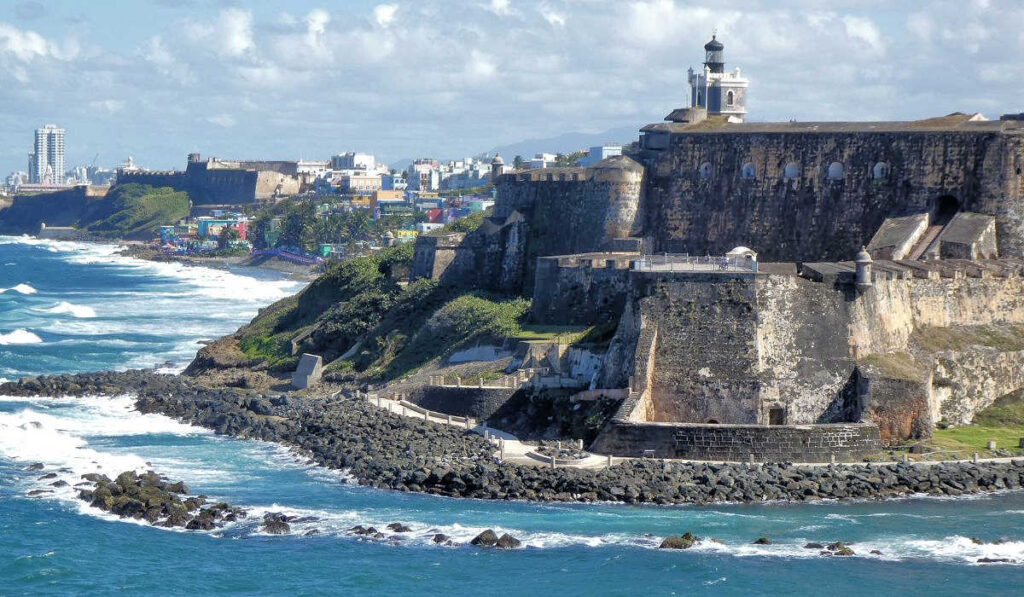
Old San Juan , Puerto Rico, is a popular embarkation port because it puts you further south in the Caribbean.
What Are the Benefits of a Closed-Loop Cruise?
There are many benefits to these cruises. Here are a few reasons you may want to book this type of cruise:
- Begin and end at the same port.
- Many options since they are the most popular type of cruise.
- You can park close to the port and retrieve your vehicle at the same location.
- Book round-trip flights.
- Planning is simple.
- Great for international travel.
You can use one word to describe these cruises – Simple ! They are easy to travel to since you need just a round-trip flight.
If you live within driving distance of the cruise port, you can have your car waiting when you disembark. The majority of cruises from the U.S. are closed-loop.
It’s easy to book multiple (back-to-back) cruises in regions like the Caribbean. Book a 2nd cruise with a different itinerary leaving from the same port.

Pre-Covid, we had booked three back-to-back cruises, all sailing from Fort Lauderdale and Miami. This enabled us to try different cruise lines and different ships but with a single flight from Vancouver to Florida.
Travel Documentation Requirements
Although a passport is not required, you should still plan on bringing other government-issued photo IDs and proof of citizenship.
Proof of citizenship can be one of the following:
- Birth Certificate – original or copy is acceptable.
- Consular Report of Birth Abroad.
- Certificate of Naturalization.
A photo ID can be one of the following:
- Green Card.
- Enhanced Driver’s License.
- U.S. Passport Card.
Note the photo ID cards all use RFID (Radio Frequency Identification) technology to reduce time during screening or at checkpoints.
What Is An Enhanced Driver’s License (EDL)?
An enhanced driver’s license is a low-cost travel document that indicates both your identity and citizenship.
The application cost varies by state but is typically USD 40-60 in addition to the price of a primary driver’s license.
However, only Michigan, Minnesota, New York, Vermont, and Washington currently issue Enhanced Driver’s Licenses.
What Is A U.S. Passport Card?
A United States Passport Card is a low-cost, limited-use travel document produced by the Department of State. It is not accepted for international air travel.
At the time of this writing, the application fee is USD 30.
Where Can You Cruise From?

You can take a closed-loop cruise from any cruise port in the United States. Here are a few of the most popular U.S. cruise ports:
- Fort Lauderdale
- Los Angeles
- New York City
- San Francisco
What Countries Can You Visit?
Since these cruises stay within the Western Hemisphere, this provides a broad list of available countries.
The Western Hemisphere includes Northern America, Central America, South America, Polynesia, Greenland, Western Africa, and parts of Europe.
The following countries are in the Americas and lie entirely within the Western Hemisphere region:
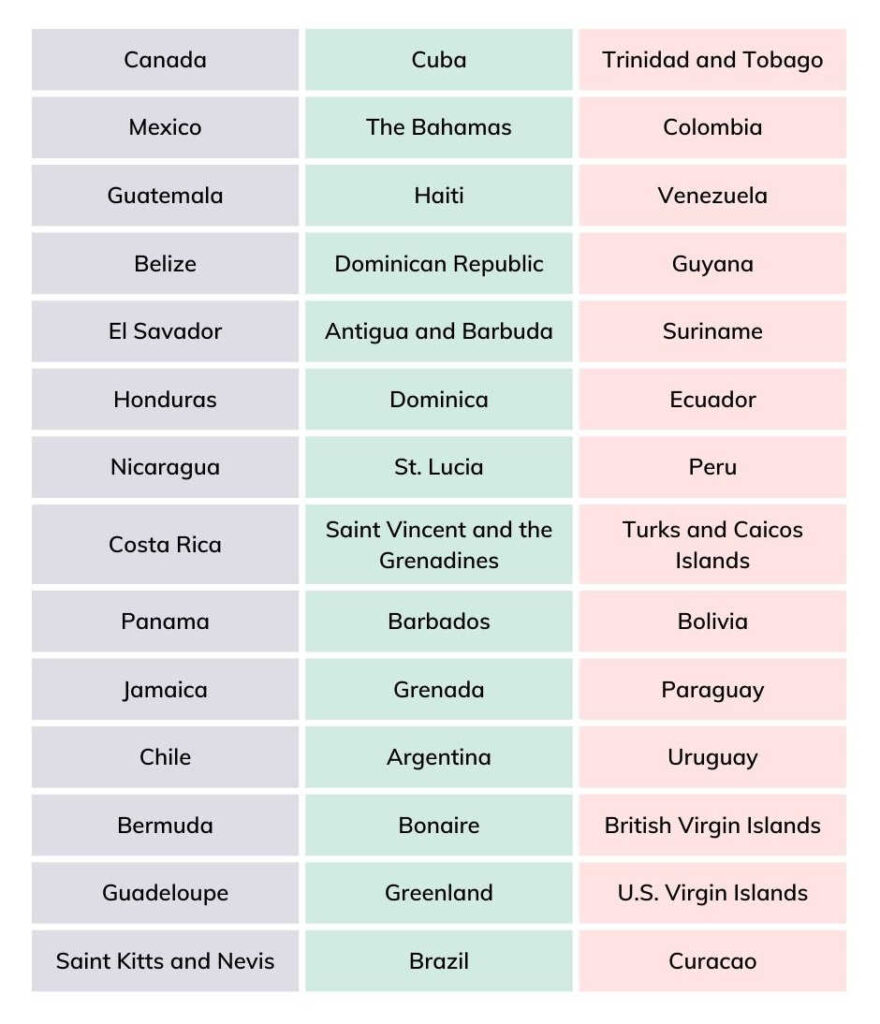
Outside of the Americas, there are other countries within the boundaries of the Western Hemisphere. The following countries or territories are also within and available for cruising from a U.S. port.
- Northern Ireland
However, most cruises that would be round-trip from a U.S. port to these destinations would not qualify as a closed loop. These cruises would likely include ports beyond the Western Hemisphere.
Popular Cruise Options
Here are a few cruises that qualify as closed-loop according to the WHTI guidelines.
Alaska Cruises
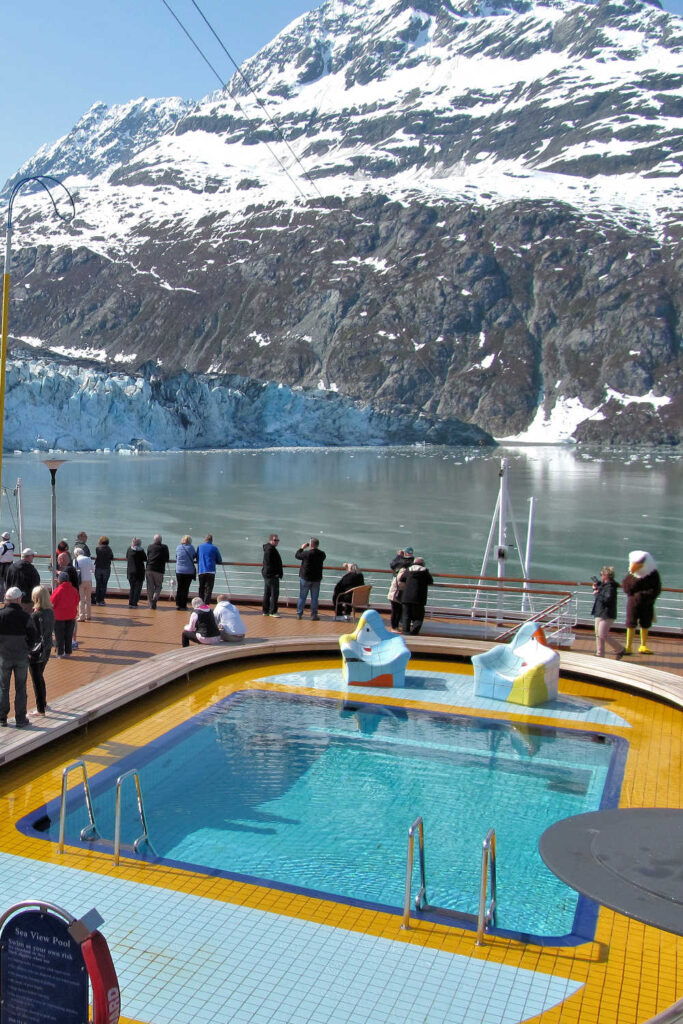
Cruising to Alaska is on the bucket list of many travelers. We love it so much that we cruised there twice last year!
Alaska cruises depart from Vancouver or Seattle , as well as San Francisco and Los Angeles. However, only Seattle and San Francisco qualify as closed-loop cruises within the WHTI guidelines.
San Francisco cruises are a minimum of 10 days due to the extra distance in sailing from California. Seattle cruises are typically seven days but can be up to 14 days in a close-loop format.
Due to the arctic climate, the Alaska cruise season is short and only from May to September. You can get the best price if you’re willing to cruise on the fringe season in May or September.
Caribbean Cruise
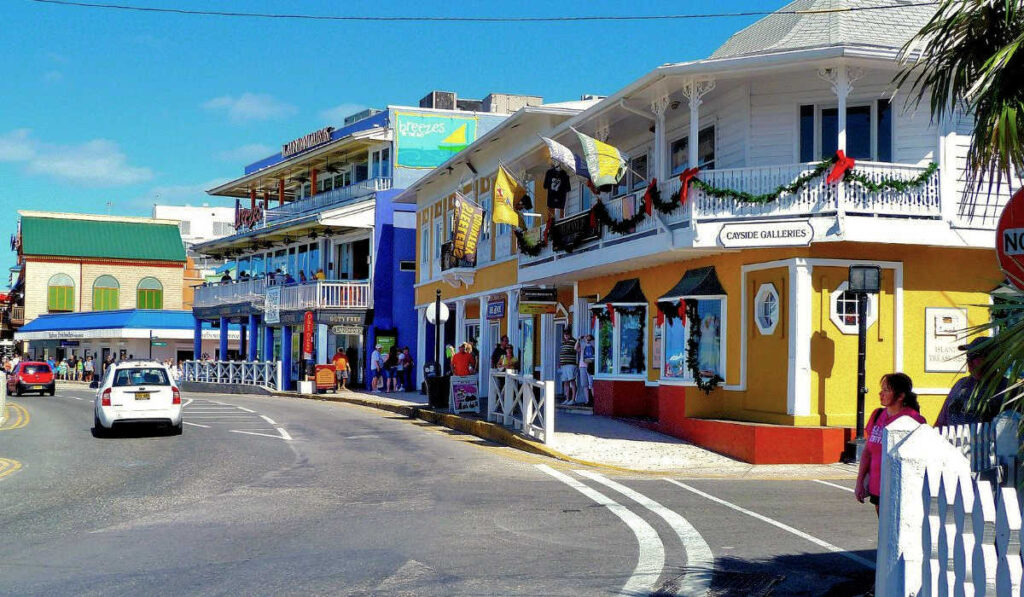
The Caribbean is a perfect January cruise for anyone wanting to escape the winter cold. Most Caribbean itineraries sailing out of Florida and Texas are continuous loops because they depart from and return to the same port.
According to Marine Insight, the Port of Miami, Port Canaveral, and Port Everglades, all in Florida, are the Top Three Largest Cruise Ports in the World.
Mexican Riviera
For those U.S. citizens living on the west coast or in California, the Mexican Riviera is an excellent closed-loop cruise. Most cruises depart from Los Angeles, but some also depart from San Diego or San Francisco.
The most popular Mexican Riviera cruise ports include Cabo San Lucas, Mazatlan, and Puerto Vallarta on 7-day cruises. However, La Paz, Loreto, and Manzanillo are popular on longer cruises of 8-14 days.
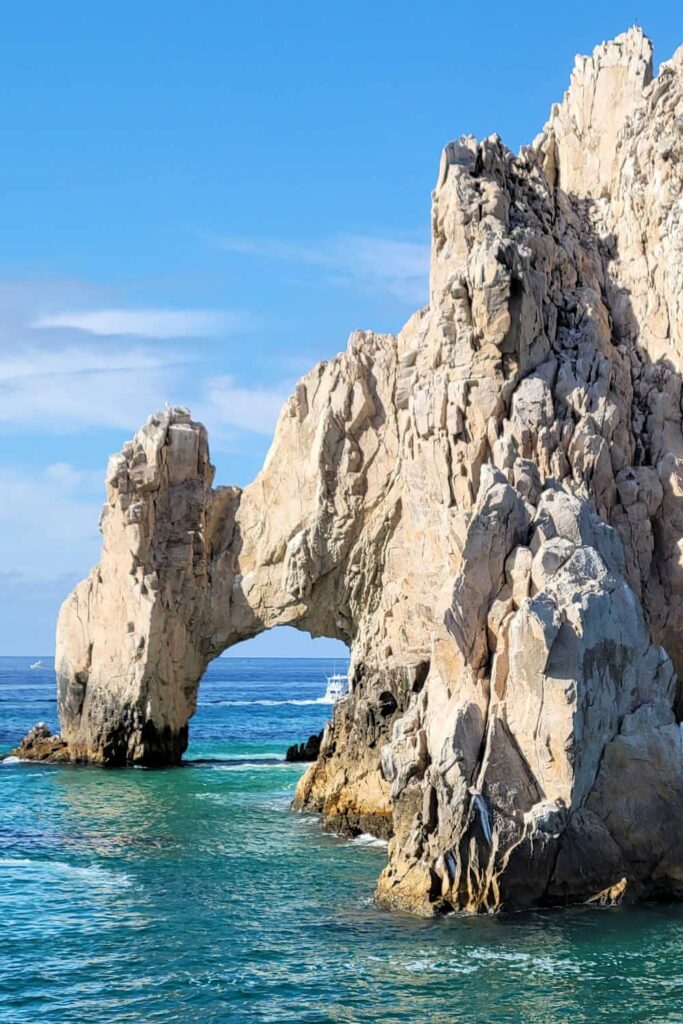
The Mexican Riviera cruise season is year-round, with the winter months of December to April considered peak season.
New England
Travelers love New England because it experiences four seasons and is rich in history. This region is served primarily by American Cruise Lines (ACL), with smaller ships carrying less than 200 passengers.
Departure ports include Boston, Providence-Rhode Island, and Portland-Maine. Cruise length ranges from 6-11 nights with all destination ports within New England.
South Pacific/ Polynesia
Another exotic continuous loop cruise includes Hawaii and Polynesia. Just south of the Equator, Polynesia and year-round warm temperatures and gentle Pacific breezes.
The cruise departs and returns to Los Angeles, and typical itineraries are 28 to 32 days.
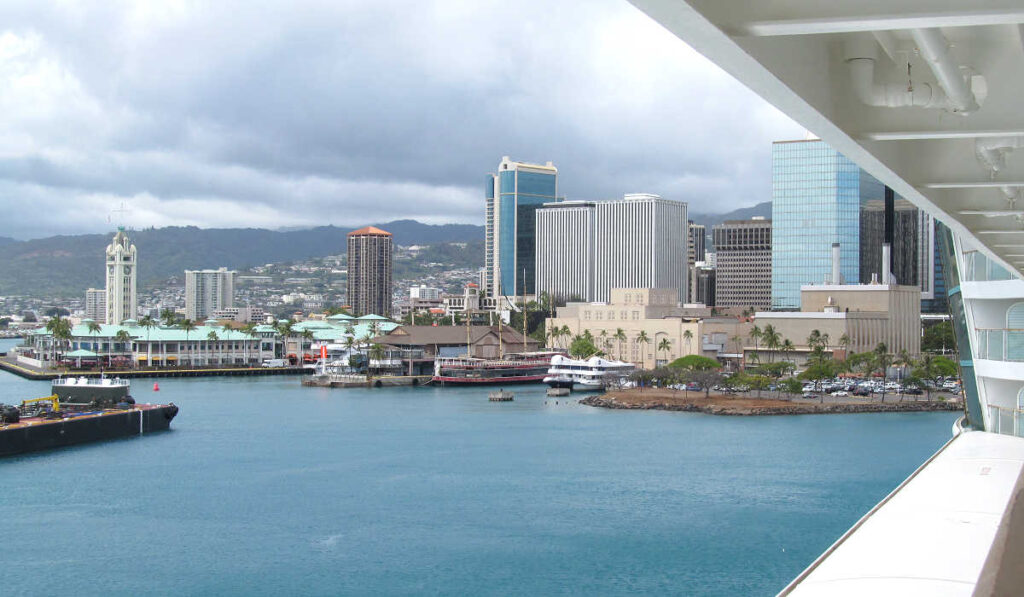
World Cruises
A world cruise is on the bucket list for many cruisers, but the cost can be prohibitive. Many world cruises start and end at the same U.S. port, such as Los Angeles, Miami, or Fort Lauderdale.
However, only partial world cruises can be considered “closed-loop.” This is due to the restriction that the itinerary must be exclusively in the Western Hemisphere.
This partial world cruise shown above is a 74-night cruise leaving Fort Lauderdale and includes all of South America and the Antarctic. This itinerary is a closed-loop cruise because it remains in the Western Hemisphere and starts and ends from a U.S. port.
As a closed-loop cruise, you would not need a passport according to WHTI requirements. However, you would benefit by having a passport in case some countries require one.
Regardless, this shows the rich itineraries possible in a closed-loop cruise. There are many exciting cruises available that can be considered a closed loop.
What Cruise Lines Offer Closed Loop Cruises
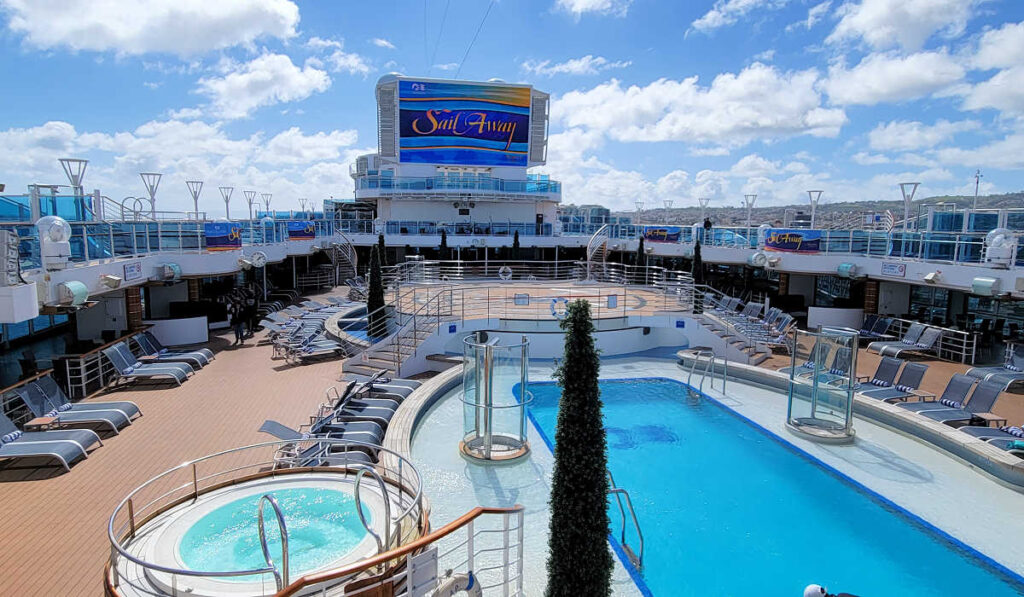
All major cruise lines that sail from U.S. ports of call offer these types of cruises. Here’s a short list of cruises lines you can consider:
- Norwegian Cruise Line
- Carnival Cruise Lines
- Royal Caribbean
- Princess Cruises
- Celebrity Cruises
- Holland America
- Disney Cruises
- MSC Cruises
Luxury and premium cruise lines such as Silversea, Oceania, Cunard, or Regent Seven Seas also offer closed-loop cruises. However, their fleet of ships is usually limited, with fewer options for itineraries.

How To Book Your Cruise
You can book the same as you book any other cruise. Book through your local travel agent if you want to let a professional handle all the details. Just let them know you want a ‘Closed-Loop Cruise,’ and they will find what you need.
Travel agents can book your transfers, excursions, flights, and more. The cost may be slightly higher than booking yourself, but you’ll feel less stressed by leaving it to the experts.
One of our favorite sites for booking online is VacationsToGo . They claim to be the World’s Largest Cruise Agency, but I shop there for the prices!
When booking through their site, select a region within the Western Hemisphere and check the box for “Return to Same Port.” Also, if you have a cruise port near you, select that as your departure port to focus your search.
Other popular online sites include Expedia.com, CruiseCritic.com, iCruise.com, and many others. You can also book through the cruise lines’ site, but they frequently have higher prices.
Final Thoughts
In my view, the worst day cruising is still better than the best day “back in the office!” However, we are lifelong cruisers, and I may be biased.
Closed loop cruises are a specific category of cruise that makes it a bit easier to cruise. There are so many potential destinations that you could do 10 or 20 closed-loop cruises that were all different.
Consider Alaska, the Caribbean, Mexican Riviera, or even a partial world cruise. All of these can be compliant with WHTI’s guidelines if booked correctly.
If you haven’t cruised before, a closed-loop cruise is a great way to get started. I hope you’ll eventually love cruising as much as we do!

Thursday 3rd of August 2023
Some of your information seems to conflict with what I read on the US Customs and Border Protection page. It's my understanding that a passport is required for sea travel on closed loop cruises that travel to South American countries.
Forever Karen
Sunday 6th of August 2023
The US Customs and Border Protection Page says "U.S. citizens on closed-loop cruises (cruises that begin and end at the same U.S. port) are able to enter the United States with a birth certificate and government-issued photo ID. Please be aware that you MAY still be required to present a passport to enter the countries your cruise ship is visiting." Emphasis on the word "May."
Privacy Overview
Winter is here! Check out the winter wonderlands at these 5 amazing winter destinations in Montana
- Plan Your Trip
What Is Considered A Closed Loop Cruise
Published: January 5, 2024
by Garnette Salgado
- Travel Guide
Introduction
A closed loop cruise, also known as a round trip cruise, is a type of cruise that departs from and returns to the same port. This means that passengers embark on the cruise at a specific port, explore various destinations, and ultimately return to the original port of departure. It offers a convenient and hassle-free way to travel and see multiple destinations without the need for additional flights or ground transportation between ports.
Closed loop cruises have become increasingly popular among vacationers for their simplicity and practicality. In this article, we will explore the definition of a closed loop cruise, the advantages and disadvantages of this type of vacation, popular destinations for closed loop cruises, the environmental impact, safety measures, and cruise line policies associated with closed loop cruises.
Whether you’re a seasoned cruiser or considering your first voyage, understanding what a closed loop cruise entails and the various aspects surrounding it can help you make informed decisions and fully enjoy your cruising experience. So, let’s dive in and explore the world of closed loop cruises!
Definition of a Closed Loop Cruise
A closed loop cruise, sometimes referred to as a round trip cruise, is a type of cruise vacation that begins and ends at the same port. Unlike open-jaw cruises, where the journey starts at one port and ends at another, closed loop cruises provide a convenient and seamless travel experience by eliminating the need for additional transportation arrangements.
When embarking on a closed loop cruise, passengers board the ship at a specific port and set sail to explore multiple destinations within a predetermined itinerary. These destinations can vary depending on the cruise line and the specific route, encompassing a range of exotic locations such as Caribbean islands, Mediterranean cities, Alaska’s rugged coastline, and more.
After visiting the various ports of call and experiencing the attractions and activities offered at each destination, the cruise ship returns to the original port of departure. This means that passengers can enjoy the excitement of exploring different places while having the peace of mind that they will ultimately return to their starting point, simplifying travel logistics.
One key benefit of a closed loop cruise is that it eliminates the need for additional air or ground transportation between ports. This can save travelers time and money, as they don’t have to book separate flights or arrange ground transportation to return to their starting point. Additionally, it provides a sense of security and stability, knowing that the ship serves as a home base throughout the journey.
Closed loop cruises are offered by numerous cruise lines and can vary in duration, ranging from a few days to several weeks. They provide an all-inclusive vacation experience, with accommodations, meals, entertainment, and onboard activities included in the cruise package.
Overall, a closed loop cruise offers a convenient and hassle-free way to explore multiple destinations without the complexity of arranging additional transportation. It provides a sense of continuity and allows passengers to fully immerse themselves in the cruise experience from the moment they step on board until they return to their original port of departure.
Advantages of Closed Loop Cruises
Closed loop cruises offer numerous advantages that make them an attractive option for travelers looking for a convenient and enjoyable vacation experience. Here are some of the key advantages of choosing a closed loop cruise:
- Convenience: One of the biggest advantages of closed loop cruises is the convenience they provide. Starting and ending your journey at the same port eliminates the need for additional flights or ground transportation between destinations. This means less time spent on logistics and more time to relax and enjoy your vacation.
- Cost Savings: By eliminating the need for additional transportation arrangements, closed loop cruises can save you money. You don’t have to purchase multiple flights or arrange ground transportation between ports, which can add up quickly. The all-inclusive nature of cruise vacations also helps you budget more effectively, as meals, accommodations, and many onboard activities are included in the package price.
- Exploring Multiple Destinations: Closed loop cruises offer the opportunity to visit multiple destinations within a single trip. Whether you’re sailing through the Caribbean, exploring the Mediterranean, or experiencing the beauty of Alaska , you can discover a variety of picturesque ports and diverse cultures without the hassle of changing accommodations or organizing transportation.
- Stress-Free Travel: With closed loop cruises, everything is taken care of for you. Once you board the ship, you can relax and enjoy the amenities and activities offered onboard. There’s no need to worry about finding transportation, planning meals, or organizing entertainment. The cruise line takes care of all the details, allowing you to simply unwind and indulge in a stress-free vacation.
- Services and Amenities: Today’s cruise ships are like floating resorts, offering a wide range of services and amenities to enhance your vacation experience. From luxurious accommodations and world-class dining options to entertainment, spa facilities, and thrilling activities, you’ll find everything you need for a memorable trip right onboard the ship.
- Flexibility and Variety: Closed loop cruises come in various durations and itineraries, allowing you to choose the one that best fits your preferences and schedule. Whether you’re looking for a short weekend getaway or an extended voyage, you can find a cruise that suits your needs. Additionally, with different ports of call, you have the opportunity to explore a variety of destinations and experiences during your trip.
These advantages make closed loop cruises an appealing option for vacationers who want a hassle-free and immersive travel experience. Whether you’re a first-time cruiser or a seasoned sea traveler, a closed loop cruise offers the perfect balance of convenience, affordability, and exploration.
Disadvantages of Closed Loop Cruises
While closed loop cruises have many advantages, it’s important to consider the potential disadvantages before embarking on your journey. Here are a few factors to keep in mind:
- Limited Destinations: Unlike open-jaw cruises that allow travelers to start and end their trip at different ports, closed loop cruises are restricted to specific itineraries that begin and end at the same port. This means that you may miss out on visiting certain destinations that are not included in the itinerary. If there’s a particular place you’ve always wanted to explore but it’s not part of the closed loop cruise you choose, you may need to consider alternative travel options.
- Potential for Crowds: Closed loop cruises are popular among vacationers, which means that the ports of call and the cruise ship itself can sometimes be crowded. During peak travel seasons, you may encounter long lines and busy attractions at each destination. If you prefer a more secluded and intimate vacation experience, a closed loop cruise may not be the best choice for you.
- Less Time in Each Destination: As closed loop cruises cover multiple destinations within a fixed amount of time, the time spent at each port of call is often limited. This can make it challenging to fully explore and immerse yourself in each destination and experience all it has to offer. If you prefer a more in-depth exploration of each location, you may need to consider alternative travel options that allow for longer stays at specific destinations.
- Sea Sickness: While modern cruise ships are equipped with stabilizers to minimize motion, some individuals may still experience sea sickness. The constant movement of the ship can cause discomfort and nausea for those who are prone to motion sickness. If you have concerns about seasickness, it’s important to take preventive measures or consider alternative vacation options.
- Cruise Ship Culture: Each cruise ship has its own unique culture and atmosphere. While the vast majority of passengers enjoy their cruise experience, it’s important to acknowledge that not every traveler may be suited to the cruise ship environment. If you prefer a more independent and spontaneous travel style, a closed loop cruise with its structured activities and scheduled dining may not align with your preferences.
It’s essential to carefully consider these potential disadvantages when deciding on a closed loop cruise. Understanding the limitations and potential challenges can help you make an informed choice and ensure that your vacation aligns with your expectations and preferences.
Popular Destinations for Closed Loop Cruises
When it comes to closed loop cruises, there are a variety of popular destinations that offer captivating experiences and breathtaking scenery. Here are some of the top destinations that attract cruise enthusiasts:
- Caribbean: The Caribbean is a perennial favorite for closed loop cruises. With its stunning turquoise waters, white sandy beaches, and vibrant culture, this region offers a treasure trove of experiences. From exploring ancient ruins in Mexico’s Mayan Riviera to snorkeling in the crystal-clear waters of the Bahamas , a Caribbean cruise promises blissful relaxation and tropical adventures.
- Alaska: For those seeking a more rugged and nature-filled expedition, an Alaskan closed loop cruise is an excellent choice. Witness towering glaciers, majestic fjords, and abundant wildlife such as bears, whales, and eagles. Glacier Bay National Park, Juneau, and Ketchikan are just a few of the captivating destinations you can explore on an Alaskan cruise.
- Mediterranean: A closed loop cruise through the Mediterranean offers a rich tapestry of history, culture, and culinary delights. From the iconic cities of Barcelona and Rome to the dreamy Greek islands of Santorini and Mykonos, you’ll have the opportunity to immerse yourself in the enchanting charm of this diverse region.
- Hawaii: Known as a paradise for beach lovers, Hawaii is a captivating destination for closed loop cruises. Experience the beauty of the Hawaiian Islands, including Oahu, Maui, Kauai, and the Big Island. From the iconic Waikiki Beach to the dramatic landscapes of Volcanoes National Park, Hawaii offers a diverse range of experiences for nature enthusiasts and culture seekers alike.
- Baltic Sea: A closed loop cruise through the Baltic Sea is a journey steeped in history and charm. Explore the stunning cities of Stockholm, St. Petersburg, Copenhagen, and Tallinn, each offering a unique blend of medieval architecture, cultural heritage, and breathtaking coastal scenery.
- Bahamas: Just a short cruise away from Florida , the Bahamas is a popular destination for those looking for a quick getaway. With its pristine beaches, vibrant marine life, and exciting water sports activities, the Bahamas offer a perfect tropical escape.
These are just a few examples of the popular destinations for closed loop cruises. Other notable options include the South Pacific, the Norwegian Fjords, the Mexican Riviera, and more. Whether you prefer sun-soaked beaches, icy landscapes, cultural immersion, or a combination of it all, there is a closed loop cruise destination that will suit your vacation desires.
When choosing your closed loop cruise destination, consider the time of year, weather conditions, and specific attractions or experiences you wish to enjoy. Each destination has its own unique charm, and exploring the world through closed loop cruises allows you to experience the best of multiple destinations in a single journey.

Environmental Impact of Closed Loop Cruises
While closed loop cruises offer a convenient and enjoyable way to explore multiple destinations, it’s important to acknowledge the environmental impact that cruising can have. Here are some key considerations regarding the environmental impact of closed loop cruises:
- Carbon Footprint: Cruise ships are known for their significant carbon emissions, contributing to greenhouse gas emissions and climate change. The burning of fossil fuels for propulsion and onboard operations releases carbon dioxide and other pollutants into the atmosphere.
- Waste Management: The waste generated on cruise ships can be a major environmental concern. Waste disposal, particularly of plastics, can have a negative impact on marine ecosystems. It is essential for cruise lines to have effective waste management systems in place to minimize pollution and ensure proper waste disposal.
- Air and Water Pollution: Cruise ships release exhaust emissions that contribute to air pollution, including sulfur oxides, nitrogen oxides, and particulate matter. Additionally, improper wastewater treatment and discharge can lead to water pollution, impacting marine life and ecosystems.
- Ecological Damage: Cruise ship visits to fragile ecosystems, such as coral reefs and coastal habitats, can cause damage through anchor drops, pollution, and disturbance to marine life. It is important for cruise lines to maintain sustainable practices to minimize their ecological impact.
- Energy Consumption: Cruise ships consume vast amounts of energy to power various onboard facilities, including air conditioning, lighting, and entertainment systems. Reducing energy consumption and increasing the use of renewable energy sources are important steps towards minimizing the environmental impact of closed loop cruises.
It is encouraging to note that many cruise lines have implemented initiatives to reduce their environmental footprint. These initiatives include adopting cleaner fuel technologies, implementing waste management practices, reducing single-use plastics, and investing in more energy-efficient systems and designs for new ships. Additionally, there is a growing trend among cruise lines to partner with environmental organizations and support conservation efforts.
As a responsible traveler, you can also contribute to minimizing the environmental impact of closed loop cruises. Consider practicing sustainable behaviors during your cruise, such as conserving water and energy, avoiding single-use plastics, and supporting local businesses that prioritize environmentally-friendly practices. Additionally, choose cruise lines that have strong environmental policies and commitments to sustainability.
It is important to acknowledge the environmental impact of closed loop cruises and work towards finding sustainable solutions to minimize any negative effects. By being mindful of these considerations and supporting environmentally-conscious practices, we can ensure that the beauty and resources of the destinations we visit are preserved for future generations to enjoy.
Safety Measures on Closed Loop Cruises
Ensuring the safety and well-being of passengers is a top priority for cruise lines. Closed loop cruises implement various safety measures to provide a secure and enjoyable experience for travelers. Here are some key safety measures in place:
- Emergency Drills: Before setting sail, all passengers are required to participate in mandatory emergency drills. These drills, typically known as muster drills, provide important information on safety procedures, emergency exits, life jacket usage, and evacuation protocols. It is essential to pay attention and follow the instructions provided during these drills to be prepared in the event of an actual emergency.
- Life-Saving Equipment: Closed loop cruise ships are equipped with a range of life-saving equipment, including lifeboats, life jackets, and flotation devices. Passengers are advised to familiarize themselves with the location of these items in their cabin and public areas. Cruise lines invest in regular maintenance and inspections of this equipment to ensure it is in good working condition.
- Medical Facilities: Cruise ships have onboard medical facilities staffed by qualified medical professionals who are available to provide medical care if needed. These facilities are equipped to handle a range of medical emergencies and offer basic medical treatments. It is important to disclose any pre-existing medical conditions to the cruise line prior to boarding to ensure appropriate care can be provided.
- Security Measures: Closed loop cruises have robust security measures in place to ensure the safety and security of passengers and crew. This includes screening of guests and their luggage during embarkation, surveillance cameras throughout the ship, and security personnel onboard to respond to any security concerns or incidents that may arise.
- Health and Hygiene: Cruise lines implement strict health and hygiene protocols to prevent the spread of illnesses on board. These measures include regular cleaning and disinfection of public areas and cabins, hand sanitizing stations throughout the ship, and proper food handling practices in restaurants and buffets. It is important for passengers to adhere to these protocols and practice good personal hygiene during their cruise.
- Communication and Safety Announcements: Cruise ships have a communication system in place to relay important information to passengers. This includes public address systems, in-cabin announcements, and access to safety information through the ship’s television or mobile app. Passengers are encouraged to stay informed and listen for any safety announcements or updates provided by the ship’s crew.
It is important for passengers to familiarize themselves with the safety measures and guidelines provided by the cruise line before and during their closed loop cruise. Following these guidelines and instructions, as well as being aware of your surroundings, will contribute to a safe and enjoyable vacation experience.
While cruise lines strive to provide a secure environment, it is also crucial for passengers to take personal responsibility for their safety. This includes practicing general safety precautions, such as using handrails on staircases, being mindful of wet and slippery surfaces, and avoiding excessive alcohol consumption. Additionally, it is recommended to purchase travel insurance that includes medical coverage and emergency evacuation to provide additional peace of mind during your cruise.
By working together and adhering to safety protocols, passengers, crew, and cruise lines can ensure that closed loop cruises remain a safe and enjoyable way to explore the world’s most captivating destinations.
Cruise Line Policies on Closed Loop Cruises
When it comes to closed loop cruises, different cruise lines may have varying policies and guidelines in place. These policies are designed to ensure the smooth operation of the cruise and the comfort and safety of the passengers. Here are some common cruise line policies on closed loop cruises:
- Booking and Documentation: Cruise lines have specific requirements for booking closed loop cruises. This may include providing valid identification and documentation such as passports, visas, or other necessary travel documents. It is important to review the cruise line’s policies and ensure that you have all the required documents before embarking on your journey.
- Cancellation and Refunds: Each cruise line has its own policy regarding cancellations and refunds. It is essential to understand the terms and conditions outlined in the cruise line’s cancellation policy and to consider purchasing travel insurance that provides coverage for unexpected cancellations or interruptions to your trip.
- Conduct and Behavior: Cruise lines enforce certain standards of conduct and behavior to ensure a pleasant and safe environment for all passengers. This includes policies regarding alcohol consumption, dress codes for various areas of the ship, and guidelines for acceptable behavior towards fellow passengers and crew members.
- Onboard Services and Amenities: Cruise lines offer a variety of services and amenities onboard their ships. Policies may exist regarding the use of these facilities, such as fitness centers, spas, pools, and dining venues. Some amenities may require reservations or additional fees, and certain age restrictions may apply to certain activities or areas.
- Safety and Emergency Procedures: Cruise lines have specific policies and procedures in place to ensure the safety and well-being of passengers during closed loop cruises. These include guidelines for emergency drills, use of life-saving equipment, and reporting of any safety concerns or incidents. It is important for passengers to familiarize themselves with these policies and follow the instructions provided by the cruise line and ship’s crew.
- Special Needs and Disabilities: Cruise lines strive to accommodate passengers with special needs or disabilities. They may have policies and procedures in place to provide assistance and support, such as accessible cabins, accessible facilities, and trained personnel to assist passengers with mobility challenges. It is recommended to inform the cruise line in advance of any specific needs to ensure a smooth and enjoyable experience.
It is crucial to thoroughly review the policies and guidelines provided by the cruise line prior to booking and embarking on a closed loop cruise. This will help you understand what to expect during your journey and ensure that you comply with any requirements or restrictions set forth by the cruise line.
Keep in mind that policies can vary between cruise lines and may be subject to change. It is always a good idea to stay updated with the latest information provided by the cruise line regarding their policies and procedures.
By familiarizing yourself with the cruise line’s policies on closed loop cruises, you can have a better understanding of what to expect during your journey and ensure a smooth and enjoyable experience onboard the ship.
Closed loop cruises offer an enticing opportunity to explore multiple destinations while enjoying the convenience and comfort of a floating resort. With the ability to embark and disembark from the same port, these cruises provide a seamless and hassle-free travel experience. We have explored the definition of a closed loop cruise, the advantages and disadvantages, popular destinations, the environmental impact, safety measures, and cruise line policies associated with this type of vacation.
While closed loop cruises provide numerous advantages such as convenience, cost savings, and the opportunity to explore multiple destinations, there are also factors to consider, such as limited destinations and potential crowds. It is important to be aware of the environmental impact of cruising and support sustainable practices to minimize any negative effects.
Cruise lines prioritize the safety and well-being of passengers, implementing various measures including emergency drills, life-saving equipment, security protocols, and medical facilities. Familiarizing yourself with these safety measures and following the guidelines provided by the cruise line can contribute to a secure and enjoyable vacation experience.
Each cruise line has its own policies and guidelines specific to closed loop cruises, including booking requirements, conduct and behavior expectations, safety procedures, and accommodations for passengers with special needs. Understanding and adhering to these policies will enhance your cruising experience and ensure a smooth journey.
In conclusion, closed loop cruises offer a unique and convenient way to explore diverse destinations without the hassle of additional transportation arrangements. By being mindful of the advantages, disadvantages, safety measures, and environmental impact associated with closed loop cruises, you can make informed choices and enjoy a memorable and fulfilling vacation experience at sea.

- Privacy Overview
- Strictly Necessary Cookies
This website uses cookies so that we can provide you with the best user experience possible. Cookie information is stored in your browser and performs functions such as recognising you when you return to our website and helping our team to understand which sections of the website you find most interesting and useful.
Strictly Necessary Cookie should be enabled at all times so that we can save your preferences for cookie settings.
If you disable this cookie, we will not be able to save your preferences. This means that every time you visit this website you will need to enable or disable cookies again.
What Is A Closed-Loop Cruise And Do You Need To Pack Your Passport?
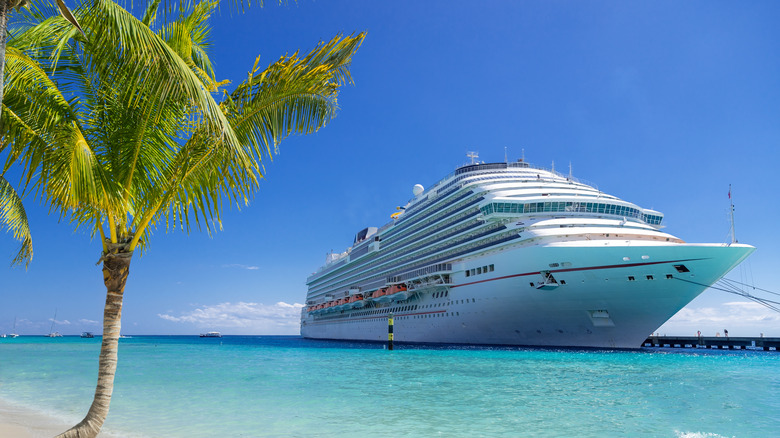
Travel by train, vehicle, or airplane has its perks, but adventurers looking for time on the waves often choose to cruise instead. Luxury and fun on the high seas continue to be something that increasingly appeals to travelers worldwide. It's projected that by 2028, the global cruise market will become an industry worth over $15 billion.
Some of this market growth can be attributed to the cruise industry's commitment to customized sailing. Travelers have more options than ever when it comes to themed cruises designed to focus on health, adventure, or family fun. Travelers can also enjoy a variety related to the type of cruise they book with ocean cruises, river cruises, and casual, and luxury experiences alike all readily available.
Over 30 million passengers globally choose to cruise each year. While the Caribbean and the Bahamas top the list of popular destinations, the Mediterranean follows closely behind, as well as Alaska, Australasia, and mainland Europe.
There are currently more than 2,000 ports worldwide for travelers to explore. However, before boarding a ship with international destinations on the itinerary, it's likely the right identification is required. The U.S. Department of State Bureau of Consular Affairs recommends all travelers departing from the U.S. have a passport book in hand.
The exception to this rule is the closed-loop cruise. Ships within this category must satisfy strict regulations to achieve closed-loop status. Once they do, it's a cruise option that can be a viable solution for those who aren't passport holders.
A route to cruising passport-free
U.S. Customs and Border Protection defines a closed-loop cruise as one that both begins and ends at the same U.S. port. As long as these cruises return to the place they started, they can cruise to destinations such as islands and territories that are within proximity to the continental United States. These destinations often include Canada, Mexico, Bermuda, and the Caribbean.
There are some real advantages for travelers booking a closed-loop cruise. Because these cruises start and end at the same port, those flying in to board their ship can easily book round-trip flights. Passengers driving in will find that options to park directly at the point of departure can make the trip that much more convenient.
Additionally, U.S. travelers on closed-loop cruises won't typically have to worry about having a passport to enjoy the experience. Instead, U.S. Customs and Border Protection allows U.S. citizens 16 and older to enter and leave the country using alternative proof of citizenship. Approved forms of identification include a birth certificate or a government-issued photo ID, with additional documentation requirements in place for travelers 16 and under.
Closed-loop cruise considerations to keep in mind
Exploring Alaska, Mexico, Grand Cayman, the Caribbean , or the Bahamas on a closed-loop cruise can be thrilling. It can also be a convenient option when passport-free travel is a priority. That said, there are always important exceptions to consider when it comes to passport requirements and a closed-loop cruise is no different.
A prime example would be if a closed-loop cruise stops at a port of entry on the island of Martinique. This destination requires all U.S. citizens to hold a valid passport to enter the country. Passengers without a passport would be required to stay onboard the ship at this point in the cruise which could put a damper on the fun if it's something unexpected.
Another consideration to keep in mind is that it is cruise line policy to depart on time at all times. Passengers who don't keep track of the ship schedule while exploring ports of call face the real possibility of being left behind. When this happens, passengers are responsible for flying themselves home or to the next port of call. Unlike closed-loop cruises, airlines do require passports for international travel, which can prove to be a difficult scenario for those cruising without this form of identification.
For those without a passport, a closed-loop cruise can be a great option. Simply make sure to double-check your itinerary and the U.S. Department of State website before departure. This will ensure setting sail is as stress-free as it should be.
This is a privately owned website and not a government agency. FTC Disclosure: We may be compensated if you make a purchase via a link on this site.
Uspassporthelpguide.com is a privately owned website. Privacy
What is a Closed Loop Cruise?
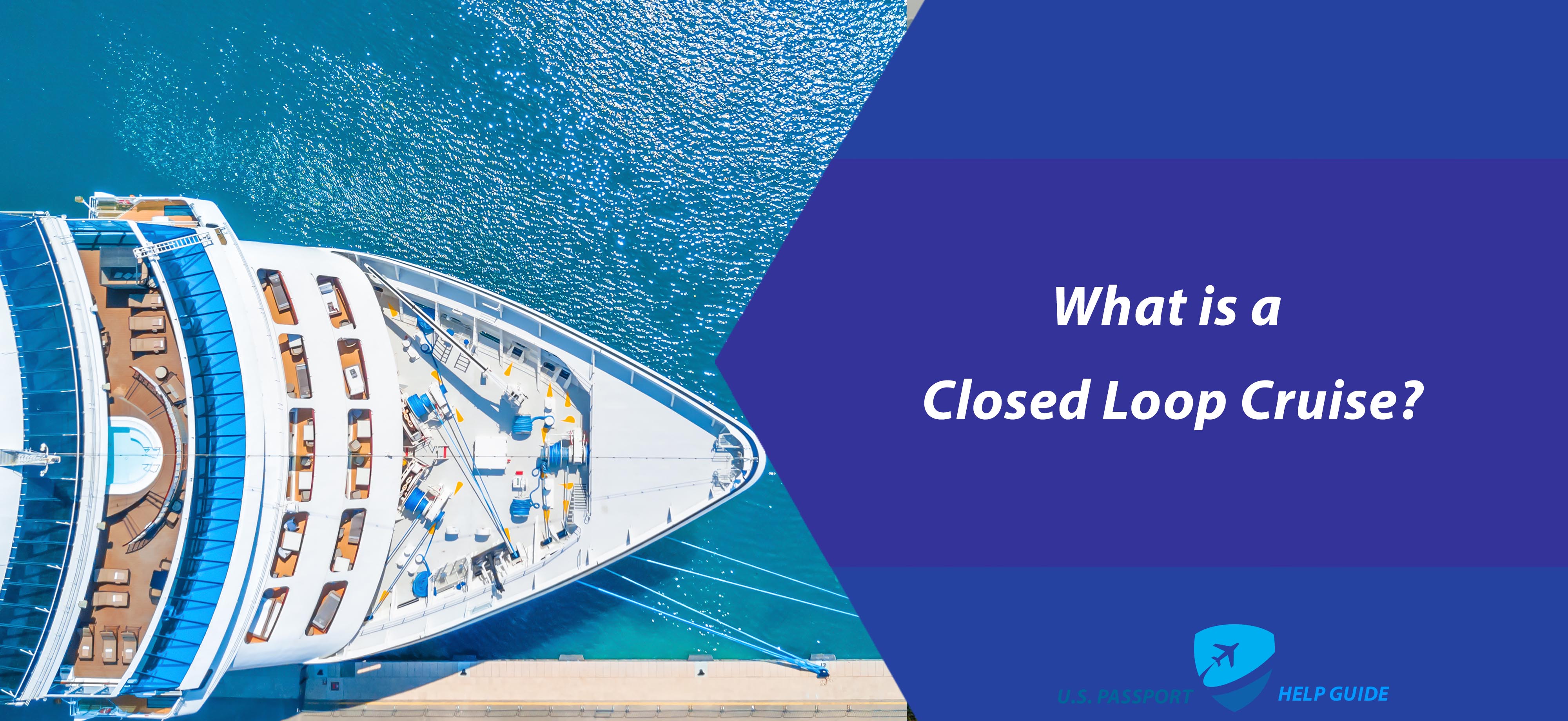
The process of going on a cruise brings along with it a wide variety of different implications that many people don’t think about. When you go on a cruise, you are typically doing so through various types of international waters worldwide. As a result, the United States Customs and Border Patrol will treat the voyage the same way you would if you traveled internationally by plane, for example – and you will have to go through the same process.
TABLE OF CONTENTS
What is a Closed-Loop Cruise?
A very specific type of cruise, however, is a “closed-loop voyage.” It has several benefits that frequent travelers and cruise fans want to know about. As the name suggests, a closed-loop voyage or cruise begins and ends in the United States. As a result, the process is much more straightforward if you are traveling internationally via cruise ship and are staying in one place for a long period.
Closed Loop Cruise Orginates and Ends in the US
The official definition of a closed-loop voyage originates and ends in the United States. However, it can visit contiguous territories or islands that are adjacent to the continental US at any time.
However, it’s important to note that for a cruise to be “closed-loop,” it must begin and end in the same port. Leaving the East Coast and returning to the West would not meet those requirements.
Related: Do You Need a Passport to Go to Mexico? [2023]
Do You Need a Passport for a Closed Loop Cruise?
Are you planning a closed-loop cruise and wondering whether or not you need a passport? The answer to that depends on a few factors. Generally, you do not need a passport if you are a US citizen and the cruise departs and returns to the same US port.
However, if the cruise stops at foreign ports, you may need a passport to enter those countries. Additionally, some cruise lines may require a passport as a form of identification for boarding, even if it is not technically needed for the itinerary. It’s always best to check with your cruise line and the countries you visit to confirm their passport requirements.
Contiguous Territories: What is the Contiguous Rule?
To understand the significance of closed-loop voyages. You must first understand exactly what contiguous territories and adjacent islands are. There is a special rule called the contiguous territory exception that applies to travel between the U.S., Canada, or Mexico.
This allows individuals to enter and exit the U.S. without needing to get a new visa stamp. These countries share a physical land boundary with the United States – in the case of the US, the two contiguous territories would be Mexico to the south and Canada to the north.
What are the Adjacent Islands to the United States?
The definition of adjacent islands is much broader and features various locations. Adjacent islands include the British Virgin Islands, Cuba, the Cayman Islands , Haiti, Trinidad, Tobago , Jamaica , Miquelon, and more.
Any islands that border the Caribbean Sea are called adjacent islands by the US Customs and Border Patrol.
Do Closed Loop Voyages Impact Electronic Travel Authorization?
Electronic Travel Authorization , also called ESTA, is a process that a person must go through to make sure that they are eligible to travel to their destination under the Visa Waiver Program in the United States.
The authorization does not determine who enters the US. Instead, it determines whether a person can travel from the U.S. through various means to their destination of choice.
One of the major benefits of closed-loop voyages is that the US Customs and Border Patrol has determined that. So, as long as the cruise in question meets all of the requirements and definitions of a closed-loop, Electronic Travel Authorization is not necessary for any passenger on board.
A large part of this decision came about due to the fact that these cruises begin and end in the continental US.
Related Read: Do You Need a Passport for a Cruise?
In conclusion, a closed-loop cruise provides a fantastic opportunity to explore the Caribbean or other areas near U.S. shores without dealing with visas and passports. There are so many unique places to discover and experience when stepping on board a closed-loop cruise vessel.
With so many options available, there’s something for everyone onboard these unique vessels. There is no better way to experience cruising than aboard a closed-loop cruise.
Get an Expedited Passport in As Little as 24 Hours!
Looking to travel in 30 days? And need to replace your passport, renew passport or get a new passport. U.S. Passport Help Guide provides all passport expediting services with passport services starting as low $199.00
Related Topics
The ultimate guide to applying for a chinese visa—a step-by-step guide for us citizens, everything you need to know about passport requirements for canadian and mexican travel.
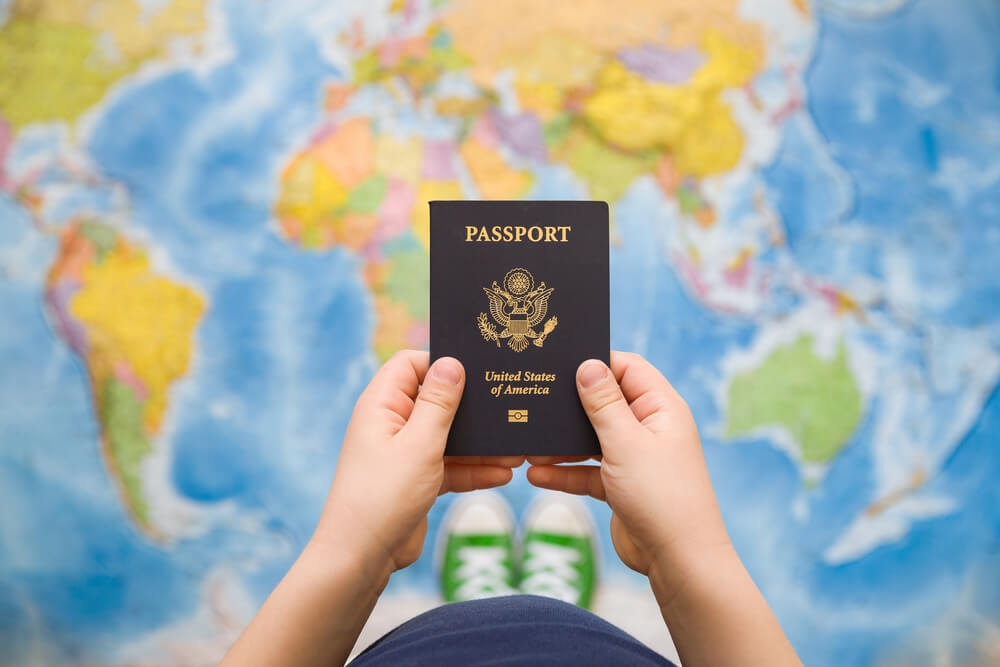
The Trusted Traveler Program Explained
Choose your passport office location, passport services.
- New Passport
- Passport Renewal
- Child Passport
- Passport Replacement
- Name Change
- Lost Passport
- Passport Correction
- Second Passport
- Passport Card
Where to Apply
- Passport Offices
- Expedited Services
- Regional Passport
- Expedited Visa & Passport Directory
- Acceptance Agent
Passport Forms
- Passport Photos
- Passport Requirements
- Passport Fees
- Passport Books
- Passport Applications
- International Drivers Permit
- Travel Visa
Do you really want to delete this post ?

What is a Closed-loop Cruise?
Have you ever had a couple of weeks to kill and a burning need to fly off to the Caribbean or Alaska on an adventure, only to learn that you either don’t have a passport or that it has expired when you get there? A “closed-loop” cruise is an option that is advantageous for those who are citizens of the United States since it does not need a passport.
It’s possible that you’ve heard the phrase “closed-loop cruise” thrown about in the context of sailing and been interested in what it means. Even though it has something to do with the locations on the calendar completing a complete circle, there is more to the tale than that.
Closed-loop cruises are those that depart from and return to the same U.S. port. Excursions of this kind may range from a round-trip from Seattle to Alaska to a cruise from Fort Lauderdale to Fort Lauderdale. These cruises need to meet a slew of criteria before being accepted.

According to maritime law, any trip on a ship that is not flagged by the United States and that begins and ends in a port in the United States is required to make at least one stop at a port located outside of the United States. Cancun is a common port of call for Western Caribbean and Alaska cruises for the same reason that Vancouver is a common stop for Alaska cruises.
The itineraries of these cruises must cover only contiguous regions of the United States in order for them to be considered closed-loop vacations. This includes Mexico and Canada both of which share land borders with the United States, as well as a number of the islands that are located in the Caribbean.
Do You Need a Passport for a Closed-loop Cruise?
A closed-loop cruise is one that does not need you to have a passport for the majority of its passengers. This is among the main reasons why people choose to go on these kinds of vacations.
If you already have a passport or a passport card, you are free to use any one of those items as a form of identification. However, in the instance of closed-loop cruises, United States residents are permitted to depart or enter the nation so long as they provide confirmation that they are a citizen.
Things need to Verify Citizenship
An Enhanced Driver’s License, which is a state-issued driver’s license that delivers individuality evidence and U.S. nationality. A government-issued birth certificate or passport can also verify the identity of a person while traveling on a cruise. If the person is older than 16 or 16 years old, a government-issued driver’s license or picture ID defining headshot, name, and date of birth.
If you have an Enhanced Driver’s License, you may re-enter the United States from Canada, Mexico, or the Caribbean and it is acceptable at land and sea border crossings but not at airports. However, you cannot use it to fly into the United States.
What Are Some of the Best Closed-loop Cruise Itineraries?
Closes loop cruises attracts many tourists to visit place to place with in the time period. Some of the best closed loop cruises are:
1. Fort Lauderdale to Bahamas, Mexico, and Grand Cayman
Take a trip to the Islands and the clear, coastal weather of the Caribbean aboard the luxurious Celebrity Edge, one of the most cutting-edge and magnificent vessels now sailing the seas. Your trip will depart from Fort Lauderdale. You will spend the day in vibrant Nassau, which is located on New Providence Island.

During this time, you will have lots of time to explore the powder-sand shorelines, scuba gear over sparkling oceans, mart for artisans in the Straw Market, or experience excitement on one of the tremendous water activities at the glitzy Atlantis Hotel.
You will arrive at Puerto Costa Maya, Mexico, after a day at sea during which you may make the most of the ship and her exquisite Resort Vista. Swimming in the tranquil waters of the pristine Bacalar Lake, where you will float over cenote-fed water which is an incredible shade of aquamarine, is just one of the many options that await you in this area.
You may also go canoeing, sail and dive trips, or even have a therapeutic treatment with a real shaman if that sounds more your speed. Chacchoben Ruins, which are located within a short distance from the port, are home to Mayan artifacts and history.
2. Seattle to Alaska, the Inside Passage, and Dawes Glacier
Enjoy seven days aboard the Celebrity Solstice discovering the untamed grandeur of Alaska’s Inside Passage. This ship is ideal for such magnificent surroundings thanks to its plenty of outdoor area and upper Lawn Lounge.

You will go to the lovely community of Ketchikan, where you will have the opportunity to go on a journey to look for foxes, attempt your hand at kayaking, go on an adventure to hunt for king crab or simply wander about the town and take in all of its vibrant sights. Following that, you will spend a whole day gently sailing the 30-mile Endicott Arm Fjord.
You will also go to Juneau, which is a wonderful place to go whale watching, trekking, and on exhilarating flightseeing adventures over mountain ranges blanketed in snow. In Skagway, you’ll have the opportunity to ride the breathtaking White Pass and Yukon Route train, which will take you high up and over some rough peaks as it retraces the path of courageous explorers who traveled during the Gold Rush.
Before making your way back to Seattle, you will make a stop in the historically significant city of Victoria, which is located on the island of Vancouver in Canada. Here, you will have the opportunity to enjoy a delightful combination of tasteful British colonial design, hip stores, and artisanal brewpubs.
1. How do I tell if my cruise is closed-loop?
Closed-loop cruises are those that begin and conclude in the local harbor in the United States; for instance, traveling around Fort Lauderdale would qualify as an instance of a closed-loop trip.
The Western Hemisphere Travel Initiative, which mandates that cruise passengers traveling inside the Americas must be in possession of a valid passport, establishes the parameters for closed-loop cruises.
2. Can a felon go on a closed-loop cruise?
Yes, convicts are permitted to go on cruises with either a closed or open loop, depending on the kind of voyage. On the other hand, the prerequisites for going on an open-loop cruise are far more stringent than those for closed-loop cruises.
To leave and enter the United States while on a closed-loop cruise, all you need is evidence of nationality, such as your birth card. This is the case even if you are a citizen of the United States.
3. Do Carnival Cruises allow birth certificates as proof of citizenship?
The Carnival Company possesses a significant number of the most well-known cruise companies in the market at the present time. The types of documentation that are required in order to go on a trip will typically vary from cruise line to cruise line.
For instance, Carnival Cruise Line claims that the birth document doesn’t have to be certified or signed, however, Royal Caribbean Line insists that all papers, including the birth certificate, need to be original or signed and sealed. Before you set sail, you should always check in with your cruise operator.
4. Do Minors Need A Passport To Go On A Closed Loop Cruise?
In most cases, children under the age of 16 who are traveling with a parent or guardian do not require a passport; nonetheless, you must bring at least a birth document with you as evidence of nationality.
Additionally, several cruise companies mandate that children remain either in the exact same room as their parents or guardians or in a cabin that is close to their cabin.
Nevertheless, any child who is traveling solo or with an individual who isn’t their parent or guardian requires the appropriate papers demonstrating their identity and authorization to voyage by themselves. This includes authorization to go aboard a cruise ship. If there is no one in the party who is at least 21 years old, it is extremely vital to get a documented letter of agreement from the legal guardian or parent.
This consent denotes that the child has been given permission to travel alone, which may seem restrictive, but it helps prevent questions of culpability in the event that the minor is injured or is involved in an incident.
A closed-loop cruise is one of the best options for couples but anyone can enjoy it. A different cruise experience and a better traveling experience and one of the best ways to pass time.
Angel Portillo is an experienced tourism professional who has worked in the travel industry for many years. He has extensive knowledge of the different destinations that are popular among tourists, and is able to provide tips and advice on how to make the most of your visit. His passion for travel is evident in her writing, which is full of interesting and descriptive details about the different places he's visited.
Similar Posts
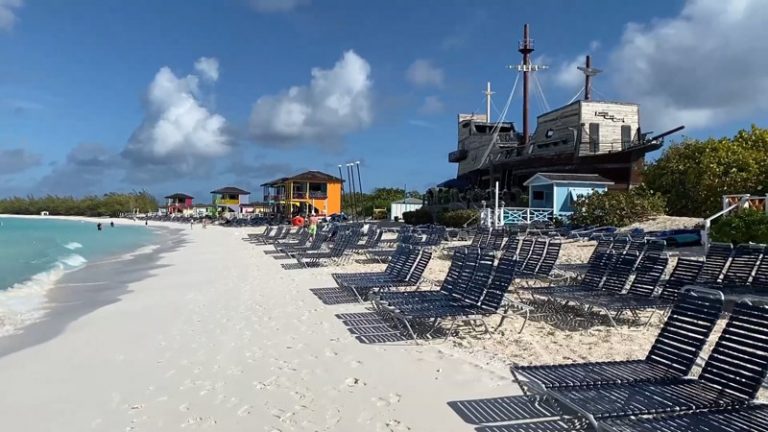
Half Moon Cay Cabanas – Everything You Need to Know
The Half Moon Cay Cabanas provide a great feeling with the weather. The cabanas are perfect for a relaxing day with friends or family. The views are amazing, and the cabanas themselves are very comfortable. The cabanas are a great place to stay when visiting the Half Moon Cay Resort. The cabanas are a great…

20 Facts You Should Know Before Working on a Cruise Ship
An occupation aboard a cruise ship may seem like a fantasy, and for some people it is. My three years at sea were filled with many exciting adventures, but there were also many occasions when life seemed like a nightmare. If life at sea is something you’re contemplating, or if you’re simply wondering about what…

St. John Island Tour Reviews
St. John is the tiniest of the three principal US Virgin Islands. People think that three of the Virgin Islands are some of the most beautiful places in the world. These islands include St. Croix, St. Thomas, and the jewel that is St. John. The Virgin Islands are known for their verdant hills, magnificent coastlines,…

30 Things to Do in Half Moon Cay?
Half Moon Cay, Bahamas, is a port of call for many cruises because of its abundance of attractions. The nicest aspect about this location is that your cruise fare already covers your meals and some beverages, so you may invest as much or as little as you wish. Half Moon Cay, Bahamas, owned by Carnival…
![what are closed loop cruises Should I Take a Cruise? [Tips and Advice for Cruise Travel]](https://awcv.com/wp-content/uploads/2022/10/Cruise-Ship-1-768x432.jpg)
Should I Take a Cruise? [Tips and Advice for Cruise Travel]
Of course, you should take one. Cruise ships offer a variety of comforts. They have restaurants, bars, and shops for you to enjoy during your stay on board. From a space for you to breathe fresh air by yourself to your medication, everything is present on a cruise, providing you with the utmost enjoyment and safety of the tour.

How to Congratulate Someone on a New Boat?
Congratulations are a way to express happiness and excitement for someone’s achievements or special events in their life. They can be verbal or written and are often accompanied by words of encouragement and well-wishes. Congratulating someone is a way to show support and celebrate their success, and can be a thoughtful and meaningful gesture. There…
Leave a Reply Cancel reply
Your email address will not be published. Required fields are marked *
Save my name, email, and website in this browser for the next time I comment.

An official website of the United States government
Here’s how you know

Official websites use .gov A .gov website belongs to an official government organization in the United States.
Secure .gov websites use HTTPS A lock ( Lock A locked padlock ) or https:// means you’ve safely connected to the .gov website. Share sensitive information only on official, secure websites.

- For U.S. Citizens/Lawful Permanent Residents
Western Hemisphere Travel Initiative
What is the Western Hemisphere Travel Initiative (WHTI)?
WHTI is the joint Department of State (DOS) and Department of Homeland Security (DHS) plan to implement a key 9/11 Commission recommendation and the statutory mandates of the Intelligence Reform and Terrorism Prevention Act of 2004 (IRTPA). IRTPA, in part, required the DHS and DOS to develop and implement a plan to require all travelers, U.S. citizens and foreign nationals alike, to present a passport or other acceptable document that denotes identity and citizenship when entering the United States.
What is the goal of requiring secure documents?
The goal is to strengthen border security while facilitating entry into the United States for U.S. citizens and legitimate international travelers, making the process more efficient and convenient.
What types of documents are accepted for entry into the United States via air?
- U.S. citizens can present a valid: U.S. Passport; Trusted Traveler Program card (NEXUS, SENTRI or FAST); U.S. Military identification card when traveling on official orders; U.S. Merchant Mariner document when traveling in conjunction with official maritime business. Note that children are also required to present their own passport when traveling by air. (note: The Indian/tribal card can NOT be used for air travel).
- Requirements for lawful permanent residents of the United States are not changed by the implementation of WHTI. Lawful permanent residents must continue to present a valid Permanent Resident Card. A passport is not required.
What types of documents are accepted for entry into the United States via land and sea?
- U.S. citizens can present a valid: U.S. Passport; Passport Card; Enhanced Driver’s License; Trusted Traveler Program card (NEXUS, SENTRI or FAST); U.S. Military identification card when traveling on official orders; U.S. Merchant Mariner document when traveling in conjunction with official maritime business; or Form I-872 American Indian Card, or (when available) Enhanced Tribal Card.
- U.S. and Canadian citizen children under the age of 16 (or under 19, if traveling with a school, religious group, or other youth group) need only present a birth certificate or other proof of citizenship. The birth certificate can be original, photocopy, or certified copy.
- WHTI does not affect U.S. Lawful Permanent Residents, who are still required to present their permanent resident card (Form I-551) or other valid evidence of permanent residence status.
- Canadian citizens can present a valid passport, Enhanced Driver’s License, or Trusted Traveler Program card (NEXUS, SENTRI or FAST).
- Bermudian citizens are required to present a valid passport.
- Mexican citizens, including children, are required to present a passport with visa, or a Border Crossing Card.
- U.S. citizens on closed-loop cruises (cruises that begin and end at the same U.S. port) are able to enter the United States with a birth certificate and government-issued photo ID. Please be aware that you may still be required to present a passport to enter the countries your cruise ship is visiting. Check with your cruise line to ensure you have the appropriate documents.
What is an enhanced driver’s license?
State-issued enhanced drivers licenses (EDLs) provide proof of identity and U.S. citizenship, are issued in a secure process, and include technology that makes travel easier. They provide travelers with a low-cost, convenient alternative for entering the United States from Canada, Mexico or the Caribbean through a land or sea port of entry, in addition to serving as a permit to drive.
The Department has been working with states to enhance their driver’s licenses and identification documents to comply with travel rules under the Western Hemisphere Travel Initiative (WHTI), effective June 1, 2009.
How do I get a passport?
United States citizens can visit the State Department’s travel website or call the U.S. National Passport Information Center at (877) 4USA-PPT; TDD/TTY: (888) 874-7793.
What if I don’t have the required documents when I travel to or return to the United States?
Travelers without WHTI-compliant documents are likely to be delayed at the border as CBP officers work to verify identity and citizenship.
Protect Your Trip »
Here's when you need (and don't need) a passport to cruise.
It's the type of sailing – closed-loop or open-loop – that largely determines whether or not you need a passport to cruise.
Do You Need a Passport for a Cruise?

Getty Images
A passport isn't always required for cruising.
To determine whether or not you need a passport to cruise, you first need to figure out if the itinerary is closed-loop or open-loop (also known as open-jaw).
Closed-loop cruise: A closed-loop cruise typically doesn't require a passport since it begins and ends in the same U.S. port (though there are some exceptions to this rule).
Example: Royal Caribbean International 's seven-night Western Caribbean & Perfect Day cruise stops in several countries – the Bahamas, Jamaica, Haiti and Grand Cayman – but the itinerary is considered closed-loop because it starts and ends in Fort Lauderdale, Florida.
Open-loop cruise: An open-loop cruise begins in one U.S. port and ends in a different U.S. port.
Example: Carnival Cruise Line 's 16-day Panama Canal from Seattle itinerary is not considered closed-loop because it departs from Seattle and completes its journey in New Orleans.
All of the above regulations have been determined by the Western Hemisphere Travel Initiative: a plan by the departments of State and Homeland Security that determines which documents are acceptable for proving identity and citizenship when entering the United States.
Where to cruise without a passport
There are several destinations where you can cruise without a passport on a closed-loop sailing. They include the following:
- The Bahamas
When looking at cruises to these locations, be mindful of the home ports. The Bahamas, Mexico, Bermuda, the Caribbean and Canada are all foreign ports, which means they only qualify for the passport exception if they are a stop along your cruise itinerary . If the cruise originates in any of these countries, it is likely you will need a passport.
Since Alaska, Hawaii and New England are all U.S. destinations, any closed-loop routes departing from these locations will not require a passport. However, keep in mind that it can be hard to find closed-loop cruises originating in Hawaii or Alaska.
To find closed-loop itineraries for a Hawaiian voyage or Alaskan cruise , try searching for sailings departing from major cities on the West Coast, like Seattle or Los Angeles . By contrast, quite a few closed-loop cruises leave from New England ports, but they are often marketed as Canadian cruises.
Tips on Trips and Expert Picks Newsletter
Travel tips, vacation ideas and more to make your next vacation stellar.
Sign up to receive the latest updates from U.S News & World Report and our trusted partners and sponsors. By clicking submit, you are agreeing to our Terms and Conditions & Privacy Policy .
When you need a passport for closed-loop cruises
Some cruise itineraries include foreign ports that require a passport for disembarkation. This is most commonly an issue for travelers on a closed-loop Caribbean cruise. Barbados , Guadeloupe , Haiti, Martinique , St. Barts , and Trinidad and Tobago all require U.S. citizens to present a valid passport to disembark and enter the country, despite WHTI regulations not requiring a passport for these destinations. Labadee, Royal Caribbean's private island , is an exception and does not require a passport despite its location in Haiti.
If your itinerary includes a country requiring a U.S. passport, your cruise line will require you to have the passport at check-in. Note that your passport must not expire within six months of your arrival in a foreign country or else it won't be considered valid for international travel.
Read: The Easiest Way to Renew Your Passport
Acceptable forms of ID
All travelers – U.S. citizens and foreign nationals alike – must present documents that show identity and citizenship when entering the United States. A U.S. passport can show both. If you don't have one or don't want to bring one, be aware that you may need to present more than one document.
U.S. citizens 16 and older
If you're a U.S. citizen age 16 or older sailing on a closed-loop cruise without your passport, you will need a government-issued photo ID like a driver's license. In addition, you must present a document that proves your U.S. citizenship. These include:
- Passport card
- State-issued enhanced driver's license (EDL)
- Government-issued birth certificate
- Trusted Traveler Program card (NEXUS, SENTRI or FAST)
- American Indian Card (Form I-872) or Enhanced Tribal ID Card
The Trusted Traveler Programs are risk-based programs to facilitate the entry of travelers who have been vetted and preapproved. Most of these programs will provide you with a machine-readable card that allows you to pass through border checkpoints quickly. Keep in mind, some of these IDs are only available to travelers 16 and older.
Read: TSA Precheck vs. Global Entry
U.S. citizens younger than 16
U.S. citizens younger than 16 are only required to present proof of citizenship, such as one of the following documents:
- Original, notarized or certified copy of their government-issued birth certificate
- Consular Report of Birth Abroad issued by U.S. Department of State
- Certificate of Naturalization issued by U.S. Citizenship and Immigration Services
Read: How to Get a Passport for Kids
Non-U.S. citizens
If you are a lawful permanent resident (or LPR) of the United States, you are required to present a permanent resident card or other valid evidence of permanent residence status.
Non-U.S. citizens, with the exception of Canadians and Mexicans, are not subject to passport exceptions, so a valid passport will need to be provided. Canadian citizens can present a valid passport, Enhanced Driver's License or Trusted Traveler Program card. Mexican citizens must present a passport with a visa or a Border Crossing Card.
Unacceptable forms of ID
While most common forms of identification are accepted, there are a few exceptions. U.S. military identification cards and U.S. Merchant Mariner documents are valid forms of identification, but only when traveling on official orders or in conjunction with official maritime business, so it is unlikely they will be accepted when traveling on a cruise.
Here are some other documents that will not be accepted as proof of citizenship:
- Voter registration cards
- Social Security cards
- Baptismal papers
- Hospital certificates of birth (for anyone older than a newborn)
It is important to note that many of the permitted forms of identification, such as a passport card or EDL, are only accepted at land and sea border crossings. Unforeseen circumstances, such as a medical air evacuation, may cause you to return to the U.S. by air travel. In this case, these documents won't be accepted when you try to reenter at the border crossing.
To avoid extra delays in your return to the U.S. following unforeseen travel complications, the Department of State recommends that everyone taking a cruise from the United States carry a valid passport book in case of emergency.
Why Trust U.S. News Travel
Erin Vasta has traveled extensively to international destinations, gaining a deep knowledge of travel regulations in the process. Her expertise in this area has saved her family and friends from unnecessary travel delays and ensured stress-free trips through border security in nearly 15 countries. To write this article, Vasta used her international travel experience and research skills.
You might also be interested in:
- The Top Passport Holders
- Cruise Packing List: Essentials to Bring
- Safe at Sea: The Best Cruise Insurance
Tags: Travel , Travel Tips
World's Best Places To Visit
- # 1 South Island, New Zealand
- # 4 Bora Bora
If you make a purchase from our site, we may earn a commission. This does not affect the quality or independence of our editorial content.
You May Also Like
Flight canceled or delayed what to do.
Amanda Norcross April 26, 2024

The Best Beach Hats
Megan Johnson and Sharael Kolberg April 26, 2024

The Best Florence Tours
John Rodwan April 25, 2024

The 9 Best Louisiana Swamp Tours of 2024
John Rodwan April 24, 2024

How Much Does a Cruise Cost?
Gwen Pratesi April 24, 2024

The Best Whale Watching in Cape Cod
Lyn Mettler April 24, 2024

Best Whale Watching Tours in Maine
Marisa Méndez April 23, 2024

The Best Wineries in Napa Valley
April 23, 2024

The Best East Coast Beaches
April 19, 2024

The Best Carry-on Luggage
Erin Evans , Rachael Hood , Catriona Kendall , Amanda Norcross and Leilani Osmundson April 17, 2024

- 1-855-932-1711
- My Account Hello Credits My Account Log out
Know Before You Go
What you need to know before you go on a Holland America Line cruise
View all Frequently Asked Questions
Download Navigator® Your Essential Cruise Companion!
The Holland America Line Navigator App is your indispensable tool for cruise planning, embarkation, managing your onboard experience and booking shore excursions.
Download the app before your cruise, log in, and immediately start using Navigator.
Once you’ve completed Online Check-In at www.hollandamerica.com , retrieve your digital boarding pass via the app to expedite embarkation at the pier. You can also complete your health assessment and book shore excursions prior to your cruise.
General Information
Identification requirements.
Immigration Questionnaire & Online Check-In: Each individual guest is required to complete the questionnaire in Online Check-In to obtain Express Docs. Please go to our website at hollandamerica.com and complete the Online Check-In process prior to your sail date. After you complete the Online Check-In, your Express Docs including your Boarding Pass will be issued. Please do not forget to print them out prior to leaving home.
Please Note:
- Guests arriving at embarkation without complete and accurate documentation may not join the voyage and will not be entitled to a refund.
- Please complete the Online Check-In process at hollandamerica.com 72 hours prior to your sail date. Guests who wait to check in at the terminal risk being unable to sail even if they arrive at the terminal before the vessel leaves. You will be responsible for all costs you incur to join the vessel at the next port.
- If for some reason you have not completed your Online Check-in process at least 3 days prior to departure, you will still be able to print your Express Docs, including the boarding pass, up to the departure date. Guests who have not completed the required check-in prior to departure time are subject to denied boarding.
U.S. government security regulations require us to submit certain guest information to law enforcement authorities at least 60 minutes prior to departure. To meet this requirement, we must have the necessary information in our records at least 90 minutes prior to departure. If we do not have your information by this deadline, you will be unable to sail. Guests are urged to complete the Online Check-in process before leaving home. Guests who wait to check in at the terminal risk being unable to sail even if they arrive at the terminal before the vessel leaves. You will be responsible for all costs you incur to join the vessel at the next port .
PERSONAL TRAVEL IDENTIFICATION REQUIREMENTS
Holland America Line highly recommends that all guests carry a passport that is valid for at least six months beyond the completion date of your travel. Having a passport will enable you to fly from the U.S. to a foreign port in the event you miss your scheduled embarkation or to fly back to the U.S. if you need to disembark the ship mid-cruise due to an emergency.
Immigration and administrative rules may require the vessel to collect and safeguard guest passports and guests to complete landing cards prior to some ports of call. Further information will be provided on board.
PLEASE NOTE : It is your sole responsibility to obtain and have available the proper travel documents that are necessary for your travel, including all costs related to arrangements to obtain entry to countries you visit and re-entry to your destination country.
Boarding may be denied or fines may be levied against those guests without proper documentation. Payment of any fines levied is the responsibility of the individual guest.
For U.S. and Canadian Citizens Travel by Land or Sea:
Travel document requirements vary based on cruise itinerary and whether international flights are required. For voyages that are scheduled to end outside the U.S., a passport that is valid for six months beyond the completion date of your travel is required.
Passports or Western Hemisphere Travel Initiative (WHTI) compliant documents are required for cruises to Alaska, Bermuda, Canada, Caribbean, Hawaii, and Mexico. U.S. and Canadian citizens ages 16 and above may present one of the following valid WHTI-compliant documents:
- Passport (recommended travel document) (valid for travel by air, land and sea)
- Passport Card (valid for land and sea border crossings only)
- State Issued Enhanced Driver’s License (EDL) – (valid for land and sea border crossings only, not valid on Yukon Cruisetours due to air travel included in the Journey)
- Other documents approved by the Department of Homeland Security
For a list of approved documents visit:
travel.state.gov/content/passports/english/go/checklist.html
The EDL driver’s license, or non-driver photo identification, is offered in the U.S. states of Michigan, New York, Vermont and Washington and in the Canadian provinces of British Columbia, Manitoba, Ontario and Quebec, to applicants that can prove identity and citizenship. Please note the EDL is not the same as an Enhanced (or Endorsed) Commercial Driver’s License.
U.S. citizens on closed-loop cruises : U.S. citizens on cruises in the Western Hemisphere that originate and terminate in the same U.S. port are required to have proof of citizenship such as a valid U.S. passport or a government issued birth certificate combined with a government issued photo I.D. Other approved proof of citizenship documents such as a passport card, an enhanced driver’s license (EDL) or certificate of naturalization along with a government-issued photo ID are also acceptable. A passport is still the preferred document. PLEASE NOTE –WHTI-compliant documents are acceptable for entry or re-entry into the United States. You may be required to present additional or different travel documents when entering foreign countries, including some countries in the Western Hemisphere.
Birth certificates from Puerto Rico issued prior to July 1, 2010 are not valid forms of proof of citizenship that is accepted by U.S. Customs and Border Protection. Guests from Puerto Rico either need to present a WHTI-compliant document or a government- issued photo identification with a validated birth certificate issued after July 1, 2010.
Children : U.S. citizen children under the age of 16 traveling on a closed-loop cruise (a cruise in the Western Hemisphere which originates and ends in the same U.S. port) will be able to present their government issued birth certificate or other proof of U.S. citizenship, such as a naturalization certificate or citizenship card to sail. Birth certificates can be an original or certified copy.
PASSPORT REQUIREMENT WHEN MINORS TRAVEL WITH ONE ADULT ON VOYAGES GOVERNED BY U.S. WESTERN HEMISPHERE TRAVEL INITIATIVE (“WHTI”) (includes travel within BERMUDA, CANADA, CARIBBEAN, MEXICO, UNITED STATES)
When minors are traveling with only one adult 21 years of age or older, Holland America Line requires that all guests must be in possession of a valid passport. Holland America Line has implemented this requirement so that you all remain together should an emergency arise that requires one or more in your party to be disembarked in a non-U.S. port. Holland America Line cannot guarantee that all members of your party will be allowed to disembark with only a WHTI-compliant document or birth certificate.
NOTE: If you are not the parent or Legal Guardian of any minor child traveling with you, you must present an original letter signed by at least one of the child’s parents. The letter from the child’s parent must provide contact information and authorize the traveling adult to take the child on the specific cruise.
For more information regarding passports and WHTI compliant documents, please visit travel.state.gov/content/passports/english/go/checklist.html or call the National Passport Information Center toll free at 1-877-487-2778 or TDD/TYY at 1-888-874-7793.
Travel by Air: Passports are required for all international air travel to and from the United States, regardless of age or citizenship. This includes air travel to and from Canada, Bermuda, the Caribbean and Mexico.
For Non-U.S./Non-Canadian Citizens: For Non-U.S./Non-Canadian Citizens: You must have and carry a passport valid for six months beyond the duration of your travel. Please carefully verify the existing identification requirements for your particular travel situation, including all destinations. In addition, non-U.S. citizens who have previously been admitted to the United States for permanent residence must carry their Permanent Resident Card (Form I-551), commonly known as a Green Card. Resident aliens not in possession of this must obtain one at the nearest office of the U.S. Immigration Service. Note that while a passport for a Green Card holder is not required to return to the U.S., your destination country requirements may be different. Please verify your documentation requirements prior to sailing, but we highly recommend Green Card holders travel with their passport as an extra precaution.
Please Note: To allow us to expedite immigration clearances in the various countries you will be asked to surrender your passport to our staff upon check-in. Some clearances will require face to face inspections, details will be communicated to you onboard.
Rest assured that your passport will be fully secured by our staff. Regardless, it is always good practice, when traveling, to make copies of your passport pages before departing.
Certain countries require that you obtain official authorization (called a visa) before entering the country, and some countries require that you obtain a visa regardless of whether you plan to go ashore in that particular port or not. Usually there is a fee required.
Guests are responsible for verifying and obtaining any necessary travel documents for entry and exit to the countries visited, as these requirements vary depending on the specific port and nationality of the traveler. This includes payment of all costs related to arrangements to obtain entry to the countries you visit. Boarding may be denied or fines levied against those guests arriving at the pier without the proper documentation, and those guests will not be eligible for a refund . Payment of any fines levied is the responsibility of the individual guest. Please note that fees and visa requirements are subject to change without notice. Tourist/visa requirements are determined by passport nationality, not by country of residence.
Visa Service Information:
Don’t put your travel plans at risk; Holland America Line recommends guests utilize a visa service to secure your required documentation. We have partnered with CIBTvisas as a service to assist with the collection of necessary documents. CIBTvisas also provides a concierge service should you wish to have a dedicated Concierge Specialist manage the entire process from start to finish while providing the expertise necessary to ensure your request is approved as quickly as possible. Our dedicated section on the CIBTvisas website can be found at www.cibtvisas.com/hollandamericaline .
You may reach CIBTvisas by phone at:
- U.S. and Canadian residents: 866 935 8472
- Netherlands residents: 0800-2524632
- Germany residents: 8003202233
- Australia residents: 1300964164
- United Kingdom residents: 0800 1218239
- Belgium residents: 0902 150 45
- Singapore residents: 6603 1096
- Spain residents: 902 113 829
- Switzerland residents: 41 (0) 22 884 18 70
- France residents: 0144107272
Residents of all other countries should contact the nearest representative embassy or consulate for proper information.
Visa Waiver Program Requirements: The Visa Waiver Program (VWP) allows citizens of participating countries to travel to the U.S. without a visa for stays of 90 days or less, when they meet all requirements. ALL VWP travelers to the U.S. will be required to have an approved electronic travel authorization via Electronic System for Travel Authorization (ESTA). Travelers who have not obtained approval through ESTA should expect to be denied boarding on any air carrier bound for the U.S. If you reside in the UK please visit cibtvisas.co.uk/hollandamerica.
Countries participating in the VWP are: Andorra, Austria, Australia, Belgium, Brunei, Czech Republic, Denmark, Estonia, Finland, France, Germany, Greece, Hungary, Iceland, Ireland, Italy, Japan, Latvia, Liechtenstein, Lithuania, Luxembourg, Malta, Monaco, the Netherlands, New Zealand, Norway, Portugal, San Marino, Singapore, Slovakia, Slovenia, South Korea, Spain, Sweden, Switzerland, Taiwan and the United Kingdom.
For more details please go to the U.S. Department of State’s Visa Waiver Program page.
Schengen Visa Holders : New requirements pertaining to proof of medical insurance coverage have been adopted for all Schengen visa holders. This requirement does not apply to U.S. or Canadian citizens. All guests should keep themselves advised of changes in government requirements. If you have questions about visa requirements, call CIBTvisas at 1-866-935-8472. You may also choose to send an email message to: [email protected] or visit their website at https://cibtvisas.com/hollandamericaline .
Cruise Documents: Holland America Line Express Docs Eco- friendly Cruise Documents
Preparing for your Holland America Line cruise is now easier, faster and more convenient than ever. With Express Docs, your cruise documents are available up to 15 days before your cruise departure date, and you can print part – or all – of your Express Docs when it’s most convenient for you, 24/7. This includes your boarding pass, itinerary, any applicable vouchers, and if you booked air with Holland America Line, air travel information. Your information is encrypted, secure, easily updated and ready to email or print for yourself, family and friends as often as you wish. No more waiting for printed cruise documents.
What’s more, since our eco-friendly cruise documents are delivered electronically, they help save paper and conserve precious fossil fuels.
Visit hollandamerica.com for more information.
To learn more about Holland America Line’s ongoing commitment to environmental stewardship and conservation in all of our operations, visit hollandamerica.com/sustainability .
Do I Need Vaccines to take a Cruise
Vaccination requirements change frequently. These requirements are established by the countries you are visiting and not by Holland America Line. For this reason, you should contact your local physician, Health Department and/or travel medicine clinic to discuss vaccination requirements for all countries on your itinerary.
Mosquito-borne Illnesses: Malaria, dengue fever, yellow fever and Chikungunya are found in many tropical and subtropical areas of the world. Guests should always travel with appropriate clothing and mosquito repellent with DEET or Picaridin to reduce the risk of mosquito bites. In addition, please check with your primary care provider or local travel medicine clinic to see what, if any, vaccinations or other measures are recommended for your specific itinerary. Be certain to bring along a record of all your vaccinations. Check with your health care provider at least six to eight weeks prior to departure, as vaccination requirements and recommendations may change.
Yellow Fever: Many Yellow Fever immunization requirements are based on traveling from one “infected” or “endemic” country to another. It is also a good idea to bring along a record of your immunizations, as requirements for immunizations may change.
Emergency Phone Numbers
At some point in your travels you may experience an emergency. With this in mind, the following emergency phone numbers are available for your use: 1-800-628-4771. Holland America Line representatives are available 24 hours a day, 7 days a week and 365 days a year to assist you in any way they can, including assistance with travel delays and contacting loved ones.
The numbers are for emergency use only; please do not call unless you are experiencing an emergency of a critical nature. For information concerning airline delays, please see the Arrival Advice / Airline Delays section below.
Guests Under 21
Guests under 21 years of age must be accompanied by a parent, guardian or chaperone who is at least 21 years old; one adult chaperone is required for every five people under the age of 21. Alcoholic beverages will not be served to guests under age 21. However, effective on voyages commencing July 1. 2016 and thereafter, the legal drinking age onboard will be 18 for voyages which depart from and return to Europe, China, Hong Kong, Singapore or Taiwan, and the legal drinking age onboard will be 20 for voyages which depart from and return to Japan. Infants must be at least 6 months of age at the time of embarkation in order to sail. Children must be at least 12 months of age at the time of embarkation to sail on trans-ocean crossings and remote itineraries, where there are more than 2 consecutive sea days.
For voyages that depart from and return to Australia and/or New Zealand, these policies and the legal drinking age apply to guests 18 years or over. Minors under the age of 18 traveling to foreign countries must be accompanied by a parents or guardian.
Changing Your Itinerary
With very limited exceptions (such as some Panama Canal cruises), U.S. law prohibits persons from beginning their cruise in one U.S. port and ending it in a different U.S. port. For this reason, voyages originating and ending in the same U.S. port will not allow embarkation or disembarkation in an alternate U.S. port. Please note that this is a U.S. government regulation over which Holland America Line has no control.
Customs Information
In order to make returning home as smooth and easy as possible, please take note of the following tips. For more information, consult your Customs Agency. Guests returning to the United States can also check the official website of U.S. Customs at cbp.gov/ .
Registering Your Valuables: We strongly recommend that you register your valuables with Customs before leaving home. This should be done well in advance of travel at a Customs office near your home. Items that should be registered generally include those not manufactured in your country. If you cannot prove that you owned an item prior to departure, Customs officials may charge you duty to bring it back into your country. Customs pays particular attention to cameras (including special lenses and video equipment), binoculars, radios, laptop computers, foreign-made watches and other similar appliances. Customs officials will not be available at the ship during check-in to register valuables.
Transportation of Currency: You may take as much currency or as many monetary instruments as you wish on your trip. However, if you take out or bring into the United States more than US$10,000, you are required by law to file a report with the U.S. Customs Service.
Also Canadian residents need to declare if you take out or bring into the country more than CAD10,000. Please remember that many other countries have a similar policy when going ashore and you will be subject to their currency allowances at the current exchange rate. Any additional information concerning currency restrictions, please contact the customs agency in their country.
Customs Allowance: Each U.S. resident is usually allowed a duty free exemption of US$800; it may be more or less depending upon your itinerary and recent travel outside the country. An additional US$1,000 worth of articles may be brought in and taxed at a reduced flat duty rate. After an absence of seven days or more, Canadian citizens may bring back to Canada up to CAD750 worth of duty-free merchandise, which may include a maximum of 40 ounces of liquor or wine and 200 cigarettes. Guests who are neither U.S. nor Canadian citizens should check with the Customs agency in their country for allowance information before departing. Additional information concerning Customs matters will be provided during your cruise.
Tobacco & Alcohol
- A traveler may include up to 100 cigars and 200 cigarettes (one carton) in the US$800 exemption from duty. Additional cigars and cigarettes may be brought into the country, but they will be subject to duty and taxes. Cigarettes may also be subject to a tax imposed by state and local authorities. Bidis — essentially flavored cigarettes — are not generally permitted entry.
- Generally, one liter of alcohol per person may be entered into the U.S. duty-free by travelers who are 21 or older, although travelers coming from the U.S. Virgin Islands or other Caribbean countries are entitled to more. Additional quantities may be entered, although they will be subject to duty and IRS taxes.
Guests with Disabilities
Holland America Line does not discriminate against persons on the basis of disability. We seek, to the extent feasible, to accommodate guests with disabilities. For more specific information regarding the following categories, please visit the “Accessible Cruising” section of our website at hollandamerica.com: Stateroom Information; Mobility Equipment; Ship Transfer Options; Shoreside Mobility, including Airports and/or Train Stations and Land Tours and/or Shore Excursions; Service Animals; Blind or Low Vision; Deaf or Hard of Hearing; Oxygen; Food Allergy Information; Children with Special Needs; and Wheelchair Accessible Route Maps. Holland America Line offers a limited number of staterooms designed to be wheelchair- and scooter-accessible. For the safety of all guests and crew, scooters and other mobility equipment need to be securely stored and charged in the guest’s stateroom and not in hallways or elevator lobbies. Scooters left in these areas could restrict people needing to travel through these areas in an emergency, particularly other guests using mobility aids, since they would have no way of getting by a scooter left in a hallway. For this reason, Holland America Line has size and weight guidelines for scooters. For your safety as well as the safety of fellow guests and crew, guests using powered mobility devices should exercise caution by utilizing reduced speed settings on their mobility device while on board and in terminal facilities. If you plan on bringing a scooter on the ship, please contact:
Guest Accessibility Department
Phone: 1-800-547-8493 (locally at 1-206-626-7044)
TTY: 1-800-254-8669
Email: [email protected]
Certain ship transfer operations (e.g., during tendering and at the gangways) may not be fully accessible to wheelchairs or scooters. When a ship is unable to dock, guests are taken ashore on smaller boats called tenders. Some guests with limited mobility may find it difficult to embark or disembark the ship at certain times while at dock or while tendering due to steep gangways and steps, particularly during low or high tide. Also, please note that scooters and wheelchairs weighing more than 100 pounds without the battery are not allowed to be transferred from the ship to tender and/or from tender to shore. For persons not capable of walking on their own, the use of a wheelchair will be the primary mobility assistance aid for getting on and off the ship. Situations may occur in which guests with limited mobility may not be able to go ashore at the time they desire or are unable to go ashore at all in certain ports. For the safety of all concerned, the Captain shall make the final determination regarding whether or not it is advisable to provide assistance to guests with mobility limitations or to carry their mobility assistance device (e.g., wheelchair, scooter, walker, etc.), taking into account all appropriate matters including, but not limited to, weather conditions, ship’s location, weight of the guest or his or her mobility device, etc. While every effort is made to assist guests, we are unable to provide crew members who can spend all or most of their time working with a single guest in order to address ongoing special needs. Guests who require that level of care will need to travel with a companion who is able to provide the assistance necessary. Certain third-party transfer and tour facilities may not be fully accessible to guests with disabilities. Although we endeavor to make sure these companies comply with legal requirements, we cannot guarantee all are able to provide facilities that are accessible to persons with disabilities. For detailed, up-to-date information on accessibility issues involving tours, we strongly recommend contacting our Shore Excursions Department prior to embarkation at 1-888-425-9376 (locally at 1-206-626-7320) or visiting the Shore Excursions Office on board. Due to the limited number of lift-equipped vehicles in foreign locations, guests may incur additional costs for transportation related to packages. For information on alternative transportation arrangements and associated costs, please contact our Guest Accessibility Department.
It is essential that we be notified of any special medical, physical or other requirements you may have (including whether you intend to bring a scooter with you) as soon as possible, preferably at the time of booking, so that we may make our best effort to accommodate you. Guests who are unable to care for their own basic needs (e.g., dressing, eating and attending safety drills) MUST have a capable traveling companion. In limited situations (either on board or ashore), we may find it necessary to ask an individual to make alternate travel arrangements, such as if an individual with a disability is unable to satisfy certain specified safety and other criteria, even when provided with appropriate auxiliary aids and services. The medical staff on board is not available for daily care unless an individual is hospitalized in the ship’s Medical Center.
Wheelchairs: Holland America Line has a limited supply of wheelchairs on board. In order to accommodate our guests, wheelchairs are reserved exclusively for embarkation and disembarkation assistance in the pier facility and in emergency situations. Holland America Line is not able to provide complimentary wheelchair assistance other than for the purposes listed above. If you require the regular use of a wheelchair, we recommend that you bring your own wheelchair with you. You may also make advance rental arrangements prior to departure and have a wheelchair delivered directly to the ship. For additional details on the prearranged rental program, please refer to the contact information below for Special Needs at Sea or ScootAround.
Embarkation/Disembarkation — Wheelchair Assistance: Guests requiring assistance with embarkation and disembarkation procedures on board do not need to request this assistance in advance; however, due to high demand in some ports, there can be a wait for assistance. For embarkation procedures, please advise the Shore Operations staff upon arrival of your need for assistance boarding the ship. Assistance is only available once embarkation has begun, typically not before 11:30 a.m. For disembarkation procedures, please contact Guest Services once on board to advise them of your need for assistance. Guest Services staff will provide you with details on the times and meeting location where staff will be available to assist you in disembarking the ship.
Oxygen: Guests needing continuous or intermittent oxygen for chronic conditions must make their own arrangements prior to travel. Please contact us or your travel advisor for more information. The following companies have been approved for all oxygen and/or oxygen equipment being delivered to a Holland America Line ship:
Special Needs at Sea
Phone: 1-800-513-4515 (locally at 1-954-585-0575)
Email: [email protected] Website: specialneedsatsea.com
ScootAround
Phone: 1-877-478-7827 (locally at 1-780-986-6404))
Email : [email protected] Website: http://www.scootaround.com
Oxygen and/or oxygen equipment deliveries will NOT be accepted from any other company. You are welcome, however, to bring your own oxygen and/or oxygen equipment from your home. Please note that our staff and crew are not permitted to handle your oxygen and/ or oxygen equipment during the embarkation and disembarkation process, thus you must be able to handle your supplies if you bring your own. Please contact the Guest Accessibility Department prior to sailing if you will require oxygen while on your cruise. If you require additional information on the ship’s facilities or ability to accommodate your needs, please feel free to contact the Guest Accessibility Department.
Please Note: Some airlines have restrictions concerning traveling with oxygen and oxygen containers. It is the traveler’s responsibility to be familiar with and comply with the regulations of the airline on which he/she is traveling.
For information regarding the Transportation Security Administration’s Screening Tips for Persons with Disabilities, please visit the Travelers with Disabilities and Medical Conditions section of their website.
With the exception of qualified service animals for guests with disabilities, animals or pets are not allowed on board our ships. If you plan to bring a service animal, you must call our Guest Accessibility Department. You will need to provide health certificate documentation for the animal in your ports of call.
Please Note: Your itinerary may include ports of call that have very specific and strict requirements that need to be met prior to your service animal being allowed off the ship. Please be sure you understand the requirements for a service animal to disembark in each port of call. The best places to obtain specific information on required documentation and immunizations for your service animal are the U.S. Department of Agriculture, local customs offices in the specific ports and your service animal’s veterinarian. All documentation and immunization requirements are established by government authorities and not by Holland America Line.
Alcoholic & Non-Alcoholic Beverages Brought Onboard
Revised Policy effective June 1st, 2021
Guests are not allowed to bring alcoholic or non-alcoholic beverages on board for consumption or any other use except as follows:
Guests may bring Wine and Champagne onboard, however a corkage fee of USD $20.00 (which is subject to change without notice) will be applied to each bottle (max 750 ml in volume or less). Limitations apply. Wine brought in quantities deemed to be excessive by the vessel or security will be refused.
Wine purchased during company-sponsored shore excursions that visit local wineries are exempt from the on-board corkage fee (offer limited to one bottle of wine per person).
Items such as sodas, energy drinks or other non-alcoholic items are not allowed on board in any form. Plastic water bottles are not allowed. However, an allowance of six liters, twelve (12) cans or cartons (500 ml in volume or less) or six (6) cans or cartons (1 liter in volume or less) of water are allowed per stateroom. Any amount in excess of this allowance will be not be allowed onboard. Water in plastic bottles will not be allowed onboard in any quantity, including in ports of call. Guests will be asked to discard open beverages in plastic containers prior to boarding.
All checked and carry-on luggage will be scanned and any prohibited items, including alcoholic/nonalcoholic beverages will be removed, confiscated, and discarded. If Your luggage is locked, the lock may be removed by security or, alternatively, the luggage will be held by security until you can be present for an inspection and any items in question further identified and/or surrendered. Holland America Line shall not be responsible for any loss, cost, disappointment or damage of any kind as a result of any luggage lock removal, alcoholic/nonalcoholic items, or other prohibited items removed and discarded in violation of the policy. You agree to surrender alcoholic beverages that are purchased duty free from the ship's gift shop, or at ports of call, to Holland America Line, which will be delivered to your stateroom just prior to disembarking the voyage. Any wine or champagne supplied by the Holland America Line to you is not subject to a corkage fee. Purified or distilled water in factory-sealed containers (including plastic containers) for use in conjunction with medical device(s) are allowed in checked luggage and must be packed with the device(s). Distilled/purified water in factory-sealed containers (including plastic containers) for the reconstitution of infant formula is allowed in checked luggage for staterooms with infant bookings. Limitations apply. Allowances are subject to change without notice and remain subject to situational assessments by both security and the vessel.
An 18% Service Charge is automatically applied to all Beverage Purchases, Bar Retail Items, Specialty Restaurant Cover Charges and all For Purchase A La Carte Menu Items. Local Sales Taxes Applied where required.
Cruise Preparation
Baggage policies & packing advice.
Baggage Insurance : Although we try to handle your bags carefully while they are in our possession, please be aware that Holland America Line cannot guarantee there will be no loss of, or damage to, your baggage or belongings. If Holland America Line, due to any cause whatsoever, is liable for loss of, damage to or delay of your property, the amount of Holland America Line's liability will not exceed US$250 per bag, per guest up to a maximum of two bags per guest for sailings 14 days or less, or up to a maximum of three bags per guest for sailings 15 days or longer. Holland America Line's baggage policy is further detailed in the baggage section of your Cruise Contract. Additional coverage is available with the purchase of a Holland America Line Standard or Platinum Cancellation Protection Plan. Your travel advisor can provide you with additional information if you are interested in this option.
Restrictions: Airlines, limousines and other transfer vehicles have baggage allowance policies which may limit the amount and/or weight of baggage you may take with you and/or impose baggage charges. You are responsible for complying with the policies. Please keep this in mind when packing.
Luggage Tag Information: Holland America Line is pleased to introduce new Holland America Line’s Express Docs cruise documents, along with new luggage tags. Please see the following important information about your luggage tags.
Printable luggage tags are available at the Online Check-In start page. You may select to print as many as you need for your vacation.
The new luggage tags will be available for you at the airport on the day of sailing and the pier prior to your final check in, too. At the airport, please find Holland America Line representatives outside of the customs area or/and at the baggage carousel. The representatives will help you with luggage tags. Also, luggage tags will be located near the entrance to the pier area where you will be checking in your luggage. The luggage tags are clearly marked with your ship name. Please attach a tag to each piece of luggage you will be checking on the cruise. There is a space on the tag for you to print the following information; Name, Stateroom Number, and Sailing Date .
Please Note: For security reasons, baggage without tags or owner identification may not be loaded on the ship. If you should have questions or need assistance, Holland America Line representatives at the pier will be happy to assist you.
Packing Advice: We also suggest that you consider placing articles in clear plastic bags inside your baggage to minimize handling by airport security screeners. Pack shoes on top of other contents in your baggage to expedite the screening process. Finally, make sure that you label the inside of your carry-on and checked baggage with your name and contact information. Bear in mind that the screening process for any point of embarkation is similar to that at an airport. As such, all weapons and dangerous devices are prohibited and may result in denied boarding. For complete, updated information regarding travel, please check the official website of the Transportation Security Administration at tsa.gov .
Please Note: Firearms, explosives, fireworks, other weapons and knives or sharp blades over two and half inches long and illegal drugs of any kind are prohibited without exception. For safety reasons drones and any other remote controlled aerial devices/ toys are not allowed on board our ship. Extension cords (without surge protectors) are allowed on board when used with proper caution. However, if such devices are determined to pose a hazard, they will be removed and returned the last day of the cruise prior to debark. For additional information regarding prohibited items please visit the Frequently Asked Questions section of hollandamerica.com.
Important: Do not pack your passport, medications, Express Docs or electronic airline tickets in your checked baggage. (Remember that checked baggage might not be accessible at all times.) Keep these items close at hand in your purse or jacket pocket. We also strongly suggest that you carry or otherwise keep with you important items such as perishables, cash, credit or debit cards, jewelry, gold, silver or similar valuables, securities, financial instruments, records or other valuable or business documents, laptop computers, cellular telephones, cameras, or other video or electronic equipment, hearing aids, electric wheelchairs, scooters, binoculars, film, videotape, computer disks, audio disks, tapes or CDs. During the voyage, a safe to store your valuables and important documents is available in your stateroom.
Holland America Line assumes no responsibility for the items listed above. If Holland America Line, due to any cause whatsoever, is liable for loss of, damage to or delay of your property, the amount of Holland America Line’s liability will not exceedUS$250 per bag, per guest up to a maximum of two bags per guest for sailings 14 days or less, or up to a maximum of three bags per guest for sailings 15 days or longer. Holland America Line's baggage policy is further detailed in the baggage section of your Cruise Contract. Additional coverage is available with the purchase of a Holland America Line Standard or Platinum Cancellation Protection Plan.
Medication: Your prescription medication should be kept close at hand in your purse or carry-on bag rather than in your checked baggage. In the event of unexpected travel delays and emergencies, pack enough prescription medication for at least 2 weeks beyond the length of your travel itinerary. Keep it with you at all times and if possible, leave all medication in its original container, and carry a list of the prescription names, dosage amounts and times taken for all medications. Holland America Line will assist in filling prescriptions. However, please note that additional charges will apply and that not all medications are available in all countries or ports of call.
Please Note: Persons in possession of illegal drugs are subject to immediate disembarkation and reporting to law enforcement authorities. This could result in legal proceedings. Please keep in mind that the drug laws in many countries can be very restrictive and the penalties severe.
For these purposes, marijuana, even if prescribed for medicinal purposes, is considered an illegal drug as it is prohibited both under U.S. law as well as the laws of all or most of the countries that the ship visits. Prescription Marinol, which is used by some as an alternative to marijuana, is permitted.
Mobility Equipment: The safety of our guests and crew is our number one priority. For this reason:
Scooters and other mobility equipment are required to be securely stored and charged in the guest’s stateroom when not in use and may not be stored in hallways or elevator lobbies.
Scooters and other mobility equipment stored in hallways or elevator lobbies are a safety hazard and will be removed immediately.
Guests using mobility aids should select a stateroom that will meet their needs and allow for appropriate storage of their mobility equipment. Most doorways in non-accessible staterooms will not allow for adequate storage of moderate or larger size scooters.
For safety reasons, Holland America Line has also devised recommended size guidelines for the electric mobility equipment used on our ships.
For detailed information regarding mobility equipment please refer to the GUESTS WITH DISABILITIES section of this document or visit the Accessible Cruising section of our website at hollandamerica.com.
Daytime dress is casual. Shirts/cover-ups and footwear are always required indoors. Most evenings smart casual attire is appropriate. Shorts, pool and beachwear, distressed jeans and tank tops are not permitted in table service restaurants. On Dressy Nights we take it up a notch and recommend slacks, skirts, dresses, blouses, collared shirts and jackets. Jeans, shorts and T-shirts are only allowed in the casual dining restaurants. On Grand Voyages when suggested attire is Formal , suits or dresses are recommended.
Electrical Appliances
Electrical Appliances: ** All staterooms are equipped with standard 110 AC and 220 AC outlets. Guests with pre- or post-cruise hotel packages may want to bring converters and/or adapters for their hotel stay. All staterooms are equipped with hair dryers. Electrical devices such as small fans, power strips, multi plug box outlets/ adaptors, and extension cords without surge protectors are allowed onboard when used with proper caution. If such devices are determined to pose a hazard, they will be removed and returned the last day of the cruise prior to debark. For safety reasons, travel irons, and electric water heaters/kettles may not be used in your stateroom. You may order hot water from our complimentary In-Room Dining service 24 hours a day. Also, full laundry and valet services are available on all of our ships.
City Stays & Pre/Post Overland Packages
Let the vacation begin the moment you arrive in a new country. Or let it continue, as you disembark from the ship and journey inland. A seamless transition is what our pre- and post-cruise hotels and tours are all about. We’ve arranged all the details – from luggage handling to transportation, City Stays to expert tour guides – so you are free to immerse yourself in places and experiences that justly rank among travel’s greatest highlights.
If you have not already purchased your City Stays & Pre/Post Overland Packages, Holland America Line can assist you. Visit hollandamerica.com for more information. Have your travel advisor call World Cruise Reservations at 1-800-522-3399 or 1-206-626-7353 to add services to your itinerary.
Preparing For Your Flight
Since arrival and departure times are subject to last minute changes by the airlines, we recommend that you call your airline(s) 24 hours before your initial flight departure (72 hours for international flights) to verify all of the flight numbers, and departure and arrival times shown on your ticket. Plan to be at the airline counter at least two hours before flight time for domestic flights and three hours before flight time for international flights.
Please verify the spelling of your full name and date of birth to make sure it matches the identification document that you will be presenting at the airport, for example your passport or driver's license. You do not need to include any suffixes on your airline ticket. Flight options can be managed by logging into your cruise profile at www.hollandamerica.com .
Flight options include:
- Changes to your already confirmed flights (change fees and differences in fare may apply)
- Seat assignment requests
- Meal restrictions/requests
- Mobility requirements
- TSA information
- Frequent flyer information
Some flight options can also be managed directly with the airline by visiting their website and using your airline locator to access your flight details.
Guests are responsible for arranging special air travel related service requests such as, advance seat assignments, in-flight meal requests, wheelchairs and any other airline services. Holland America Line and its onboard staff are not able to confirm flights from on board our vessels.
Bon Voyage Gifts & Gift Packages
If you would like to send a bon voyage gift to one of your fellow guests or set up your own private bon voyage toast, we invite you to do so. Holland America Line also offers a variety of gift packages for guests celebrating a birthday, anniversary, honeymoon or other special event. To purchase a gift for a guest, please visit our Buy a Gift for a Guest page or contact our Ship Services Department at:
Holland America Line Ship Services Department
450 Third Avenue West Seattle, WA 98119 Phone: 1-800-541-1576
Fax: 1-800-207-3547
Email: [email protected]
Gift Order items include a variety of alcoholic and nonalcoholic beverages, clothing, casino chips and flowers at very reasonable prices. Packages such as “Renewal of Vows,” “Happy Anniversary,” “Romantic Voyage” and “Just for Us” include a variety of services and mementos to commemorate your special occasion. Gift orders must be prepaid and received two weeks in advance of sailing. Some last-minute gift orders may be charged to your Holland America Line Rewards Visa Card, VISA®, American Express®, MasterCard® or Discover® card up to two working days before sailing.
Holland America Line Rewards VISA® Card: Use your new Holland America Line Rewards Visa Card and you’ll be on your next dream vacation before you know it. Earn Holland America Points on qualifying purchases you make and DOUBLE Holland America points for any Holland America Line purchases. To learn more and apply for the Holland America Line Rewards Visa Card, please visit hollandamericavisa.com
Make your wedding dreams a reality. Choose from a wedding on board one of our ships or at a land destination. Then sail away for your romantic honeymoon! For more information contact Royal Ocean Events at 1-888-475-5511 or 1-604-940-1181. Or please visit royalwed.com.
As You Wish® Dining
Our As You Wish dining lets you select the venue and style that suits you. Choose from a festive multi-course affair, a quick casual dinner for two or an intimate meal in the privacy of your stateroom.
*All restaurants onboard will be open with some temporary modifications to Open Dining and Classic Pre-Set Dining times due to the current health and safety protocols.
Dining Venues
The Elegant Dining Room:
- A luxurious dining experience in a room graced with fine art and antiques.
- Multi-course menus feature offerings from classic preparations and regionally inspired cuisine to vegetarian options.
- Choose traditional pre-set seating and dining times or a flexible open schedule — the choice is yours to make prior to departure for your cruise.
Flexible Open Dining: Open dining times are 5:00pm to 9:00pm. The same gracious service and sophisticated exquisite dining experience is featured, as it is in pre-set dining. If you choose the flexible, open-seating program in the Dining Room, you may make reservations by calling the dining reservation number on board or simply come to the Dining Room during dining hours.
Classic Pre-Set Dining: The traditional pre-set dining times are 5:00pm and 7:30pm in the Dining Room. You may request seating time, table size and indicate with whom you wish to dine. All such requests should be made before sailing through your travel advisor. Requests will be confirmed or waitlisted at the time of booking. Table number and table size are on request only, and will be assigned by the Maitre d' on board. The status of your seating request will be listed on your Cruise Contract. Your seating assignment will be noted on your guest card upon boarding.
Please Note: You may choose either flexible/open dining or classic pre-set dining in the Dining Room, at the time of booking.
The Pinnacle Grill Experience:
- Intimate dining featuring Double R Ranch Beef and fresh seafood.
- Luxurious appointments.
Other Delightful Dining Options:
- The Lido with fresh, cooked-to-order specialties for breakfast and lunch.
- Made-to-order entrées and casual dinner in the Lido
- Dive In featuring hamburgers and hot dogs.
- Complimentary 24-hour Room Service.
- Classic High Tea once per cruise.
- Late-night snack each night.
- On the Eurodam, Koningsdam, Nieuw Amsterdam and Nieuw Statendam: Tamarind, for exotic Pan-Asian cuisine
- Canaletto, featuring classic Italian cuisine in a relaxed setting
Special Diets and Meals: Kosher, Passover Seder dinner, salt-free, fat-free, baby food, diabetic and other special dietary needs can be accommodated only with advance notification. For special meal arrangements, please contact the Ship Services Department at 1-800-541-1576 (or email: [email protected]) at least 90 days prior to departure. While we try to fulfill all requests, it may not always be feasible. Holland America Line reserves the right to substitute products when specified brands are not available. An additional charge may be applied. Reconfirm any special requests with the Maitre d after you board.
Kosher meals are prepared off the ship in a kosher kitchen, frozen and brought to the table sealed in their original containers. There is no kosher kitchen on board, nor do we have kosher dishes, utensils, pots or pans on the ship. Cooking facilities onboard are not considered kosher.
Last-Minute Check List
To ensure peace of mind while you are away, we offer this last-minute checklist of things to do before you go.
- Be sure to bring proper proof of citizenship, picture ID, visas (if applicable) and proof of any applicable immunizations. For more information, see the IDENTIFICATION REQUIREMENTS section.
- Verify that your identification and travel documents, medication, jewelry, camera, film, cash and other valuables with you in a carry- on bag and will be available at all times.
- Please print out Express Docs including Boarding Pass prior to your sail date.
- Shore Excursions are available for purchase online until three days prior to the sailing.
- Download the Holland America Line Navigator App and upload your photo to expedite embarkation at the pier.
- Bring your travel and health insurance information and have it handy at all times. In the event of unexpected travel delays and emergencies, pack enough prescription medication for at least 2 weeks beyond the length of your travel itinerary. Keep it with you at all times and if possible, leave all medication in its original container, and carry a list of the prescription names, dosage amounts and times taken for all medications. It is also a good idea to bring your prescription for eye glasses or contacts.
- Both casual and dressy attire will be essential during your cruise. For more detailed information, please see the PACKING ADVICE AND CLOTHING sections.
- Leave copies of your passport, electronic airline tickets, traveler checks and any credit cards you plan to use with a family member or trusted friend.
- Inform your bank or credit card company that you are traveling abroad to avoid any challenges with using your credit card on the cruise
- Distribute your ship phone number to friends and relatives.
- Place a card with your name and address inside your baggage, as well as on the outside.
- Have the post office hold your mail. Also, stop your newspaper delivery or have a friend or neighbor take them in for you.
Arrival Advice
Arrival instructions.
The following information should be used as a guideline only. For specific arrival instructions applicable to your itinerary, please consult your Travel Documents.
City Stays and Pre/Post Overland Packages: If you have purchased a Holland America Line hotel or overland tour packages, you will find information in your Express Docs. Be sure to keep your Express Docs on your person or in your carry-on bag so you can access them easily.
Arriving by Air: Holland America Line representatives will be stationed in the airport baggage claim area or outside the customs area (depending on local customs regulations), to greet guests and assist those who are eligible to be transferred to the pier. You will recognize our representatives by their Holland America signs. If you do not see our representatives, please have one paged. Please note: This service is available only on days of sailing. Please refer to Express Docs for more specific information regarding your arrival airport.
Ground transfers may be purchased between select major airports and the ship and from ship to select major airports on the day of embarkation and disembarkation only, as well as airport to hotel and hotel to airport in Anchorage and Fairbanks. Transfers are available to Flight Ease® guests and to guests who have independent flight plans. For more information see our transfers FAQ .
Guests with independent flight plans, who have purchased transfers on the day of embarkation through Holland America Line, must advise us of your air schedule at least 14 days prior to arrival to receive the transfer service.
Airport Taxes
Some countries impose an arrival or departure tax, which cannot be included on an airline ticket. In most cases this is paid by each guest upon check-in and may have to be paid in the local currency.
Airline Delays
From time to time guests encounter transportation delays in getting to their cruise ship. If it is your day of sailing and this happens to you, please follow these guidelines:
- Advise your airline at the earliest opportunity that you are a cruise guest destined for a sailing that day. Working directly with the carrier is important, as the airlines are usually able to arrange alternative flights.
- If you believe a delay will cause you to arrive in the port of embarkation less than two hours before the ship’s scheduled departure or if you are concerned for any reason that the ship may leave before you arrive, our representatives may be able to advise you of arrangements to minimize disruptions in your vacation plans.
Ask the airline to immediately advise our Travel Services Department, or call us yourself at 1-800-628-4771. Representatives are available 24 hours a day, 7 days a week and 365 days a year. These numbers are provided for emergency use only; please do not call unless it is your day of departure and you are experiencing a delay. All other questions and concerns regarding air arrangements should be directed to your travel advisor. For further information on our relationship with airlines, please refer to your Cruise Contract.
Note: If you have purchased air transportation independently from Holland America Line, you will be responsible for any and all expenses incurred when joining the ship in progress.
Transfer Policy & Information
For guests who have made independent flight plans and purchased any of Holland America Line’s transfers, you must advise Holland America Line of your air schedule at least 14 days prior to arrival. If Holland America Line does not receive the flight information, you will not receive the transfer and will be ineligible for reimbursement of this service.
Airport/Ship Transfers: Transfers from the port city airport to the ship on the day of embarkation, and from the ship to the port city airport, on the day of disembarkation are available for purchase. To purchase transfers, please have your travel advisor call Holland America Line at 1-877-724-5425.
Note: Ground transfers may be purchased between select major airports and the ship and from ship to select major airports on the day of embarkation and disembarkation only, as well as airport to hotel and hotel to airport in Anchorage and Fairbanks.
Airport/Hotel Transfers: Transfers from the airport to your hotel and hotel to ship are provided to all guests who have purchased a Holland America Line hotel package. Hotel to ship transfer details will be available in your Hotel Welcome Letter provided upon check-in at your hotel.
Accessible Transfer Requirements: If you require a lift for boarding the transfer vehicle, please contact us or have your travel advisor advise our Guest Accessibility Department (please see contact information in the GUESTS WITH DISABILITIES section) as soon as possible, so we can arrange a special transfer. Reconfirm any special transfer requirements for disembarkation with the on board. In cities of embarkation and/or disembarkation outside the United States, wheelchair-lift vehicles may not be available. Please call the Guest Accessibility Department for detailed information.
Boarding Procedures
We strongly encourage you to complete the check-in process at our website at hollandamerica.com and to download the Holland America Line Navigator App . Go to the Navigator App and upload a photo.After you have completed the Online Check-in process, please print a Boarding Pass or access your electronic boarding pass on Navigator. Upon arrival at the pier, you will need to present your Boarding Pass, have your passport and applicable visas verified and your picture taken if you have not uploaded a photo on Navigator. Your stateroom keycard will be delivered to your stateroom.
Please Note: This online procedure must be completed prior to your sail date.
If you completed the Online Check-in , please have the following documents ready to present at check-in:
- Express Docs including your Boarding Pass
- Proper proof of citizenship
- Applicable Visas
U.S. government security regulations require us to submit certain guest information to law enforcement authorities at least 60 minutes prior to departure. To meet this requirement, we must have the necessary information in our records at least 90 minutes before departure. If we do not have your information by this deadline, you will be unable to sail. Guests are urged to complete the Online Check-in process before leaving home. Guests who wait to check in at the terminal risk being unable to sail even if they arrive at the terminal before the vessel leaves. You will be responsible for all costs you incur to join the vessel at the next port.
Ship Identification Card: Upon completion of check-in you will receive a ship identification card. This ship ID card serves as your identification for security procedures when embarking and disembarking the ship, and for making purchases on board. It is also your access card to your stateroom.
Please Note: Please have your ship ID card and a valid picture identification issued by an official government agency ready and available whenever getting on or off the ship, as you will need to scan your ship ID card at the gangway for boarding. Also, although not required at the ship gangway, you may be required to present a valid picture ID to pass through terminal security.
Embarkation Time: Boarding begins at 12:00 pm. All guests must be checked in at least 90 minutes prior to the published sailing time.
To allow us to expedite immigration clearances in the various countries you will be asked to surrender your passport to our staff upon check-in. Some clearances will require face to face inspections, details will be communicated to you onboard. Rest assured that your passport will be fully secured by our staff.
Regardless, it is always good practice, when traveling, to make copies of your passport pages before departing.
Our embarkation procedures are smooth and easy—you carry nothing but your hand baggage, and everything is beautifully organized. Although embarkation may begin as early as 11:30am, our previous sailing guests will have just disembarked and we will still be in the process of preparing the ship for your cruise. We anticipate that your stateroom will be ready at approximately 1:00pm. Therefore, you are welcome to make yourself at home in the bar, lounge or pool areas. Your baggage will arrive in your stateroom later that afternoon. The Lido Market embarkation buffet and the Pool Grill will open at 11:30am.
Please Note: There are restrictions on consuming alcoholic beverages brought on board the ship; please refer to the ALCOHOLIC BEVERAGES BROUGHT ON BOARD section.
Visitor Policy
In today’s era of heightened security, Holland America Line has implemented a “no visitor” policy. We regret any inconvenience this may cause. Friends may easily arrange to send a bon voyage gift directly to your stateroom, or you may throw a party of your own for fellow guests. For more information please see the BON VOYAGE GIFTS & GIFT PACKAGES section.
Shipboard Life
Activities on board.
What will you do today? There are so many choices on your Holland America Line cruise. You may choose to participate in as many (or as few) activities as you wish. You can check the Happenings on Board via Navigator to view a complete schedule of shipboard activities to help plan your day. The choices are endless. You can learn about your itinerary’s ports of call with our Explorations Central™ programming, watch a live cooking demonstration, challenge yourself with a game of trivia or join a pickleball tournament!
You may wish to sunbathe, swim or simply find a quiet spot and do nothing at all. In the evening you’ll find a wide variety of music and entertainment, award winning production shows, theme nights, movies and more! There’s never a dull moment on your Holland America Line cruises.
Holland America Line Navigator
Manage your cruise with our free app! Login to your account before you ever step onboard to get prepared for your journey. Once you get onboard you can check out what's happening on board, explore and book shore excursions for your entire voyage, browse dinner menus and book dining, keep in touch with traveling companions on board with chat, see account details including your onboard statement and more.
No internet purchase required to download or use on board. If downloading or using off ship, your regular carrier rates may apply.
Shore Excursions
Holland America Line offers a wide range of award-winning shore excursions, providing priceless experiences at destinations around the world. Professional, local guides and independent tour operators that meet our high standards lead each tour. Our shore excursions provide you worry-free experiences that guarantee your return to the ship and maximize your time ashore.
Our dedicated shore excursion Reservation Agents and onboard staff offer expert support. Call us toll-free at 1-888-425-9376 or 206-626-7320. In Australia, call us toll free at 1-800-260-639. Shore excursion Reservation Agents are available Monday through Friday 6 a.m. to 6 p.m. (Pacific), and Saturday and Sunday 8 a.m. to 4:30 p.m. (Pacific). You may also find more information on our tours and shore excursion programs on hollandamerica.com. Please log in to purchase your shore excursions.
Tours purchased through Holland America Line are also backed by our Best Price Guarantee. Find a better price on any tour we offer and we'll refund you 110 percent of the price difference in the form of an onboard credit.
You may find more information on our tours and shore excursion programs on hollandamerica.com. Please log in to purchase your shore excursions. Tours are available for purchase up to three days before sailing.
The Collections of Holland America Line
Whether you are interested in a cooking class with a local chef, a private car complete with driver and guide, or a chance to encounter wildlife up close, Holland America Line offers a shore excursion designed for you. The Collections of Holland America Line represent tours of a particular focus, available only in select ports.
- Medallion Collection: Whether you are interested in a cooking class with a local chef, a private car complete with driver and guide, or a chance to encounter wildlife up close, Holland America Line offers a shore excursion designed for you. The Collections of Holland America Line represent tours of a particular focus, available only in select ports.
- Encore Collection: Designed especially for repeat guests, our Encore Collection lets you discover what lies beyond the well-known attractions you’ve already seen.
- World Wonders Collection: Natural treasures, architectural marvels, technical wonders—tours in this collection have a common element: the ability to inspire.
- Signature Collection: Whether you travel by car or minivan, boat or plane, you choose the companions and sights that suit you on exclusive options designed for independent-minded travelers.
- Cruise with Purpose®: Your footprint will be light and your soul enriched on our innovative Cruise with Purpose shore excursions. These tours focus simply on improving our planet one voyage at a time.
Our Commitment to the Environment
At Holland America Line, cruising is our passion. We are equally passionate about protecting and preserving the pristine destinations that we visit. For many years we have emphasized environmental stewardship and conservation in our operations. We believe that safeguarding our guests, crew, ships, and the environment is the right thing to do and essential to the success of our business.
Our ships are as environmentally sound as they are beautiful. We welcome you to learn more about our commitment to protecting the environment by reviewing our sustainability report at www.hollandamerica.com. Here are just a few of our environmental efforts:
Environmental Management System: All of our ships are ISO 14001 certified by LRQA, North America.
Environmental Officers: Stationed on board every ship to provide environmental training and oversee shipboard compliance with environmental requirements.
Reducing waste: Our waste management approach focuses on reducing the volume and toxicity of waste we generate. We have gone to great lengths to remove hazardous chemicals from our operations including dry cleaning, medical and photographic chemicals, and cleaning supplies. Whenever possible, we reuse existing materials and equipment, and we recycle many materials where recycling infrastructure is available at our ports of call. We donate reusable goods from our ships to nonprofit organizations and working with port authorities to identify additional vendors who are capable of recycling cruise ship waste.
Conserving Water and Reducing Waste Water Discharges: We make the most of our water. Conserving water results in less energy spent making water, thus saving fuel. The more efficient we can be with our water use, the less wastewater is generated, treated and discharged when we’re done using it — saving energy and limiting discharges.
To accomplish these initiatives, we use low-flow systems for toilets and showers in the staterooms, which conserves the amount of water used on board and therefore the quantity of wastewater treated and discharged.
Environmental Awards
Our activities to protect the environment have not gone unnoticed. Holland America Line has recently won the following environmental honors:
Green Gateway Award: Port of Seattle’s Green Gateway Partners Award program, 2010–2016, and the Technology Innovator Award in 2015
Blue Circle Award: Port Metro Vancouver’s EcoAction program for commitment to sustainability, 2010–2014
Porthole Cruise Magazine’s annual Readers’ Choice Awards:
Most Eco-Friendly Line, 2014
Guest Invitation to Environmental Excellence
We invite and encourage all of our guests to assist us as we work to protect the environment, both on board and while ashore. You can make a difference in the following ways:
- Towel Reuse Option: Similar to many fine hotels, you can obtain fresh towels simply by leaving the used ones on the floor. To reuse your towel, simply hang it on the bathroom door or towel rack. Reusing your towels will reduce energy, water and detergent consumption required for daily washings.
- Turn Off Stateroom Lights and TV When Not in Use: As when ashore, energy conservation goes a long way to helping us protect the environment.
- Water Conservation: Just as when ashore, water conservation is an important environmental initiative. Please help us reduce water use.
Kids Club Youth Program
Holland America Line’s youth activities program Kids Club offers an array of entertaining events for kids and teens ages 3-17.
A dedicated team of youth professionals invite kids and teens to join their friends in arts and crafts, sports, video game competitions, scavenger hunts, challenging team games and themed parties.
Program Highlights
Kids : Painting Picassos, parachute playtime, songs and stories along with theme parties “Cosmic Cruisers”, “Dino-Mite Night” and “Ships Ahoy Pirate Treasure Hunt Adventure” keep our junior cruisers ages 3 - 6 years entertained.
Tweens : Nukeball, Xbox Tournaments, and Olympic relay races along with theme parties “Brave the Night”, “Mysterious Spy Night” and “Country Carnival” ensure that guests ages 7 - 12 years look forward to each day at Kids Club.
Teens : Mocktail Parties, karaoke contests, trivia contests, jewelry designs, video games, staff vs. teens volleyball tournaments; together with themed events “Face Your Fears”, “Casino Games for Prizes” and “TV Game Show Night” allow teens 13 - 17 to attend events in a relaxed environment allowing them to comfortably make friends while having fun.
Program Registration
(Required for kids and tweens ages 3 – 12)
Kids’ Program (ages 3 – 6) : All children participating in the youth program must be completely toilet trained and pull–up free. Youth Staff cannot assist in the washroom in any way. Children ages 3 - 6 years old have a sign in and out policy. A password will be selected by the parent/guardian of the child. The password will need to be disclosed to the youth staff upon pick up of the child. The minimum age to participate in Kids Club is three years. No exceptions will be made.
Tweens’ Program (ages 7 – 12) : Tweens ages 7 - 12 years old have a sign in and out policy. A password will be selected by the parent/guardian of the child. The password will need to be disclosed to the youth staff upon pick up of the child.
Teens’ Program (ages 13 – 17) : There are no registration or sign in/out procedures for teen programming.
Please note that each program features age specific activities and events and children are required to participate in the program designed for their age.
Children must meet minimum age requirements for each age group, at the time of sailing to participate in programming. No exceptions will be made.
Services on Board
Holland America Line ships have all the amenities and services you expect to find in a fine resort — as our valued guests, we don’t want you to lack a thing.
Beauty Salon/Spa: The Greenhouse Spa & Salon is our premier, luxury day spa. The Greenhouse Spa combines the best of the most distinctive and luxurious spas on sea and land integrated with proven home spa programs and exclusive products that enhance life and promote well-being. All professional services are available from 8:00am until 10:00pm. Appointments are strongly suggested, particularly for Dressy Nights. Appointments may be made in advance on our web site at hollandamerica.com or once on board.
Salon Services
- Hairstyling
- Manicures & Pedicures
- Facial treatments
- Teeth whitening
- Man’s grooming
Spa Services
- Aroma stone massage
- Thermal suite and hydro pool
- Aromatherapy treatments
- Seaweed wrap or float
- Slimming treatments
- Acupuncture
Fitness Center: To help you stay in shape, all Holland America Line ships are equipped with a fitness center that offers both aerobic and strength-training equipment. In addition, a professional Fitness Instructor is available to instruct you in proper techniques of using the equipment. Hours are from 6:00am until 9:00pm. Personal training and specialty classes such as yoga and Pilates are available for a nominal fee. Please note that minimum age for guests using the fitness center is 16.
Swimming: Swimming pools are available on board all of our ships, and there are plenty of deck chairs and beach towels available for your use on deck. Should you need anything—a refreshing beverage or a lap blanket — an attentive deck steward will be nearby to assist you. Beach Towels to take ashore will be available upon arrival at the Gangway.
Please Note: Children wearing any type of diaper, including swimming diapers, or who are not toilet trained are not allowed into the swimming pool and whirlpool areas.
Shops On Board: A world-class shopping experience is just steps away. All Holland America Line ships offer a variety of wonderful merchandise from around the world. The Signature Shops on board offer a great selection of fine jewelry, watches, fragrances, premium liquor, exclusive Holland America souvenirs and more all at tax and duty free savings. Each item is authentic and many are branded with designer names you have come to trust. Our knowledgeable specialists will gladly answer all your questions and are dedicated to providing you with excellent service.
Port Shopping Ambassador Program: Your cruise vacation would not be complete without experiencing some of the world’s best duty-free shopping. On selected cruises you’ll find Holland America Line’s Port Shopping Ambassador Program. It is designed to assist you in finding the finest treasures in the ports of call at savings of 20-60% below U.S. prices. Each recommended merchant was selected on the basis of price, selection, reputation, quality, service and a commitment to shopping satisfaction. Therefore, you can shop with confidence knowing these merchants are committed to stand behind your purchases.
Check your daily When & Where program or the Navigator app for location and times of the Port Shopping Ambassador’s Talk. Important Customs information and shopping maps will be provided at the talk. Also, be sure to enjoy the Compass book located in your stateroom.
Photo Gallery: Your Image Creators are located at your Photo Gallery and are pleased to present for you many rich and varied photographs capturing your cruise. We welcome you to consult with your Image Creators for all your photographic needs. We offer a fully digital service bringing you the latest in high quality, photographic products such as Joe Craig Black Label Art Photography, an exclusive portrait service for Holland America Line’s guests that redefines cruise photography — sittings are limited so please book early.
Art Auctions: Picture yourself in a friendly bidding war for an unusual etching or winning a free work of art just for attending! Experience the thrill of bidding on great works of art including fine art, animation, and sports memorabilia. Registration is free and there is no obligation to bid. Complimentary champagne will be served at the auctions.
Casino: A wonderful world of chance, skill and luck awaits you in our Casino. A gamut of games from sizzling slots with huge progressive jackpots to a parade of poker games is there for your enjoyment. Our friendly international staff will teach you how to play, entertain you in a tournament or patiently wait while you decide whether to hold or fold. The Casino is not open in port and certain restricted waters and you must be 18 or over to play.
Future Cruise Consultant:
Benefits of Booking On Board
The best time to book your next cruise is while cruising with Holland America Line. Book your next Holland America Line cruise while on board and receive Double Onboard Spending Credit up to US$500 per person, good for your next Holland America Line Cruise.
Future Cruise Deposit Program (FCD)
Unsure of your next cruise? You can still take advantage of this exclusive onboard offer without confirming a specific itinerary! Plus you will receive a reduced deposit and up to US$100 per person in Shipboard Credit with our Future Cruise Deposit program.
Limited time offer, Savings for Onboard Bookings Only
Book on board and you can reserve your next cruise at a reduced deposit of only US$100, US$300 or US$1,000 per person and receive a shipboard credit of up to US$500.00 per person. (If you choose to take advantage of Holland America’s cruise Cancellation Protection this payment will be due prior to the cancellation period.) No additional deposits will be due until final payment. The reduced deposit applies to sailings of 3 days or longer. Should you need to cancel your reservation, your reduced deposit will be applicable to another Holland America Line cruise within the next four years.
Please Note: This offer is not applicable for Grand World Voyage, Grand Voyages or segments thereof. Please speak to the Future Cruise Consultant regarding other amenities for these voyages.
Book the Stateroom or Suite You Want
When you book on board, you have a much better opportunity of receiving the stateroom or suite that best suits your traveling style; this includes preferred accommodations on our most popular and unique itineraries. That’s because your Future Cruise Consultant has immediate access to Holland America Line’s reservation system and can view all availabilities on all sailings.
The time to reserve your desired stateroom, suite and dining preference is now. Your booking will be credited to, and finalized by, your preferred travel advisor.
We appreciate the relationship you have with your travel advisor and want to assure you they will be credited for bookings made onboard, just let us know. In addition, Holland America Line will honor any pricing or amenities that your travel advisor extends in addition to your onboard offers. To book, or for more information, simply visit your Future Cruise Consultant.
Guests can also enjoy fresh pastries and their favorite espresso drink provided by Torrefazione Italia. Additional highlights include: Internet stations, travel-related crossword puzzles and large jigsaw puzzle tables.
Religious Services: In order to serve the spiritual needs of our guests, we provide the following services. Times and locations can be found listed in Navigator and the When & Where program.
- Catholic: Mass is held daily.
- Interdenominational: Each Sunday an interdenominational service is led by the congregation. A minister is on board during Grand Voyages and Legendary Voyages.
- Jewish: A Sabbath Eve service is held each week. Anyone wishing to volunteer to lead this service should contact Guest Services. A rabbi is on board during Grand Voyages and Legendary Voyages.
Religious services may not be able to be held on embarkation/disembarkation day. Please contact Guest Services for more details.
Stateroom: Your stateroom is furnished with a ship-to-shore telephone which enables you to easily call anywhere in the world, 24 hours a day (inquire with Guest Services for the latest pricing).
No-host mini-bars can be found in every stateroom onboard Eurodam, Nieuw Amsterdam, Noordam, Oosterdam, Westerdam and Zuiderdam and in the verandah stateroom category and higher for all other ships. Holland America Line does not recommend storing medication in any mini-bar. Please contact the ship’s Medical Center for any medication requiring refrigeration.
You’ll also find ample closet space, a safe in which to store your valuables and important documents, and a flat-screen television for viewing movies and onboard features. (BBC World News, ESPN, Fox News and MSNBC are available, subject to satellite transmission.)
Laundry: For your comfort and convenience we offer full laundry and dry cleaning service on each ship in the Holland America Line fleet. In your stateroom you will find laundry bags and price lists conveniently located in your closet.
Please Note: For safety reasons, travel irons, and electric water heaters/kettles may not be used in your stateroom.
Shipboard Meals
In addition to breakfast, lunch and a multi-course dinner, you can enjoy afternoon tea, hearty salads, comfort classics, global cuisine, an ice cream bar, hot hors d’oeuvres during the cocktail hours, and the traditional late-night snack. Try the Dive In, located on the Lido Deck, featuring hamburgers and hot dogs. Complimentary In-Room Dining is available 24 hours a day. Casual dining is available in the Lido Market every night. Adjacent the Lido Market area, Canaletto restaurant serves classic Italian cuisine with tableside service for dinners. Luxury dining options in the Pinnacle Grill and Rudi's Sel De Mer, featuring the highest quality meat and fish, is available on all ships. Reservations may be made on board by contacting the restaurant manager. There is a nominal restaurant charge for the Pinnacle Grill, Canaletto, Nami Sushi and Tamarind (available on Eurodam, Nieuw Amsterdam, Koningsdam, Nieuw Statendam and the upcoming Rotterdam ). Dining venues vary by ship.
Medical Facilities & Services
Each Holland America Line ship has an onboard Medical Center staffed by licensed physicians and critical care nurses. While not a full-service hospital, the Medical Center is well equipped to handle most emergencies, as well as routine medical procedures.
A customary fee will be charged for services and medications dispensed. Motion sickness medications are available for purchase onboard. If you become ill or injured during the voyage and your diagnostic and/or care requirements exceed the capabilities of the Medical Center, you will be transferred to medical facilities ashore. Please note that Medicare and many health insurance plans DO NOT cover the cost of medical care at sea, in foreign countries, or for air evacuation. For this reason, guests are encouraged to obtain travel medical insurance prior to travel.
If you have a chronic medical condition, please bring a recent report from your physician. The medical staff on board is not available for daily care, unless you are hospitalized in the Medical Center. You must be able to care for yourself. If you are unable to function independently with respect to eating, dressing or attending the ship’s safety briefings, you must bring a caregiver with you. Due to the limited medical facilities on board, we will not accept reservations for infants 6 months or younger for non- Transocean sailings, 12 months or younger for Transocean sailings at time cruise commences or women who will be 24 or more weeks pregnant at the time their cruise with Holland America Line concludes. If you are pregnant, please provide a medical note from your physician stating the expected due date and confirming your medical fitness to travel.
Keep medication close at hand in your purse or in a carry-on bag In the event of unexpected travel delays and emergencies, please bring additional prescription medication for at least 2 weeks beyond the length of your travel itinerary along with a list of the prescription names, dosage amounts and times taken for all medications, because it may not be available on board or in the ports of call.
In addition to twice daily routine doctor’s hours, medical services are available 24 hours a day. Please dial 911 in an emergency. Unless otherwise posted, the Medical Center hours are as follows:
- Port Day: 8:00am - 10:00am | 4:30pm - 6:30pm
- Sea Day: 9:00am - 12:00nn | 3:00pm - 6:00pm
- Embarkation/Disembarkation Day: 8:00am - 9:00am | 5:00pm - 6:00pm
Infants & Pregnancy: Because of the limited medical facilities, infants 6 months or younger at the time the cruise commences and women who will be 24 or more weeks pregnant during the course of their travel are not permitted to participate in the cruise. If you are pregnant, please provide a medical note from your physician stating your expected due date and medical fitness to travel.
Travel Well®: International travelers can take a number of simple steps to avoid potential health problems before and during travel while preserving their health and wellness during travel. In order to Travel Well®, international travelers should contact their physicians, local health departments, or a travel medicine clinic at least six to eight weeks before departure to receive current health information on the countries they plan to visit, to obtain vaccinations and preventative medications as indicated, and to address any other special needs. Washing hands frequently with soap and water will greatly reduce the risk of contracting illness and infections while traveling. In the absence of running water, use alcohol-based hand sanitizers to protect your health. This is especially important before and after meals, or whenever you are in contact with common surfaces (e.g. railings, buttons, door handles, countertops, faucets, etc.), after handling money and pens, and after using the restroom. Travelers’ diarrhea (TD) is the most common illness to affect travelers. Each year between 20%–50% of international travelers (an estimated 10 million people) develop diarrhea. The onset of TD usually occurs within the first week of travel but may occur at any time even after returning home. Therefore, it may be in your best interest to plan ahead and pack some anti-diarrheal medication with your other medications.
There are high-risk destinations such as developing countries of Latin America, Africa, the Middle East and Asia, where chlorinated tap water is not available or where hygiene and sanitation are poor. Travelers should be cautioned that only the following may be safe to drink: hot brewed beverages, such as tea and coffee, made with boiled water; or canned or bottled beverages, including water, carbonated mineral water and soft drinks. Other consumables of concern may include ice made from local water, fresh uncooked salad greens or raw vegetables and sliced fruit that have been washed in local water, as well as dairy products such as milk, cream or ice cream products that have not been pasteurized.
Uncompromizing Commitment to Safety
We have a great responsibility to safeguard the well-being of people and the oceans we sail upon. Ongoing training and adherence to rigorous standards are vital to preserving and protecting our guests, our employees and the environment.
Safety: For 140 years, the safety and security of our guests has been our highest priority. Every decision we make starts with that basic rule. Safety begins with the design of our ships.
Then we hire the right people, make sure they receive ongoing training, conduct drills and exercises to practice that training, and perform regular audits and inspections of our operations. We work within a comprehensive regulatory system in which multiple governmental authorities oversee every safety aspect of our operations. For more information about our safety and security procedures when you board the ship, see the “From the Captain” booklet in your stateroom.
Environment: When it comes to protecting the environment in which we sail, our commitment is second to none. We ask that you refrain from pouring or discarding anything overboard, and that you dispose of solid waste in the appropriate containers indicated on board. We ask that you take the same simple efforts to conserve water and energy as you would at home, and that you refrain from introducing foreign objects or liquids to the toilets.
Together we can make a tremendous difference!
Safety Essentials
Upon embarkation, please make sure you watch the Safety Video on your stateroom/suite TV. The videos can be seen on the stateroom TV guest channel for 24 hours after departure. In addition to watching the Safety Video, please read the Safety information located on the back of your stateroom/suite door. It provides information on what to do in case of an emergency, as well as the routes to your Muster Station. We strongly suggest you take the opportunity to visit your Muster Station and familiarize yourself with the route. It also shows you how to correctly put on your lifejacket. Please practice wearing your life jacket. Special life jackets are available for children and infants. If these have not yet been provided, please ask your Stateroom Steward.
Smoking Policy
For the comfort of all of our guests, all staterooms (cabins), showrooms and most other indoor areas are designated non-smoking. No smoking of any kind will be permitted on any stateroom verandah. Designated Smoking Areas
Eurodam, Nieuw Amsterdam, Noordam, Oosterdam, Westerdam, Zuiderdam
- Sea View Bar area
- Oak Room ( Noordam only, including cigar and pipe smoking)
Koningsdam, Nieuw Statendam, Rotterdam
- Casino-smoking is allowed in designated areas for active players only and only when outside of 12NM from the Netherlands
Volendam, Zaandam
- Sports Deck, outside Crow's Nest
Cigar and pipe smoking is not allowed anywhere inside the ship; it is only permitted on the outside decks where smoking is otherwise allowed. Electronic cigarettes are not permitted in staterooms or in other public areas of the ship other than designated smoking areas. Any guest who smokes inside staterooms or on verandahs in violation of our policy will be charged a US$250 cleaning fee per day of violation and will risk being removed from the ship for repeated violations. Holland America Line reserves the right at any time to modify the smoking policy onboard or alter the locations where smoking is permissible.
Communication at Sea
Telephone: At some point in your travels you may experience an emergency. With this in mind, the following emergency phone numbers are available for your use. Representatives are on hand to assist you in any way they can, including assistance with travel delays and contacting loved ones. During our regular business hours, please call: 1-800-426-0327. Representatives are available from 5:00 a.m. to 7:00 p.m. Monday through Friday and from 7:00 a.m. to 3:30 p.m. Saturday and Sunday (Pacific Time). Outside of these hours and during holidays, please call 1-800-628-4771 or 1-206-626-7382*. *This number is for emergency use only; please do not call unless you are experiencing an emergency of a critical nature. Additionally, you can call the ship directly from the shore. We recommend that you use this for the most critical emergencies only: Connecting to a Holland America Line vessel at sea is simple by using Ship Dial Service . A credit card is required for all inbound phone calls to a ship. The rate is US$7.95 per minute and billing begins at the time specified. Please have the ship’s name, your party’s name and stateroom number before you call. Instructions:
- Dial 1-800-993-5483 (US). From outside the U.S. access 1-321- 837-6106.
- Listen to the announcement
- Listen to the menu and select the number that corresponds to the ship you are calling.
- If you receive a busy signal or message, please hang up quickly and try your call again.
Email and Internet: Guests can send and receive electronic mail (email) in real time via satellite link 24 hours a day (satellite conditions permitting). Internet is accessible from the comfort of workstations on board or from a personal laptop. If you use a personal email provider, make sure to bring your user id and password and email recipient addresses with you. Holland America Line Connect: Stay in touch with family and friends via satellite internet through Holland America Line Connect. Simply register through Holland America Line Navigator™, select “Paid Internet” and choose between a Voyage and a Daily plan. (Voyage plans cover your entire cruise and are available at a discounted rate. If you purchased a Daily plan and would like to upgrade to a Voyage plan, just return to Paid Internet and make your selection.). Want to read your email, catch up on the latest news and check your finances? Purchase a Surf plan, part of the Have It All fare. To use messaging and basic video apps, such as YouTube, Skype and Vimeo, choose the Premium plan. To stream from your content streaming services such as Netflix, Disney+, Prime, Max and others, choose the Stream plan. Please contact Ship Services for further information. Mail: While onboard a Grand Voyage or Legendary Voyage, letters and postcards may be mailed from the ship while in various ports of call. Guests may buy stamps in port or purchase them from the Guest Services by charging their shipboard account. All mail is subject to local postal office procedures and rates in the port mailed. Mail is provided to the Port one hour before sailing. Mobile Phones: Holland America Line, through an agreement with Wireless Maritime Service, proudly offers an advanced roaming network onboard all Holland America ships allowing you to make and receive calls, send and receive text messages and access emails and surf the web while at sea using your own mobile phone and telephone number. The Wireless Maritime Service system is available for use when the ship is in international waters. When user’s phones pick the shipboard signal, their phone will usually display “cellularatsea”, “Ship Roam” or “901-18”. Depending on the handset and the carrier the user may be required to select “Roam” on the handset. For frequently asked questions about cell phone service on board, please go to www.wmsatsea.com. For questions about your service or about billing, please contact your home network customer service. AT&T Mobile Packages: Guests with AT&T service may choose from a selection of packages offering discounted rates for international calls, texts and data while on board. Choose from options for calling only, calling and messaging or calling, messaging and data. For complete details on plans and full terms and conditions, please visit www.att.com/cruiseships. To add a package, call 1-800-335-4685 or 1-916-843-4685 (A free call from AT&T wireless phone, including while onboard the ship).
Shipboard Account
All onboard purchases and services are charged to your account by using your stateroom keycard. Cash is not accepted for individual transactions, e.g. bars, the shops, spa, shore excursions. Cash is accepted in our casinos.
Registering a credit or debit card(s) (Visa®, Mastercard®, American Express®, and Discover®) as part of your pre-cruise check-in process activates your keycard. The day you board, Holland America Line places an initial hold on your credit or debit card for $30 per person per cruise day Once you’ve spent the initial hold amount, we will authorize your card for the total of your onboard purchases to date plus an additional $30 per person per day for the remainder of your cruise. Please note that there may be multiple authorizations throughout your cruise, and that some banks may keep the hold in place for up to 30 days.
If you do not want to use a credit or debit card, on the day of boarding, you will need to visit Guest Services and deposit $30 cash per person per cruise day. Any excess deposit will be refunded to you at the end of the cruise. Traveler’s checks may be cashed at Guest Services. Personal checks are not accepted on board.
You may bring a pre-paid Gift/Rewards Card to pay for your onboard charges. Please bring the prepaid Gift card (with the Visa/Mastercard/American Express and Discover logo) to Guest Services for processing and do not register it online. The card can only be settled for the amount of the pre-paid Gift Card. We cannot process refunds on these cards.
At the end of your cruise, you will be able to retrieve a final statement from Navigator, and your card will be charged only for the actual amount of your purchases. Refunds for purchases of onboard products and services will be credited to your onboard account whether purchased prior to or during your cruise. The final amount billed may take up to 24-hours following disembarkation. For questions about how long the hold remains in effect or how your available credit is affected, please contact your card issuer.
Applies to all guests 18 years of age and over.
Please Note: There is not an Automated Teller Machine (ATM) available on board.
Currency Exchange
For your convenience, foreign currency exchange services are available at Guest Services. The U.S. dollar is the only currency accepted on board Holland America Line ships. We will accept U.S. traveler’s checks. In most ports of call, you may easily exchange U.S. dollars into the local currency. Banks, airports and major hotels often offer this service. In many countries, you can also use your ATM card to obtain local currency. Most locations will accept major credit cards, and some will accept U.S. dollars. If you choose to use U.S. dollars, Holland America Line recommends that you carry smaller denominations such as ones, fives, tens and twenties.
Cash Advance: Cash advances are available at the Guest Services. All cash advances are subject to restrictions. A 3% service fee will be added to your onboard account for all cash advances.
Is There A Crew Appreciation Charge (Gratuity/Tip)?
Crew Appreciation is a daily (adjustable) amount added to your onboard account and pooled in order to recognize the many team members throughout our fleet who contribute to the guest experience. For all sailings departing prior to February 14, 2024 as well as the 2024 Grand World Voyage and the 2024 Grand Australia & New Zealand Voyage, the daily Crew Appreciation is $16.00* per guest per day for non-suite stateroom guests and $17.50* per guest per day for suite guests. For sailings departing on or after February 14, 2024, the daily Crew Appreciation is $17.00* per guest per day for non-suite stateroom guests and $19.00* per guest per day for suite guests. The Crew Appreciation charge is paid to Holland America Line team members and represents an important part of their compensation. An 18% service charge is automatically applied to all beverage purchases, bar retail items, specialty restaurant cover charges, all for-purchase a la carte menu items, and all Spa & Salon services. Local sales taxes are applied where required.
*The charges are subject to change without notice.
Luggage Services
For your convenience Holland America Line has partnered with two luggage transport services for your convenience. Luggage Direct and Luggage Forward® two different services offering a variety of services with the sole purpose of easing your travel! By taking the handling of your luggage out of the equation you will proceed much quicker through the check-in process and save a considerable amount of time.
1. Luggage Forward: Luggage Forward is a worldwide door-to- door service allowing you to have your bags picked up at your home and delivered to your stateroom. Upon disembarkation, your bags are delivered directly back home.
Luggage Forward offers:
- International service
- Ability to bypass unpredictable checked baggage fees
- No risk of airlines losing luggage
- Full money back plus $500 on-time guarantee
Book online at luggageforward.com/hollandamerica or call Luggage Forward directly. From the U.S. dial 1-877-466-2247, from the UK dial +44-2033-754769 or +1-617-482-1100 if calling from any other location.
2. Luggage Direct: Luggage Direct offers you the opportunity to receive your airline boarding passes and check your luggage in to your flight while still onboard your Holland America Line ship. Our TSA-approved partners will take your luggage directly from the ship and deliver it to your outbound aircraft. You will claim your luggage when you arrive at your final airport destination.
If you want to make your trip home even easier, sign up for Bags VIP luggage delivery and eliminate having to deal with your luggage completely. (See section for Bags VIP Luggage Delivery below for details.)
Luggage Direct offers:
- Ability to enjoy your final hours in port at your leisure without having to stand in line at the airport.
- Avoid lines at disembarkation as you are invited to be the first to disembark
- No need to locate your luggage or wait for a porters assistance in the terminal
- Avoid lines at the airport – with boarding pass in hand and no luggage to check you can proceed directly to Security.
- Fort Lauderdale
For more information, or to sign up go to maketraveleasier.com/Holland or call 1-877-847-0045 to speak to one of our customer service representatives.
Please note the following general information about Luggage Direct:
- Cost is US$25.00 per person (subject to change)
- Airline-assessed baggage fees will be applied to guest’s onboard account when applicable as per your airlines rules.
- Guests may check no more than 3 pieces of luggage per person.
- Upgrade requests, seat assignment changes, and flight changes cannot be accommodated onboard.
Restrictions for each homeport city include participating airlines, earliest and latest flight times, and citizenship requirements.
Disembarkation
Disembarkation procedures.
In order to coordinate transfers and luggage handling with post- cruise arrangements, a disembarkation form will be distributed to guests for whom we have no disembarkation information or guests for whom we have no flight schedule. Please fill out the form and return it to the Guest Services as soon as possible.
We will provide disembarkation information shortly before the end of your cruise, which will outline important procedures regarding customs formalities, luggage handling, travel arrangements, disembarkation and other information.
Please Note: For those without pre-arrangements we recommend purchasing a transfer onboard before disembarking. In many ports taxi lines can be long and distances to private transportation can be lengthy.
On the last night of your cruise you will need to place your baggage outside your stateroom before you retire. Please do not place your baggage over the emergency floor lighting. Please make sure that the appropriate baggage tags are affixed to your baggage, because the tags include your departing flight information.
As previously mentioned in the BAGGAGE POLICIES & PACKING ADVICE section, you should not place valuables in your tagged luggage . Holland America Line recommends that each guest keep all personal identification, electronic airline tickets, customs forms, medications and other important items along with the clothes and shoes he or she intends to wear the last day. Place them in a carry-on bag or keep them with you so you can access them easily. Please remember that important items such as perishables, cash, credit or debit cards, jewelry, gold, silver or similar valuables, securities, financial instruments, records or other valuable or business documents, laptop computers, cellular telephones, cameras, or other video or electronic equipment, hearing aids, electric wheelchairs, scooters, binoculars, film, videotape, computer disks, audio disks, tapes or CDs should not be placed in the baggage you placed outside your stateroom. Also, you will need your ship card when you disembark. You should have it available at the gangway when disembarking so please DO NOT pack it in your tagged luggage.
On the morning of disembarkation, guests with no credit card payment need to settle their onboard account on the morning of disembarkation. Promotional credits are nonrefundable. Cash deposits can be made on the last day of the cruise.
The ship’s estimated arrival time at the port of disembarkation is shown on your cruise itinerary. Generally, the ship is subject to certain government procedural requirements upon arrival. Once completed, all guests will be allowed to disembark.
Disembarkation is usually completed within two to four hours after the ship’s arrival. All guests are required to disembark the ship at this time. Outbound flights should be scheduled with plenty of time for transfers from the ship to the airport. The amount of time you allow to transfer from the ship to the airport will depend on the disembarkation port.
Please Note: Please read the LUGGAGE DIRECT SERVICE section, for more detailed information. The Luggage Direct Service is the most relaxing and hassle free disembarkation Holland America Line offers.
Still have questions? Visit our Frequently Asked Questions .
Sign Up For Special Offers
- Credit cards
- View all credit cards
- Banking guide
- Loans guide
- Insurance guide
- Personal finance
- View all personal finance
- Small business
- Small business guide
- View all taxes
You’re our first priority. Every time.
We believe everyone should be able to make financial decisions with confidence. And while our site doesn’t feature every company or financial product available on the market, we’re proud that the guidance we offer, the information we provide and the tools we create are objective, independent, straightforward — and free.
So how do we make money? Our partners compensate us. This may influence which products we review and write about (and where those products appear on the site), but it in no way affects our recommendations or advice, which are grounded in thousands of hours of research. Our partners cannot pay us to guarantee favorable reviews of their products or services. Here is a list of our partners .
6 Places to Cruise Without a Passport

Many or all of the products featured here are from our partners who compensate us. This influences which products we write about and where and how the product appears on a page. However, this does not influence our evaluations. Our opinions are our own. Here is a list of our partners and here's how we make money .
Table of Contents
1. Alaska-Canada
2. the bahamas, 4. u.s. northeast-canada, 5. other caribbean islands, book smart: get travel insurance, can you cruise without a passport.
If you thought you needed a passport to head overseas on every single trip, think again. Those long waits for passport applications or renewals , even if you finally secured an in-person appointment , aren't needed for some cruise vacations.
The secret: closed-loop cruises. These are cruises that depart from a U.S. port, visit other countries, then return to a U.S. port of entry.
Instead of a passport, passengers will need to carry a valid U.S. driver’s license and proof of citizenship (a birth certificate or certificate of U.S. naturalization should suffice). Here are six cruises that don’t require a passport.
Wait a minute, you’re thinking. Alaska is a U.S. state. True, but Alaskan cruises can sometimes make stops in parts of British Columbia, like Victoria. If so, you can still visit as long as the cruise you take begins and ends in the U.S.
Alaska is a popular vacation destination for its majestic scenery, glacier-filled landscape and outdoor adventures from dog-sledding to helicopter rides over the mountains. Seeing this part of the country by ship is one of the most convenient and beautiful ways to get around.
You can also find Alaskan cruises that start and end in Vancouver, British Columbia, which don't technically qualify as passportless cruises unless you cross the border from the U.S. into Canada by land using two pieces of approved government identification: an enhanced driver’s license (currently available to residents of Michigan, Minnesota, New York, Vermont and Washington state only) and a U.S. birth certificate.
With those two approved documents and traveling overland into Canada, it is possible to do a one-way cruise starting or ending in Vancouver as an American without a passport. Note that flying across the border would require a passport, however.
Royal Caribbean’s seven-night Northbound Alaska & Hubbard Glacier cruise aboard Radiance of the Seas, for example, departs from Vancouver and disembarks in Seward, Alaska.
The Bahamas is a Caribbean nation of islands and a popular cruise destination. Because of its proximity to the U.S., there are often shorter three-night cruises from Florida that make it easy to snag a good deal on a whim. Plus, it qualifies as an option for cruises without passports.
For many people without or in between passport applications, it can be disappointing to have to ignore last-minute deals . That’s no longer the case when you take advantage of cruises you can go on without a passport.
There's excellent shopping, dining and water sports activities in many ports like Nassau and Freeport. Another popular option is buying a day pass to mega resorts like Baha Mar and Atlantis , both of which welcome cruise visitors for the day.
Three-day cruises aboard Carnival Conquest depart Miami for the Bahamas, but return back to Miami. This means U.S. passengers don't need a passport for this closed-loop sailing.
Cruises to Bermuda are almost always closed-loop sailings from a U.S. port, save for a few transatlantic trips. This means you can visit the British territory without the worry of having a valid passport.
Bermuda has beautiful golf courses, historic forts and excellent dining. Many cruises overnight here to give passengers time to get out and explore.
There are sailings aboard Celebrity Cruise Line's Celebrity Summit and Celebrity Eclipse that don't require passports as they depart a U.S. port, travel to Bermuda for a few nights, then return to a U.S. port.
If you’re looking for culture and history in the northeast, cruises that depart New England for parts of Canada are a great option.
Closed-loop cruises that depart and end in the U.S. negate the need for a passport (despite stops in Canadian ports), and like Alaskan cruises, one-way sailings remain an option if you choose to drive across the U.S.-Canada border and hold an enhanced driver’s license to cross.
From urban destinations like Boston and Halifax to picturesque destinations like Bar Harbor, Maine, and Saint John, New Brunswick, cruises like these trade palm trees and sunscreen for evergreens and rain jackets. This itinerary on Celebrity's Celebrity Summit ship doesn't require a passport because of the Western Hemisphere Travel Initiative.
» Learn more: Your guide to the U.S.-Canada border crossing
There are a lot of options when it comes to visiting Caribbean islands.
U.S. cruise ports line the coastline including places like:
Fort Lauderdale.
Port Canaveral.
Galveston, Texas.
Mobile, Alabama.
New Orleans.
As long as your cruise departs and returns to a U.S. port, you won’t need to bring a passport.
Various cruises that depart locations like these visit several islands in the region, including:
Grand Cayman.
St. Maarten.
Aside from water sports and outdoor adventure, you can visit markets, explore historic sites, meander through the town center on some islands and discover what makes the Caribbean a diverse region.
If you are wary about taking advantage of this benefit (perhaps some people in your party have a passport and others don’t), consider a cruise to U.S. island territories instead. These include Puerto Rico and the U.S. Virgin Islands (St. Thomas, St. Croix and St. John). Traveling by plane or ship to these island paradise destinations is considered a domestic trip.
Carnival offers many Caribbean cruise options including sailings that depart and return to U.S. ports like Baltimore, Norfolk and New Orleans. These don't require a passport as they are closed-loop sailings.
» Learn more: The best travel credit cards right now
You can find cruises from either U.S. coast to Mexico with its glittering beaches, historic landmarks and incredible cuisine.
As long as the ship you are taking departs and returns to a U.S. port, these are some of the cruises that don’t require a passport. Passport-free, you can visit ports like:
Cabo San Lucas.
Puerto Vallarta.
This four-night departure aboard Royal Caribbean’s Voyager of the Seas makes a visit to Cozumel before returning back to Texas.
» Learn more: Is cruise travel insurance worth the cost?
Before you embark on any sort of trip, consider travel insurance, which can protect your nonrefundable deposit in case something derails your plans. Purchasing cruise travel insurance or booking your trip with a credit card that includes coverage can also mitigate the risks of travel emergencies.
Some travel cards also offer cruise benefits, so it can be a smart money move to book your trip with a card that offers these perks along with travel insurance. Here are some cards that offer cruise and travel insurance perks:

on Chase's website

on Bank of America's website
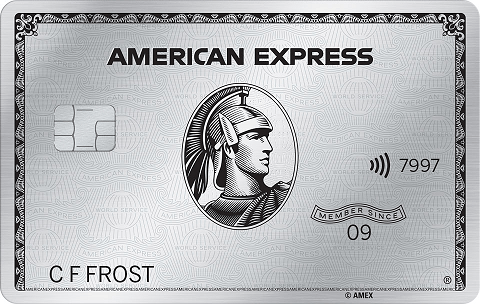
on American Express' website
Earn 60,000 bonus points after you spend $4,000 on purchases in the first 3 months from account opening. That's $750 when you redeem through Chase Travel℠.
Enjoy a one-time bonus of 75,000 miles once you spend $4,000 on purchases within 3 months from account opening, equal to $750 in travel.
Receive 60,000 online bonus points - a $600 value - after you make at least $4,000 in purchases in the first 90 days of account opening.
Earn 80,000 Membership Rewards® Points after you spend $8,000 on purchases on your new Card in your first 6 months of Card Membership. Terms Apply.
• Get 25% more value out of your points when you book cruises through Chase.
• Book with your card to get automatic travel protections for your cruise.
• Redeem miles as a statement credit to cover spending on cruises.
• Book with your card to get automatic travel insurance coverage for your cruise.
• Earn 2x points on travel spending, including cruises and some ship excursions.
• Book with your card to get trip delay reimbursement, trip cancellation coverage and other travel assistance services.
• Get American Express Cruise Privileges Program benefits when you book at least five nights with eligible cruise lines.
• Cruise program benefits include $300 credit redeemable toward dining and spa services plus amenities like wine, chocolates and champagne.
Terms apply.
There are many more credit cards that offer travel insurance so if you're thinking about relying on a card to protect your cruise, it can be a good step to get familiarized with your options so the your trip is covered.
You can also purchase a standalone travel insurance policy if you feel that the protections provided by the card aren't sufficient. Either way, being aware of your options can bring some peace of mind, and not having to bring a passport to one of these destinations can make going on the trip even simpler.
Yes, there are several cruises without passport requirements that you can book. This is welcome news for those whose passports may have expired, for families who want to opt out of buying short-term passports for children , or haven't had a chance to renew their passport.
However, it is preferable to have a passport with you (in the event you need medical care and have to stay in the country, for example). Being aware of your travel insurance options can also be a smart money move. Also check if the credit card you already have offers travel insurance or consider getting a card that includes this coverage for free.
A cruise is an easy way to visit many new places without having to unpack and pack again. When you discover a place you want to return to, you can plan another trip, perhaps with a new passport in hand.
AMERICAN EXPRESS DISCLAIMERS
Insurance Benefit: Trip Delay Insurance
Up to $500 per Covered Trip that is delayed for more than 6 hours; and 2 claims per Eligible Card per 12 consecutive month period.
Eligibility and Benefit level varies by Card. Terms, Conditions and Limitations Apply.
Please visit americanexpress.com/benefitsguide for more details.
Underwritten by New Hampshire Insurance Company, an AIG Company.
Insurance Benefit: Trip Cancellation and Interruption Insurance
The maximum benefit amount for Trip Cancellation and Interruption Insurance is $10,000 per Covered Trip and $20,000 per Eligible Card per 12 consecutive month period.
How to maximize your rewards
You want a travel credit card that prioritizes what’s important to you. Here are our picks for the best travel credit cards of 2024 , including those best for:
Flexibility, point transfers and a large bonus: Chase Sapphire Preferred® Card
No annual fee: Bank of America® Travel Rewards credit card
Flat-rate travel rewards: Capital One Venture Rewards Credit Card
Bonus travel rewards and high-end perks: Chase Sapphire Reserve®
Luxury perks: The Platinum Card® from American Express
Business travelers: Ink Business Preferred® Credit Card
1x-5x 5x on travel purchased through Chase Travel℠, 3x on dining, select streaming services and online groceries, 2x on all other travel purchases, 1x on all other purchases.
60,000 Earn 60,000 bonus points after you spend $4,000 on purchases in the first 3 months from account opening. That's $750 when you redeem through Chase Travel℠.
1.5x-2x Earn unlimited 2 points for every $1 spent on travel and dining purchases and unlimited 1.5 points for every $1 spent on all other purchases.
60,000 Receive 60,000 online bonus points - a $600 value - after you make at least $4,000 in purchases in the first 90 days of account opening.


- Get a Passport
- Renew a Passport
- Get a Passport Fast
- Courier Services
- Passport Information
Passports for Closed Loop Cruise
by ML (Eden Prairie, MN )
Return to Passports for Cruises.
More Passport & Travel Information
Top 5 questions about expedited passport couriers.
1. How can you get a passport when you're in a hurry? 2. What exactly does a passport expediter do? 3. Are passport expediting services legitimate? 4. How can I identify a reliable passport expeditor? 5. Is expedited passport service worth it?

Get the Latest Updates

10 tropical destinations you can visit without a US passport
A trip to the tropics is one of the best family vacation ideas any time of the year, but many tropical destinations can’t be accessed without a passport. And while in an ideal world everyone in the family would have valid passports ready at any moment, that's not always possible − especially with busy work and school schedules, historically long wait times for passports, and kids needing new passports every five years.
I've heard countless stories of people postponing or canceling family vacations because they discovered their passports were expired or damaged. Even those with valid passports may find they can’t travel because their passports expire within three to six months, which could prevent entry in many countries.
For my family, fears of delays in issuing new passports are already getting in the way of planning a tropical vacation abroad for spring break , so we're turning instead to tropical vacation spots that do not require a U.S. passport. Fortunately, there are a lot more than you might expect. Some are easier to reach than others, but it’s always good to know all of your choices. Here are the best options.
Start the day smarter. Get all the news you need in your inbox each morning.
NO PASSPORT NEEDED: 21 best all-inclusive family resorts in the U.S.
The islands of Hawaii are probably the first passport-free tropical destination that comes to mind for many families. Legendary for their beauty, rich culture and hospitality, they're also far-flung enough from the mainland to feel like a genuine tropical vacation despite being one of the 50 United States. That means U.S. citizens not only don’t need a passport to enter, but the islands are also easy to get to, with loads of direct and nonstop flights from all across the country. Hawaii has near-perfect summer-like weather all year long, making it the perfect tropical destination any time of year.
ALOHA STATE: 6 Hawaii family resorts that are nearly all-inclusive
Although there's no shortage of incredible family resorts in Hawaii , the idea of being able to have cultural experiences on-site is very appealing to me, because I always try to expose my family to the local culture wherever we go. In that sense, Outrigger Reef Waikiki Beach Resort on Oahu is a good choice for its immersive cultural experiences and gorgeous beachfront location. A stay at the resort includes access to a team of "Aunties" and cultural experts ready to "talk story" about Hawaiian history and culture. The resort also hosts performances by local Hawaiian musicians, holds Hula lesions, and offers traditional bamboo printmaking experiences.
On Maui, the Wailea Beach Resort − Marriott, Maui is the place to stay if you want to be as close as possible to the island’s golden-sand beaches. Your family will love the resort's four distinct pools, including Hawaii’s longest resort waterslide. The resort also features a game room and arcade, family-friendly dining, watersports and plenty of cultural events.
On the Big Island, the Waikoloa Beach Marriott Resort & Spa is a great choice. The resort features cultural activities and has a strong focus on giving back to the residents of Hawaii. Kids will love the infinity pool, waterslide and water sports. There's also a heated children’s pool for the little ones.
The easiest passport-free tropical destination for most Americans to reach is sunny Florida. Much of the state has tropical weather all year long. The Sunshine State also boasts resorts that rival those found on the Caribbean islands . Key West, Marco Island, and Orlando are just a couple of Florida destinations well worth a visit.
My family is partial to Orlando because it has a good mix of resorts with fantastic on-site pools and activities. Hanging out poolside is a great way to enjoy Florida’s tropical weather, and we enjoy the town’s amusement parks . The beaches of Key West are also a personal favorite and, like much of the state, make for great family beach vacations .
FLORIDA FUN: 7 best Florida all-inclusive resorts for families
In Orlando, my family loves the JW Marriott Grande Lakes . The hotel’s lazy river and epic waterslides are the perfect complement to Florida’s tropical weather. The JW Marriott Bonnett Creek is another great choice. A highlight of a stay here for my family was that my kids got to enjoy the hotel's kids club, complete with a rooftop climbing wall, mini-golf course and playground, while I enjoyed an adult dinner and drinks.
In Key West, just 90 miles from Cuba, the Havana Cabana is a fun family hotel with daily pool parties, poolside popsicles and complimentary snacks in the lobby. This hotel has the largest pool in Key West, so there's plenty of room for everyone to splash the day away.
3. Closed-loop cruises
Many closed-loop cruises don't require U.S. passports. Closed-loop cruises begin and end at the same port within the United States and stay solely within the Western Hemisphere. For example, if your cruise starts and ends in Miami with a stop in the Bahamas, it is probably a closed-loop cruise.
Even on a closed-loop trip, some form of government identification will be required to board the cruise ship and to go on land excursions, but it doesn’t have to be a passport. For example, birth certificates for children might be acceptable. It’s important to check with your cruise line before booking to make sure that you have documentation that will be accepted for your cruise.
FAMILY CRUISES: Kids sail free on these 7 family-friendly cruise lines
While a closed-loop cruise may seem like an attractive option, it’s important to know the risks. If anyone in your family becomes sick and needs to seek medical care off the ship or if you need to leave a cruise early, you may find yourself in big trouble and unable to respond appropriately without valid passports. This is not a risk I would take with my family, but it is an option for those with a higher risk tolerance than me.
Most major family cruise lines have some closed-loop routes, including Royal Caribbean and Disney Cruise Line . It’s extremely important to verify both that your cruise is closed-loop and what type of documentation you need before booking if you won’t have a valid passport at the time of sailing.
4. St. Croix, U.S. Virgin Islands (USVI)
Americans can access three U.S. Virgin Islands without a passport. Traveling around the USVI is easy because most residents speak English and the islands use the U.S. dollar as their official currency. And especially for East Coast families like mine, any of the U.S. Virgin Islands are easier to get to than Hawaii.
CLOSE TO HOME: 19 best family resorts and hotels in the USA
St. Croix is the most far-flung USVI, and it feels like a different world. The island isn't full of large resorts, which makes it a good choice if your family prefers to get out instead of lounging at the pool every day. St. Croix is home to fantastic scuba diving and snorkeling, though, plus four national parks, mangrove estuaries accessible only by kayak, sugar plantations and a historic downtown. You might be particularly interested in visiting St. Croix for a nighttime bioluminescence tour in Salt River Bay, one of only seven full-time bioluminescent bays worldwide.
Stay at the Buccaneer Beach and Golf Resort , the first hotel built and operated by a St. Croix family. A building has stood on the land since 1653 and The Buccaneer has operated as a hotel since 1922. The hotel has family cottage suites and lots of activities for kids, including complimentary water sports, a private beach stocked with games, and beach toys. It also hosts local musicians, traditional fire dancers and Caribbean stilt walkers.
5. St. John, U.S. Virgin Islands (USVI)
St. John is also part of the U.S. Virgin Islands, and more than 60% of the island is a protected part of the national park system. I visited St. John when my son was an infant and I was taken aback by the island's beauty. I'm anxious to return now that my children are older and can engage in more activities.
WORTH THE TRIP: These 10 hotels have incredible suites that will wow the whole family
Exploring the St. John national park is a highlight of any visit. Trunk Bay is a gorgeous beach, and Trunk Bay Underwater Snorkel Trail is an easy and kid-friendly introduction to snorkeling and spotting marine life. On St. John, you can also hike through a tropical forest to the ruins of a sugar mill, with a short side trail bringing you to see petroglyphs that are more than 1,000 years old.
I have two recommendations for where to stay on St. John. If ocean views, a pool and easy access to the beach are your priority, consider Morningstar Buoy Haus Beach Resort . If you'd prefer to be immersed in St. John's tropical national park, book a stay at Cinnamon Bay Beach and Campground . The campground is in the heart of the park and even has simple cabins for tent-averse people like me.
6. St. Thomas, U.S. Virgin Islands (USVI)
Just a short ferry ride from St. John is St. Thomas, which makes it simple to hit two of the three U.S. Virgin Islands on the same trip. When I took the ferry on a previous visit, the ride lasted about 20 minutes each way and was a fun part of the experience. Charlotte Amalie, the pastel-colored capital of the USVI, is on St. Thomas.
TROPICAL TRIPS: 8 all-inclusive family resorts for a tropical winter escape
It's great for shopping, but your family may be more interested in visiting the Pirate Treasure Museum . There's also loads of pristine beaches and plenty of opportunities for hiking, snorkeling and kayaking here, but I'd recommend staying on St. John and making a day trip of St. Thomas. That way you get to visit two tropical islands in one go without ever having to switch hotels.
7. Puerto Rico
My favorite family vacations involve a mix of adventure and relaxation, and that's exactly what you get in Puerto Rico. You don't need a passport to visit, but if you've never been there, then that's more of a perk than the whole reason to go. When we talk about Puerto Rico, many people assume it's just one island, but actually it's an archipelago comprising more than 140 islands, of which Puerto Rico (the island itself) is the largest.
NO HIDDEN FEES: 8 best Puerto Rico all-inclusive resorts for families
Puerto Rico has it all: big cities, tranquil beaches and plenty of history. Historic Old San Juan is full of colorful Spanish buildings, two centuries-old forts, and an arts district. By night, Vieques' Mosquito Bay glows an incredible shade of blue thanks to the bioluminescent organisms that live in the bay. Vieques is one of the offshore islands, easily accessible by ferry as a day trip. Another highlight of Puerto Rico is El Yunque National Forest, the only tropical rainforest in the U.S. National Park system.
Stay at Caribe Hilton in San Juan, where the kids will delight at the property's peacocks, underwater helmet diving, on-site playground, secluded beach, oceanfront swimming pools and on-site water activities. Interested families can become a Manatee Caretaker for a Day at the resort’s manatee conservation center. The Hyatt Regency Grand Reserve Puerto Rico is another family-friendly hotel option and has been named by FamilyVacationist as one of the best resorts in the world for multigenerational family vacations . It has El Yunque as a backdrop and boasts three pools, including a children’s pool and a huge lagoon-style pool.
8. American Samoa
American Samoa is an unincorporated territory of the United States that sits in the South Pacific. The chain of five islands sits about halfway between Hawaii and New Zealand. Its remote location makes American Samoa difficult for most mainland Americans to access, but because Hawaii is the closest point in the United States to American Samoa, it's feasible to add a trip to American Samoa onto a trip to Hawaii if you have an extended period of time to travel.
SUN AND SAND: 11 best all-inclusive beach resorts in the world
Those who do make it deep into the South Pacific are rewarded with a passport-free tropical vacation rich in Polynesian culture. Believed to be home to the oldest Polynesian culture in the region, American Samoa is a fantastic place to learn about the traditional Polynesian way of life. The National Park of American Samoa is a draw, too. It features fruit bats, a coral reef and a World War II heritage trail.
There aren’t many hotels in American Samoa, but the Tradewinds Hotel is one of the nicest. It’s a good base for exploring the beaches and jungles of American Samoa. The hotel has a pool and easy beach access.
Guam is a small U.S. territory in Micronesia in the Western Pacific. It has a tropical climate, but before planning a trip be aware of the island’s long rainy season from July to December (dry season is roughly January to June ). Guam's size means nowhere on the island is too far away. By some measures, it's home to the largest mountain in the world, Mount Lamlam. Families who visit can hang out at the beach, dive and enjoy the island's warm culture.
GO BIG: 10 luxury Caribbean resorts for a splurge family vacation
Guam also has several family-friendly resorts and hotels. The Hilton Guam Resort and Spa has a private beach and multiple pools. The Hyatt Regency Guam has three pools, waterslides and plenty of aquatic games.
10. Northern Mariana Islands
Just north of Guam in the Western Pacific lie the 22 Northern Mariana Islands. They're a Commonwealth of the United States, so American citizens can visit any of the islands without a passport. Of all the islands, Saipan draws the most tourists and is where most of the permanent residents of the Northern Mariana Islands live.
AROUND THE WORLD: 15 best all-inclusive family resorts in the world
You can visit Saipan’s beaches, dive or snorkel in Saipan’s legendary crystal-clear blue waters at the Grotto, take a day trip to Bird Island or Forbidden Island, or spend your days playing water sports on one of the islands' many beaches. The Hyatt Regency Saipan is an excellent choice for family accommodations. The resort has expansive tropical gardens, an enormous pool, and easy access to Saipan’s white-sand beaches and blue waters of the West Pacific. Kids will love the pool’s cascading waterfall and volleyball net.
10 passport-free tropical vacations for families originally appeared on FamilyVacationist.com.
More from FamilyVacationist:
- 10 best beach resorts in Florida for families
- 10 best Costa Rica all-inclusive resorts and beach hotels
- 13 best all-inclusive Mexico resorts for families
The views and opinions expressed in this column are the author’s and do not necessarily reflect those of USA TODAY. FamilyVacationist.com and TourScoop.com are owned and operated by Vacationist Media LLC. Using the FamilyVacationist travel recommendation methodology , we review and select family vacation ideas , family vacation spots , all-inclusive family resorts , and classic family vacations for all ages. TourScoop covers guided group tours and tour operators , tour operator reviews , tour itinerary reviews and travel gear recommendations .
This article originally appeared on USA TODAY: 10 tropical destinations you can visit without a US passport
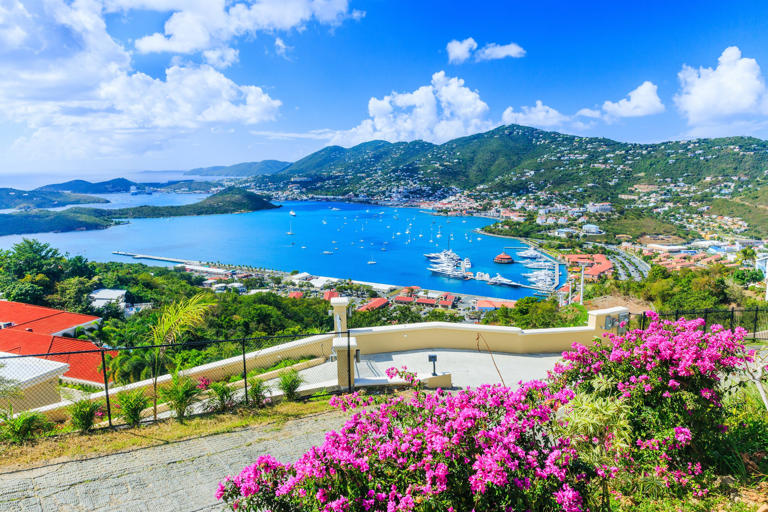

City Politics | Norfolk cruise center getting multiple upgrades…
Share this:.
- Click to share on Facebook (Opens in new window)
- Click to share on X (Opens in new window)
e-Pilot Evening Edition
- Latest Headlines
- Environment
City Politics
City politics | norfolk cruise center getting multiple upgrades ahead of year-round traffic.

NORFOLK — City Council voted Tuesday to approve enhancements to the Half Moone Cruise and Celebration Center in anticipation of becoming a year-round cruise destination in 2025.
The changes are huge, said Stephen Kirkland, who runs the cruise terminal as the executive director of Nauticus.
“A cruise ship will be here every single week, embarking and debarking passengers, and we need to be prepared for that heightened activity,” Kirkland said.
Starting Feb. 15, Carnival Sunshine will begin its weekly cruises leaving from Norfolk. The 12-deck ship is 893 feet long and can carry over 3,000 passengers — leading to a turnover of more than 6,000 people when the ship is at full capacity, setting sail and returning in a single day.
Modifications to the terminal include expanding the walkway from Waterside Drive , adding a circular drop-off lane, a revised bus lane and canopies for passengers — changes that will enhance pedestrian and vehicle circulation downtown. The city earmarked $12 million for the project.
The most advantageous change, according to Kirkland, is a sloped walkway from the first to second floor that will allow guests exiting the ship to move quickly downstairs to go through customs, collect their luggage and make their way to the ground transportation loop.
“The quicker and more efficient we can be with that process, the better the whole day is,” Kirkland said. “That allows us to embark sooner which allows that ship to set sail on time.”
Currently, there’s one elevator, one escalator and a set of stairs connecting the first and second floor.
Construction on the enhancements is due to begin in June, but additional cruise traffic from ships diverted by the Francis Scott Key bridge collapse in Baltimore has added complications: the terminal was supposed to be closed for 14 months at the conclusion of the 2023 season.
Those ships originally bound for Baltimore will not delay the construction schedule, Kirkland said. Half Moone cruise terminal had a “window” during which it was able to support Royal Caribbean and Carnival with diverted ships, but those ships will not continue to arrive after construction begins in June.
With Norfolk set to become a year-round home port for the world’s largest cruise line, passengers are anticipated to travel from across the country to catch their ship. That brings economic impact in the form of more flights to Norfolk, hotel stays the night before and after the voyage, restaurants, transportation and more.
“That’s a big deal for us as a community. It’s a game changer,” Kirkland said.
Cianna Morales, 757-957-1304, [email protected]
More in City Politics

Entertainment | Audacy’s Oceanfront Concerts draws small but lively crowd: ‘Everybody’s out here having fun.’

City Politics | Newport News to build new $40 million state-of-the-art Grissom Library

City Politics | Ousted Portsmouth assessor sues for wrongful termination, alleges firing over golf course taxes

News Obituaries | Roy Hudson, 10th president of Hampton University, dies at age 93
Trending nationally.
- A woman had a hysterectomy. She claims her co-workers harassed her about a ‘sex change’
- 20 least-affordable US cities to buy a home are all in California
- High school athletic director used AI to fake racist recording of principal, police say
- Disneyland adds another potential themed land to the mix: Encanto
- Barbra Streisand drops first new song in 6 years in response to rise in antisemitism

IMAGES
VIDEO
COMMENTS
Consider a cruise. If you take closed loop cruises (meaning your trip begins and ends at a U.S. port), you can sail to a variety of dreamy destinations as a U.S. citizen without a passport. For "closed-loop" cruises, U.S. citizens will need to provide: A boarding pass; A government photo I.D. if 16 years of age or older
A closed-loop cruise is a cruise that departs and ends in the same U.S. port, for example, Fort Lauderdale to Fort Lauderdale, or round-trip to Alaska from Seattle. These cruises have to meet certain criteria to qualify. Every voyage on a ship that's not U.S. flagged, departing from and returning to a U.S. port must, according to maritime law ...
What Is a Closed Loop Cruise? You might have heard the term "closed loop cruise" in reference to a sailing and wondered what it meant. While it does have to do with the ports on the itinerary ...
Closed-loop cruises are those that start and end at the same U.S. port and travel within the Western Hemisphere. U.S. citizens booked on those sailings can leave and enter the country with proof ...
Closed-Loop Cruises: Popular Port Cities from the United States . U.S. departure ports are plentiful, from coast to coast. The most popular port cities on the East Coast are Miami and Fort Lauderdale in Florida, the Port of Miami, and Port Everglades, respectively.
What Is a Closed Loop Cruise? Closed-loop cruises start and finish at the same United States port. Cruises that don't begin and end in the same port are not considered closed-loop cruises.
All closed loop cruises are round-trip cruises from the same port in the United States. Places You Can Go on a Closed Loop Cruise (Without a Passport) Even though closed loop cruises can't take you wherever you want to go, the destination choices may be more diverse than you'd expect. From the beaches of the Bahamas to the wilderness of ...
A closed-loop cruise is a cruise that departs from and returns to the same U.S. port and remains in the Western Hemisphere. As such, it does not require the passengers to have a U.S. passport—even if the itinerary visits some international ports along the way. According to U.S. Customs and Borders Protection (CBP), rules established by the ...
A cruise that starts and ends in different ports in the United States (such as Miami and Fort Lauderdale) is not considered a closed-loop trip. Typically, a closed-loop cruise would leave from Miami, Florida, make her way to Bermuda and the Caribbean, and then return to Miami. Miami, Florida, is home to an MSC cruise ship.
A closed-loop cruise begins and ends in the same U.S. port. For example, an itinerary beginning and ending in Miami, Florida, or a round-trip sailing from Seattle, Alaska. A cruise that begins in one U.S. port (say Miami) and ends in another (Fort Lauderdale) is not a closed-loop cruise. A typical closed-loop cruise might depart from Miami ...
A closed loop cruise refers to a roundtrip journey where the cruise ship departs from and returns to the same port. Unlike open-jaw cruises that start and end in different ports, closed loop cruises allow passengers to board and disembark at the same location. There are several benefits to choosing a closed loop cruise.
Closed loop cruises are a specific category of cruise that makes it a bit easier to cruise. There are so many potential destinations that you could do 10 or 20 closed-loop cruises that were all different. Consider Alaska, the Caribbean, Mexican Riviera, or even a partial world cruise. All of these can be compliant with WHTI's guidelines if ...
A closed loop cruise, also known as a round trip cruise, is a type of cruise that departs from and returns to the same port. This means that passengers embark on the cruise at a specific port, explore various destinations, and ultimately return to the original port of departure. It offers a convenient and hassle-free way to travel and see ...
The U.S. Department of State Bureau of Consular Affairs recommends all travelers departing from the U.S. have a passport book in hand. The exception to this rule is the closed-loop cruise. Ships within this category must satisfy strict regulations to achieve closed-loop status. Once they do, it's a cruise option that can be a viable solution ...
What is a Closed-Loop Cruise? A very specific type of cruise, however, is a "closed-loop voyage." It has several benefits that frequent travelers and cruise fans want to know about. As the name suggests, a closed-loop voyage or cruise begins and ends in the United States.
Closed-loop cruises are those that depart from and return to the same U.S. port. Excursions of this kind may range from a round-trip from Seattle to Alaska to a cruise from Fort Lauderdale to Fort Lauderdale. These cruises need to meet a slew of criteria before being accepted. According to maritime law, any trip on a ship that is not flagged by ...
U.S. citizens on closed-loop cruises (cruises that begin and end at the same U.S. port) are able to enter the United States with a birth certificate and government-issued photo ID. Please be aware that you may still be required to present a passport to enter the countries your cruise ship is visiting. Check with your cruise line to ensure you ...
A closed-loop cruise to this part of the map often means flying to Honolulu, which you can do passport-free, but airfare can be pricey. Closed-loops from the West Coast are also available, but ...
A closed-loop cruise is a round-trip cruise that starts and ends at the same U.S. port. Open-jaw cruises, on the other hand, are itineraries that begin and end at different ports, either within the same country or in different countries.
Closed-loop cruise: A closed-loop cruise typically doesn't require a passport since it begins and ends in the same U.S. port (though there are some exceptions to this rule).
U.S. citizens on closed-loop cruises: U.S. citizens on cruises in the Western Hemisphere that originate and terminate in the same U.S. port are required to have proof of citizenship such as a valid U.S. passport or a government issued birth certificate combined with a government issued photo I.D. Other approved proof of citizenship documents ...
Closed-loop cruises that depart and end in the U.S. negate the need for a passport (despite stops in Canadian ports), and like Alaskan cruises, one-way sailings remain an option if you choose to ...
The U.S. Customs and Border Protection states, "U.S. citizens on closed-loop cruises (cruises that begin and end at the same U.S. port) will be able to enter or depart the country with a birth certificate and government-issued photo ID. Please be aware that you may still be required to present a passport to enter the countries your cruise ship ...
Closed-loop cruises begin and end at the same port within the United States and stay solely within the Western Hemisphere. For example, if your cruise starts and ends in Miami with a stop in the ...
But additional cruise traffic from ships diverted by the Francis Scott Key bridge collapse in Baltimore have added complications: the terminal was supposed to be closed for 14 months following the ...